Save 10% off with promo code: WINTER24
Missing Tooth Grins
A Smile For Every Lesson Plan

How To Teach Problem And Solution
Lesson plans on problem and solution.
Finding lesson plans on problem and solution can be tricky, but with the right activities, it’s a fun unit to teach! These engaging, fun lessons and activities are a great way to teach problem and solution to your students.
Plan your entire Problem And Solution Reading Unit in a snap! Click here to save time planning with these problem and solution activities.
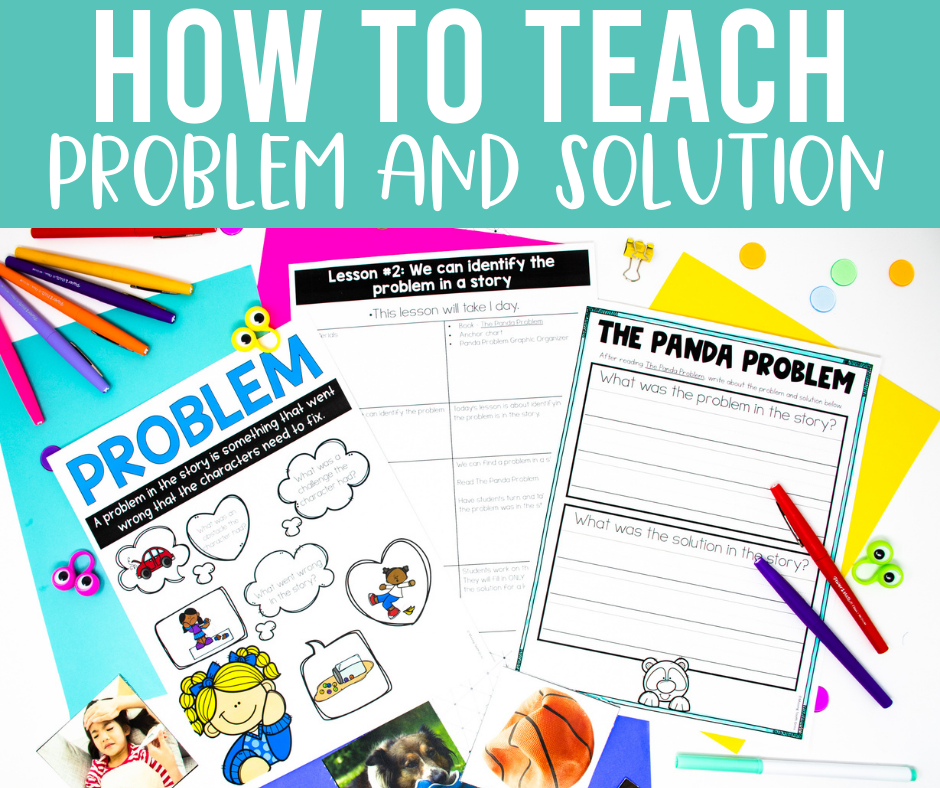
Why Teach Problem and Solution?
We know it’s important for students to identify the problem and solution in the story, but why should we teach it? Teaching our students the different components of fiction texts is important so they can think and dig deeper into what they are reading. They go from just reading words to thinking more about what is actually happening to the characters, what would they do in this situation, etc.
What Does Problem and Solution Mean?
We want to teach our students that the problem in the story is what went wrong and the solution is how the problem was fixed. Here are some important questions we can ask our students while we are reading a text:
- What is the character upset about?
- How did the story change?
- What went wrong in the story?
- Could the problem have been avoided? How?
- How was the problem solved?
- What were the steps taken to solve the problem?
- How would you have solved the problem?
Use Visuals
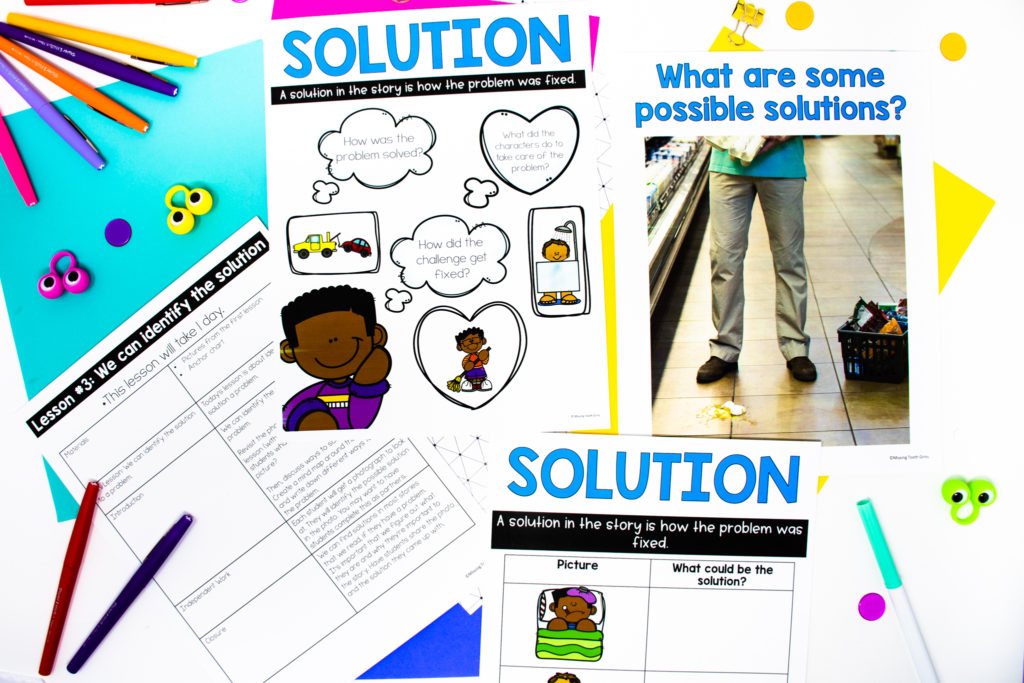
Using visuals while we teach is important, especially for kids that identify as visual learners. Having a visual, like an anchor chart, helps students see and remember what they are learning.
I also like to use movement anytime I teach a comprehension skill. For example, when teaching students to make connections, they make a pinky promise when they have a connection to the story . When teaching problem and solution, I’ll have students make a thumb to the side, and then for the solution, they’ll make a thumbs up.
Use Engaging Activities Your Students Will Love
When planning a reading unit, finding engaging activities that your students will remember is key .
Become Problem Solvers
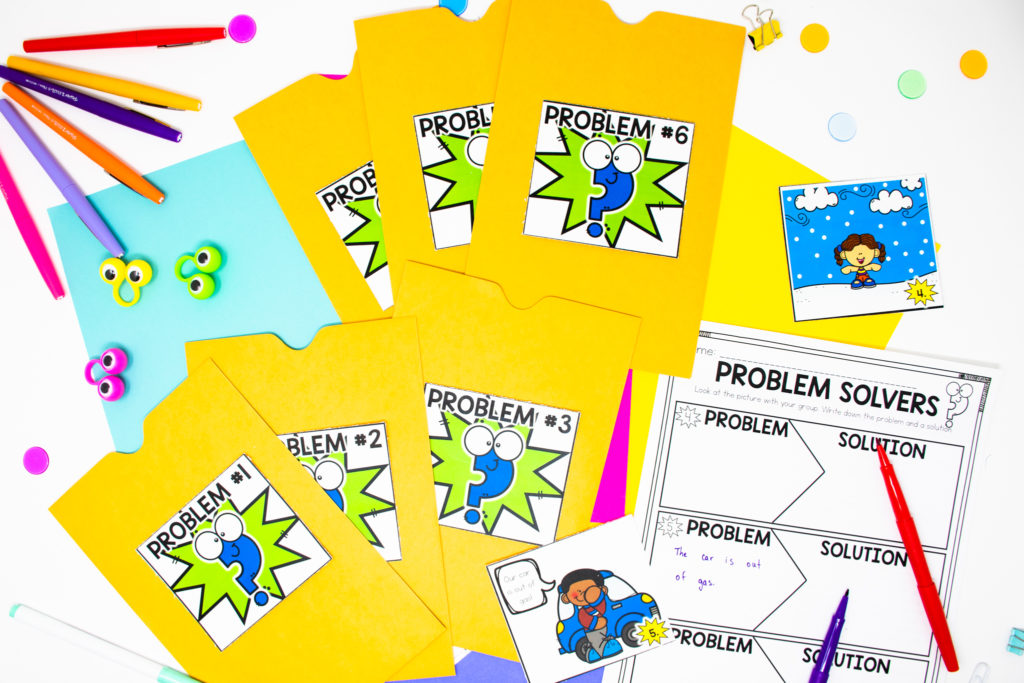
With this activity, hide a problem picture inside each manila envelope. In groups, students will take the problem out of the envelope, and together, they’ll discuss what the problem is. Then, they’ll come up with the best solution for that problem. Groups of students will do all six envelopes together. They will love this detective work!
New Character Problems
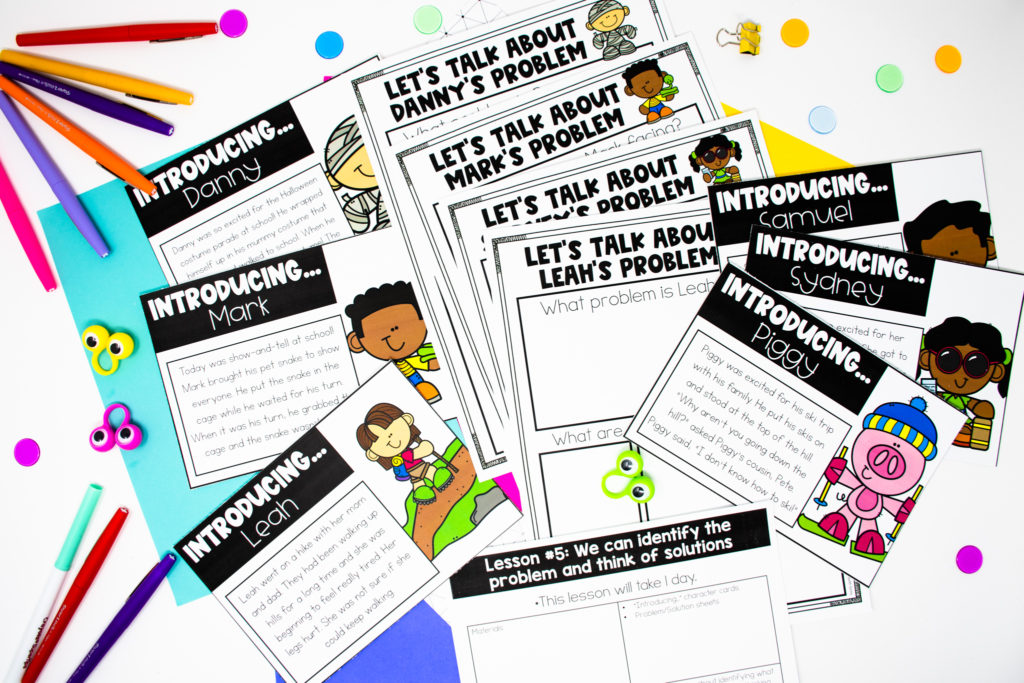
Exposing our students to different characters and stories is important too. These character cards introduce new characters and then as a class, students discuss the problem and then come up with possible solutions.
Use Reading Centers
Using reading centers that go with your reading comprehension skill help reinforce what your students are learning in class. These are great extension activities to continue to learn and practice their new knowledge. Students will love using these problem and solution centers independently or in your small group.
In this fun center, students will match the problem to the solution. Visuals and text are included.
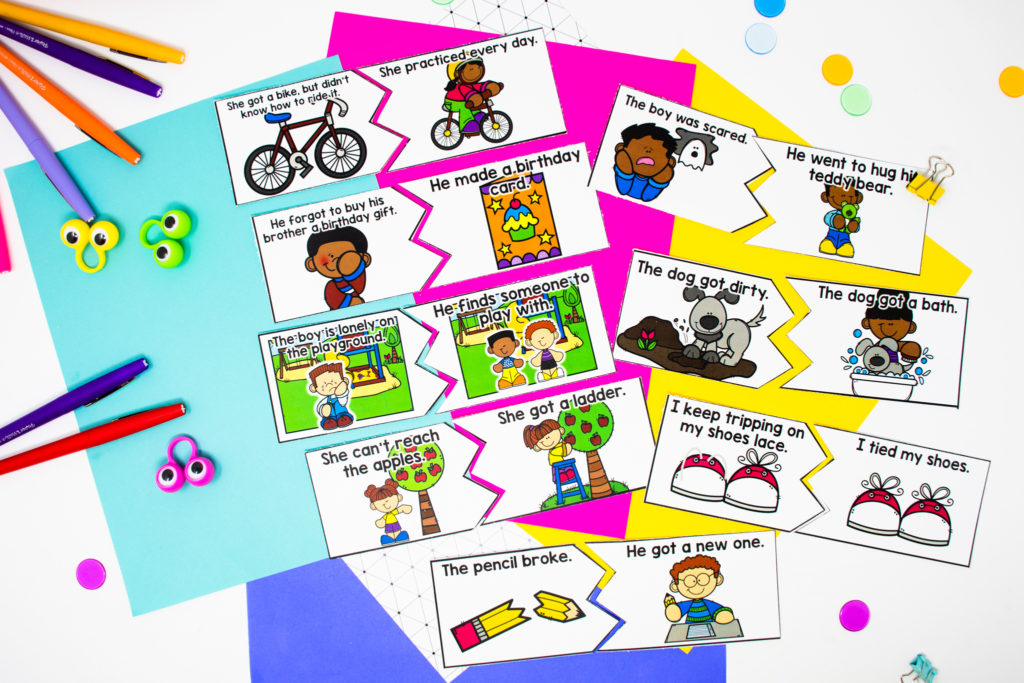
Find The Solution
This center is a fun one and would work wonderfully as a guided reading warm-up too. Students read the sentence and then move the picture that matches the solution.
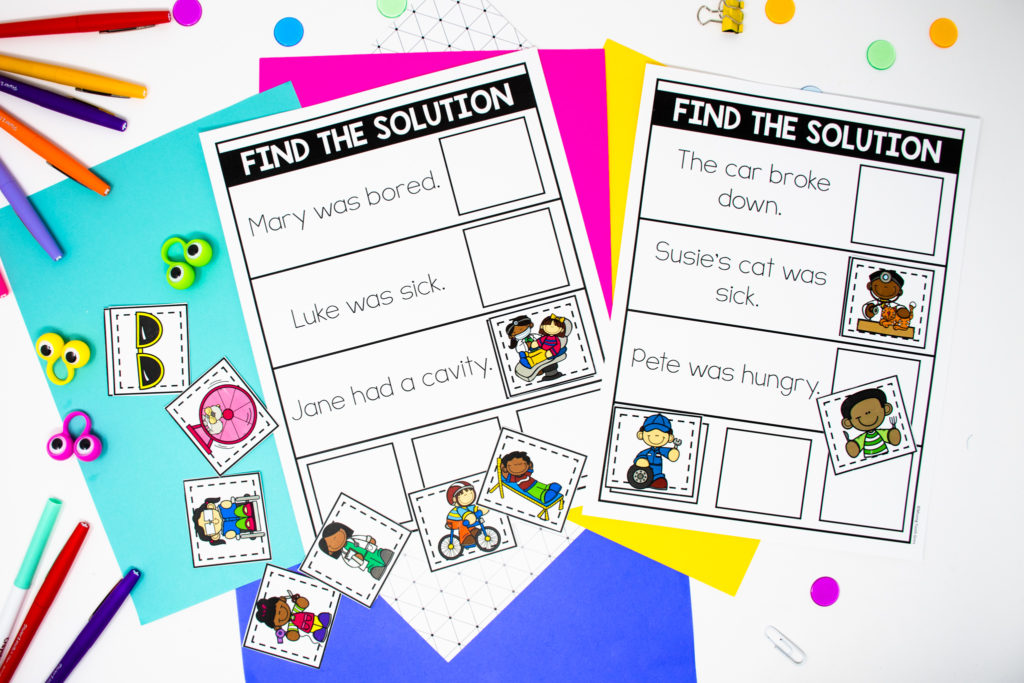
Students love sorting games. In this activity, students will look at the problem and then match it to the solution. They will then put the problem card under the “Problem” heading and the solution card under the “Solution” heading.
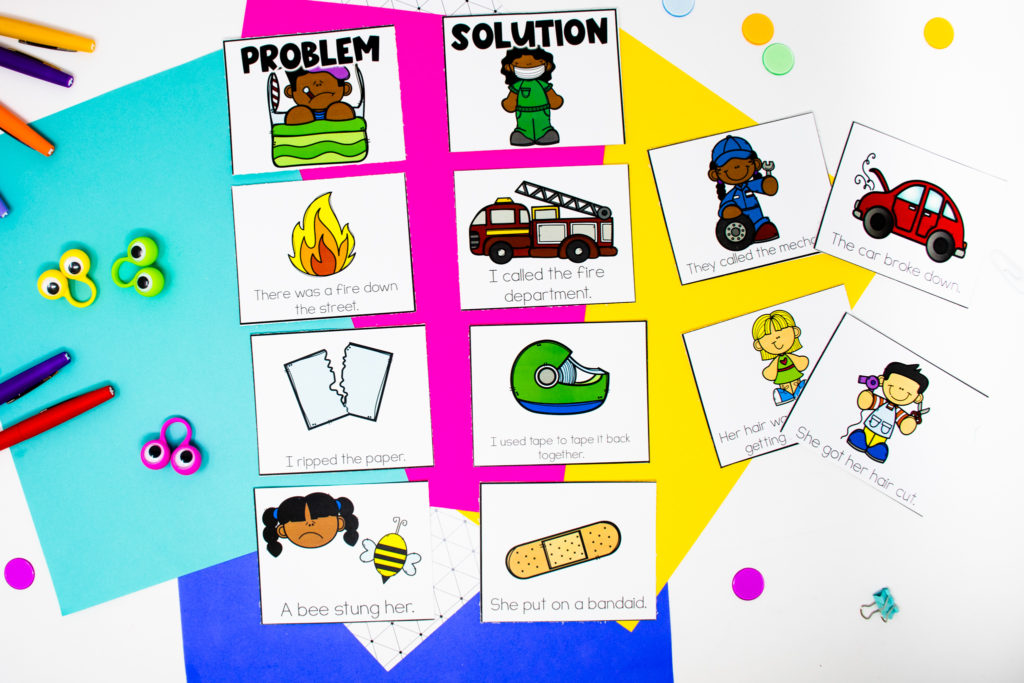
Graphic Organizers and Flipbooks
Teaching students to write about their reading is important, even in the younger grades. This is another step to help them comprehend the story.
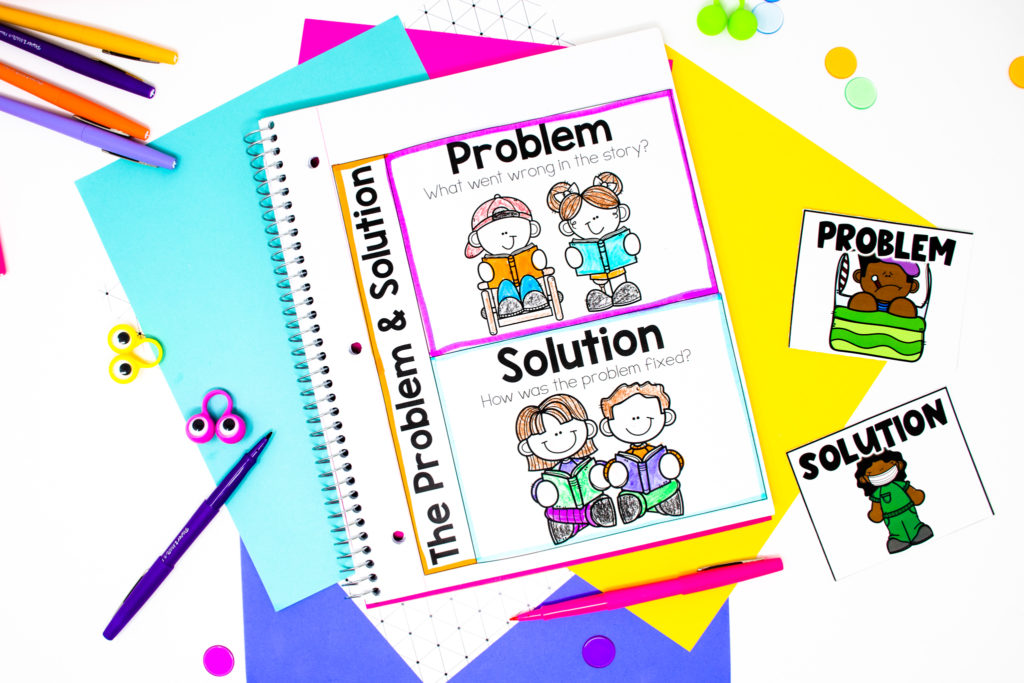
Let us do the planning for you!
Do you want your lesson plans completely finished, with reading passages, a craftivity, assessments, centers, and more? Don’t worry- we have you covered! Plan your entire problem and solution reading unit here!
But wait….grab a FREE problem + solution game too!

Quick Links
- Resource Library
- Refund and Returns Policy
- Privacy Policy
Join for Free Resources

Teaching Resources

Center for Teaching
Teaching problem solving.
Print Version
Tips and Techniques
Expert vs. novice problem solvers, communicate.
- Have students identify specific problems, difficulties, or confusions . Don’t waste time working through problems that students already understand.
- If students are unable to articulate their concerns, determine where they are having trouble by asking them to identify the specific concepts or principles associated with the problem.
- In a one-on-one tutoring session, ask the student to work his/her problem out loud . This slows down the thinking process, making it more accurate and allowing you to access understanding.
- When working with larger groups you can ask students to provide a written “two-column solution.” Have students write up their solution to a problem by putting all their calculations in one column and all of their reasoning (in complete sentences) in the other column. This helps them to think critically about their own problem solving and helps you to more easily identify where they may be having problems. Two-Column Solution (Math) Two-Column Solution (Physics)
Encourage Independence
- Model the problem solving process rather than just giving students the answer. As you work through the problem, consider how a novice might struggle with the concepts and make your thinking clear
- Have students work through problems on their own. Ask directing questions or give helpful suggestions, but provide only minimal assistance and only when needed to overcome obstacles.
- Don’t fear group work ! Students can frequently help each other, and talking about a problem helps them think more critically about the steps needed to solve the problem. Additionally, group work helps students realize that problems often have multiple solution strategies, some that might be more effective than others
Be sensitive
- Frequently, when working problems, students are unsure of themselves. This lack of confidence may hamper their learning. It is important to recognize this when students come to us for help, and to give each student some feeling of mastery. Do this by providing positive reinforcement to let students know when they have mastered a new concept or skill.
Encourage Thoroughness and Patience
- Try to communicate that the process is more important than the answer so that the student learns that it is OK to not have an instant solution. This is learned through your acceptance of his/her pace of doing things, through your refusal to let anxiety pressure you into giving the right answer, and through your example of problem solving through a step-by step process.
Experts (teachers) in a particular field are often so fluent in solving problems from that field that they can find it difficult to articulate the problem solving principles and strategies they use to novices (students) in their field because these principles and strategies are second nature to the expert. To teach students problem solving skills, a teacher should be aware of principles and strategies of good problem solving in his or her discipline .
The mathematician George Polya captured the problem solving principles and strategies he used in his discipline in the book How to Solve It: A New Aspect of Mathematical Method (Princeton University Press, 1957). The book includes a summary of Polya’s problem solving heuristic as well as advice on the teaching of problem solving.

Teaching Guides
- Online Course Development Resources
- Principles & Frameworks
- Pedagogies & Strategies
- Reflecting & Assessing
- Challenges & Opportunities
- Populations & Contexts
Quick Links
- Services for Departments and Schools
- Examples of Online Instructional Modules

Language & Grammar

Science & Social Studies

Digital Learning
Engaging ways to teach problem & solution.

When talking about teaching story elements, it is important to note that each of the elements has essential parts. So, when we are teaching any of those elements, we must take a deeper look into the actual standard. Today, we are going to focus on teaching problem and solution, or what is referred to in Common Core terminology as “challenge” and “response.”
I like the terms challenge and response because they encourage us to look into the character over the actual events. How does the character respond to certain events? What are the actions, feelings, thoughts of a character that stem from an event in the story? In Kindergarten and 1st grades, students will be learning how to identify the major characters and events in a story. By 2nd grade, the focus will shift into character response and continues to dive deeper with 3rd and 4th, focusing on specific character feelings, thoughts, and actions. So, how do we teach this?
Make It Personal
Initially, you will want to make it personal. Allow students to connect to the concept by facilitating a discussion on challenges. Have students share with the class, or turn and talk about simple challenges they have faced and how they reacted to them.
Here are a few ideas to start with during the students’ turn and talk.
- Your pencil tip broke.
- You left your homework at school.
- Your science test is this Friday.
- You wake up with a fever.
- You spill juice in the living room.
These simple problems have fairly straightforward solutions. So, students will be able to build connections to the concept before diving into deeper challenges.
A simple t-chart could be made with some of your students’ scenarios as examples. Write the simple problem on the left and the simple solution on the right.
Then, Use Problem and Solution Scenarios

After discussing simple challenges/problems, your students will be ready to read short texts that contain a character facing a challenge. Allow students time to discuss the challenge and the character’s response to it. You can also continue your discussion from earlier, including larger challenges or problems.
Add to your anchor chart (or create a new one) noting the difference in simple problems and solutions and character challenges and responses. *This may be a time for you to discuss bigger challenges that your students have faced in their lifetimes, recalling how students may have responded differently. It is important for students to understand that different people/characters will respond differently to certain events. This is what helps us understand them.
Gather Books with a Strong Problem and Solution Plot

When teaching problem and solutions, read alouds are going to be essential. You will need to collect books that have a strong problem/solution or challenge/response plot. Look for books where the main character faces a clear and difficult challenge. One that allows us to see how the character acts, thinks, feels, etc.
Here are a few affiliate titles I suggest from Amazon!
- Ira Sleeps Over by Bernard Waber
- The Name Jar by Yangsook Choi
- Chrysanthemum by Kevin Henkes
- Harry the Dirty Dog by Gene Zion
- Jamaica’s Find by Juanita Havill
- Enemy Pie by Derek Munson
Each of these stories provides an opportunity for your students to look at character responses. They are great for group discussions about challenges and the different ways to face them.
Ask Students to Find Problem and Solution in Text

Subsequently, students will need to identify and describe the problem/solution within texts. When first learning the skill, students can illustrate what they think the problem and solution look like. Then, they can build their skills by writing their descriptions. The more opportunities students have with communicating their understanding, the better they will become. So, consider allowing them to do this multiple times before moving on.

Similarly, students will need to be able to read and comprehend fiction stories independently. So, the next step is for students to read on-level texts with comprehension questions. Printable or digital passages with skill-specific questions will be a huge help during this stage of the learning process. One of the great things about problem and solution practice is that, even in isolation, it can build students’ understanding of other elements like plot, character, theme, etc. So, include plenty of comprehension passages in your student practice activities.
Suggested Resource Focused on Problem and Solution

The second-grade standard, RL.2.3 is focused specifically on challenge and response. The unit above (some activities seen in the photos in today’s post) is complete with lesson plans, activities, graphic organizers, comprehension passages, task cards, and more, all focused on building this specific skill. However, each of the other grades contains an element of this skill within their own RL.3 standards. It is so important to ensure adequate practice and direct skill-focus for each of our grade levels!
- RL.2.3- Character Response Unit
Other Grade Level Units That Help Build/Continue Skill

- RL.K.3- Kindergarten
- RL.1.3- 1st Grade
- RL.3.3- 3rd Grade
- RL.4.3- 4th Grade
Want to read more about story elements? Check out these blog posts.
- 3 Engaging Story Elements Activities
- Characters- Story Elements Study
- Events- Teaching Events to Students
- All About Setting- Story Elements Study
- Story Elements- Teaching Tips
- Read more about: Common Core Aligned , Comprehension , Reading Blog Posts
You might also like...

3 Easy Times to Squeeze Speaking and Listening Skills into Your Day
In today’s blog post we will talk about incorporating speaking and listening skills in your elementary classroom! Finding time to focus on these crucial skills

Introduction to Fractions: Partitioning, Shares, and Fractions in 1st and 2nd Grade
Hello teachers! Welcome to today’s blog post, where we will dive into the fascinating world of fractions, tailored specifically for 1st and 2nd-grade classrooms. Fractions

Teaching Text Features in the Spring
This isn’t the first time we’ve discussed using the current season as a way to make your ELA content more engaging. Adding the element of
Join these happy teachers
Join the email list.
Get teaching tips, how-to guides, and freebies delivered right to your inbox every Wednesday!
Hi, I'm Jessica

I help elementary teachers master the standards by providing helpful standards-based tips, guides, and resources.

Let's Connect
Access your purchases
© Elementary Nest • Website by KristenDoyle.co

- Trying to Conceive
- Signs & Symptoms
- Pregnancy Tests
- Fertility Testing
- Fertility Treatment
- Weeks & Trimesters
- Staying Healthy
- Preparing for Baby
- Complications & Concerns
- Pregnancy Loss
- Breastfeeding
- School-Aged Kids
- Raising Kids
- Personal Stories
- Everyday Wellness
- Safety & First Aid
- Immunizations
- Food & Nutrition
- Active Play
- Pregnancy Products
- Nursery & Sleep Products
- Nursing & Feeding Products
- Clothing & Accessories
- Toys & Gifts
- Ovulation Calculator
- Pregnancy Due Date Calculator
- How to Talk About Postpartum Depression
- Editorial Process
- Meet Our Review Board
How to Teach Kids Problem-Solving Skills
KidStock / Blend Images / Getty Images
- Steps to Follow
- Allow Consequences
Whether your child can't find their math homework or has forgotten their lunch, good problem-solving skills are the key to helping them manage their life.
A 2010 study published in Behaviour Research and Therapy found that kids who lack problem-solving skills may be at a higher risk of depression and suicidality. Additionally, the researchers found that teaching a child problem-solving skills can improve mental health .
You can begin teaching basic problem-solving skills during preschool and help your child sharpen their skills into high school and beyond.
Why Problem-Solving Skills Matter
Kids face a variety of problems every day, ranging from academic difficulties to problems on the sports field. Yet few of them have a formula for solving those problems.
Kids who lack problem-solving skills may avoid taking action when faced with a problem.
Rather than put their energy into solving the problem, they may invest their time in avoiding the issue. That's why many kids fall behind in school or struggle to maintain friendships .
Other kids who lack problem-solving skills spring into action without recognizing their choices. A child may hit a peer who cuts in front of them in line because they are not sure what else to do.
Or, they may walk out of class when they are being teased because they can't think of any other ways to make it stop. Those impulsive choices may create even bigger problems in the long run.
The 5 Steps of Problem-Solving
Kids who feel overwhelmed or hopeless often won't attempt to address a problem. But when you give them a clear formula for solving problems, they'll feel more confident in their ability to try. Here are the steps to problem-solving:
- Identify the problem . Just stating the problem out loud can make a big difference for kids who are feeling stuck. Help your child state the problem, such as, "You don't have anyone to play with at recess," or "You aren't sure if you should take the advanced math class."
- Develop at least five possible solutions . Brainstorm possible ways to solve the problem. Emphasize that all the solutions don't necessarily need to be good ideas (at least not at this point). Help your child develop solutions if they are struggling to come up with ideas. Even a silly answer or far-fetched idea is a possible solution. The key is to help them see that with a little creativity, they can find many different potential solutions.
- Identify the pros and cons of each solution . Help your child identify potential positive and negative consequences for each potential solution they identified.
- Pick a solution. Once your child has evaluated the possible positive and negative outcomes, encourage them to pick a solution.
- Test it out . Tell them to try a solution and see what happens. If it doesn't work out, they can always try another solution from the list that they developed in step two.
Practice Solving Problems
When problems arise, don’t rush to solve your child’s problems for them. Instead, help them walk through the problem-solving steps. Offer guidance when they need assistance, but encourage them to solve problems on their own. If they are unable to come up with a solution, step in and help them think of some. But don't automatically tell them what to do.
When you encounter behavioral issues, use a problem-solving approach. Sit down together and say, "You've been having difficulty getting your homework done lately. Let's problem-solve this together." You might still need to offer a consequence for misbehavior, but make it clear that you're invested in looking for a solution so they can do better next time.
Use a problem-solving approach to help your child become more independent.
If they forgot to pack their soccer cleats for practice, ask, "What can we do to make sure this doesn't happen again?" Let them try to develop some solutions on their own.
Kids often develop creative solutions. So they might say, "I'll write a note and stick it on my door so I'll remember to pack them before I leave," or "I'll pack my bag the night before and I'll keep a checklist to remind me what needs to go in my bag."
Provide plenty of praise when your child practices their problem-solving skills.
Allow for Natural Consequences
Natural consequences may also teach problem-solving skills. So when it's appropriate, allow your child to face the natural consequences of their action. Just make sure it's safe to do so.
For example, let your teenager spend all of their money during the first 10 minutes you're at an amusement park if that's what they want. Then, let them go for the rest of the day without any spending money.
This can lead to a discussion about problem-solving to help them make a better choice next time. Consider these natural consequences as a teachable moment to help work together on problem-solving.
Becker-Weidman EG, Jacobs RH, Reinecke MA, Silva SG, March JS. Social problem-solving among adolescents treated for depression . Behav Res Ther . 2010;48(1):11-18. doi:10.1016/j.brat.2009.08.006
Pakarinen E, Kiuru N, Lerkkanen M-K, Poikkeus A-M, Ahonen T, Nurmi J-E. Instructional support predicts childrens task avoidance in kindergarten . Early Child Res Q . 2011;26(3):376-386. doi:10.1016/j.ecresq.2010.11.003
Schell A, Albers L, von Kries R, Hillenbrand C, Hennemann T. Preventing behavioral disorders via supporting social and emotional competence at preschool age . Dtsch Arztebl Int . 2015;112(39):647–654. doi:10.3238/arztebl.2015.0647
Cheng SC, She HC, Huang LY. The impact of problem-solving instruction on middle school students’ physical science learning: Interplays of knowledge, reasoning, and problem solving . EJMSTE . 2018;14(3):731-743.
Vlachou A, Stavroussi P. Promoting social inclusion: A structured intervention for enhancing interpersonal problem‐solving skills in children with mild intellectual disabilities . Support Learn . 2016;31(1):27-45. doi:10.1111/1467-9604.12112
Öğülmüş S, Kargı E. The interpersonal cognitive problem solving approach for preschoolers . Turkish J Educ . 2015;4(17347):19-28. doi:10.19128/turje.181093
American Academy of Pediatrics. What's the best way to discipline my child? .
Kashani-Vahid L, Afrooz G, Shokoohi-Yekta M, Kharrazi K, Ghobari B. Can a creative interpersonal problem solving program improve creative thinking in gifted elementary students? . Think Skills Creat . 2017;24:175-185. doi:10.1016/j.tsc.2017.02.011
Shokoohi-Yekta M, Malayeri SA. Effects of advanced parenting training on children's behavioral problems and family problem solving . Procedia Soc Behav Sci . 2015;205:676-680. doi:10.1016/j.sbspro.2015.09.106
By Amy Morin, LCSW Amy Morin, LCSW, is the Editor-in-Chief of Verywell Mind. She's also a psychotherapist, an international bestselling author of books on mental strength and host of The Verywell Mind Podcast. She delivered one of the most popular TEDx talks of all time.
Teaching Problem-Solving Skills
Many instructors design opportunities for students to solve “problems”. But are their students solving true problems or merely participating in practice exercises? The former stresses critical thinking and decision making skills whereas the latter requires only the application of previously learned procedures.
Problem solving is often broadly defined as "the ability to understand the environment, identify complex problems, review related information to develop, evaluate strategies and implement solutions to build the desired outcome" (Fissore, C. et al, 2021). True problem solving is the process of applying a method – not known in advance – to a problem that is subject to a specific set of conditions and that the problem solver has not seen before, in order to obtain a satisfactory solution.
Below you will find some basic principles for teaching problem solving and one model to implement in your classroom teaching.
Principles for teaching problem solving
- Model a useful problem-solving method . Problem solving can be difficult and sometimes tedious. Show students how to be patient and persistent, and how to follow a structured method, such as Woods’ model described below. Articulate your method as you use it so students see the connections.
- Teach within a specific context . Teach problem-solving skills in the context in which they will be used by students (e.g., mole fraction calculations in a chemistry course). Use real-life problems in explanations, examples, and exams. Do not teach problem solving as an independent, abstract skill.
- Help students understand the problem . In order to solve problems, students need to define the end goal. This step is crucial to successful learning of problem-solving skills. If you succeed at helping students answer the questions “what?” and “why?”, finding the answer to “how?” will be easier.
- Take enough time . When planning a lecture/tutorial, budget enough time for: understanding the problem and defining the goal (both individually and as a class); dealing with questions from you and your students; making, finding, and fixing mistakes; and solving entire problems in a single session.
- Ask questions and make suggestions . Ask students to predict “what would happen if …” or explain why something happened. This will help them to develop analytical and deductive thinking skills. Also, ask questions and make suggestions about strategies to encourage students to reflect on the problem-solving strategies that they use.
- Link errors to misconceptions . Use errors as evidence of misconceptions, not carelessness or random guessing. Make an effort to isolate the misconception and correct it, then teach students to do this by themselves. We can all learn from mistakes.
Woods’ problem-solving model
Define the problem.
- The system . Have students identify the system under study (e.g., a metal bridge subject to certain forces) by interpreting the information provided in the problem statement. Drawing a diagram is a great way to do this.
- Known(s) and concepts . List what is known about the problem, and identify the knowledge needed to understand (and eventually) solve it.
- Unknown(s) . Once you have a list of knowns, identifying the unknown(s) becomes simpler. One unknown is generally the answer to the problem, but there may be other unknowns. Be sure that students understand what they are expected to find.
- Units and symbols . One key aspect in problem solving is teaching students how to select, interpret, and use units and symbols. Emphasize the use of units whenever applicable. Develop a habit of using appropriate units and symbols yourself at all times.
- Constraints . All problems have some stated or implied constraints. Teach students to look for the words "only", "must", "neglect", or "assume" to help identify the constraints.
- Criteria for success . Help students consider, from the beginning, what a logical type of answer would be. What characteristics will it possess? For example, a quantitative problem will require an answer in some form of numerical units (e.g., $/kg product, square cm, etc.) while an optimization problem requires an answer in the form of either a numerical maximum or minimum.
Think about it
- “Let it simmer”. Use this stage to ponder the problem. Ideally, students will develop a mental image of the problem at hand during this stage.
- Identify specific pieces of knowledge . Students need to determine by themselves the required background knowledge from illustrations, examples and problems covered in the course.
- Collect information . Encourage students to collect pertinent information such as conversion factors, constants, and tables needed to solve the problem.
Plan a solution
- Consider possible strategies . Often, the type of solution will be determined by the type of problem. Some common problem-solving strategies are: compute; simplify; use an equation; make a model, diagram, table, or chart; or work backwards.
- Choose the best strategy . Help students to choose the best strategy by reminding them again what they are required to find or calculate.
Carry out the plan
- Be patient . Most problems are not solved quickly or on the first attempt. In other cases, executing the solution may be the easiest step.
- Be persistent . If a plan does not work immediately, do not let students get discouraged. Encourage them to try a different strategy and keep trying.
Encourage students to reflect. Once a solution has been reached, students should ask themselves the following questions:
- Does the answer make sense?
- Does it fit with the criteria established in step 1?
- Did I answer the question(s)?
- What did I learn by doing this?
- Could I have done the problem another way?
If you would like support applying these tips to your own teaching, CTE staff members are here to help. View the CTE Support page to find the most relevant staff member to contact.
- Fissore, C., Marchisio, M., Roman, F., & Sacchet, M. (2021). Development of problem solving skills with Maple in higher education. In: Corless, R.M., Gerhard, J., Kotsireas, I.S. (eds) Maple in Mathematics Education and Research. MC 2020. Communications in Computer and Information Science, vol 1414. Springer, Cham. https://doi.org/10.1007/978-3-030-81698-8_15
- Foshay, R., & Kirkley, J. (1998). Principles for Teaching Problem Solving. TRO Learning Inc., Edina MN. (PDF) Principles for Teaching Problem Solving (researchgate.net)
- Hayes, J.R. (1989). The Complete Problem Solver. 2nd Edition. Hillsdale, NJ: Lawrence Erlbaum Associates.
- Woods, D.R., Wright, J.D., Hoffman, T.W., Swartman, R.K., Doig, I.D. (1975). Teaching Problem solving Skills.
- Engineering Education. Vol 1, No. 1. p. 238. Washington, DC: The American Society for Engineering Education.
Catalog search
Teaching tip categories.
- Assessment and feedback
- Blended Learning and Educational Technologies
- Career Development
- Course Design
- Course Implementation
- Inclusive Teaching and Learning
- Learning activities
- Support for Student Learning
- Support for TAs
- Learning activities ,
Teaching problem solving: Let students get ‘stuck’ and ‘unstuck’
Subscribe to the center for universal education bulletin, kate mills and km kate mills literacy interventionist - red bank primary school helyn kim helyn kim former brookings expert @helyn_kim.
October 31, 2017
This is the second in a six-part blog series on teaching 21st century skills , including problem solving , metacognition , critical thinking , and collaboration , in classrooms.
In the real world, students encounter problems that are complex, not well defined, and lack a clear solution and approach. They need to be able to identify and apply different strategies to solve these problems. However, problem solving skills do not necessarily develop naturally; they need to be explicitly taught in a way that can be transferred across multiple settings and contexts.
Here’s what Kate Mills, who taught 4 th grade for 10 years at Knollwood School in New Jersey and is now a Literacy Interventionist at Red Bank Primary School, has to say about creating a classroom culture of problem solvers:
Helping my students grow to be people who will be successful outside of the classroom is equally as important as teaching the curriculum. From the first day of school, I intentionally choose language and activities that help to create a classroom culture of problem solvers. I want to produce students who are able to think about achieving a particular goal and manage their mental processes . This is known as metacognition , and research shows that metacognitive skills help students become better problem solvers.
I begin by “normalizing trouble” in the classroom. Peter H. Johnston teaches the importance of normalizing struggle , of naming it, acknowledging it, and calling it what it is: a sign that we’re growing. The goal is for the students to accept challenge and failure as a chance to grow and do better.
I look for every chance to share problems and highlight how the students— not the teachers— worked through those problems. There is, of course, coaching along the way. For example, a science class that is arguing over whose turn it is to build a vehicle will most likely need a teacher to help them find a way to the balance the work in an equitable way. Afterwards, I make it a point to turn it back to the class and say, “Do you see how you …” By naming what it is they did to solve the problem , students can be more independent and productive as they apply and adapt their thinking when engaging in future complex tasks.
After a few weeks, most of the class understands that the teachers aren’t there to solve problems for the students, but to support them in solving the problems themselves. With that important part of our classroom culture established, we can move to focusing on the strategies that students might need.
Here’s one way I do this in the classroom:
I show the broken escalator video to the class. Since my students are fourth graders, they think it’s hilarious and immediately start exclaiming, “Just get off! Walk!”
When the video is over, I say, “Many of us, probably all of us, are like the man in the video yelling for help when we get stuck. When we get stuck, we stop and immediately say ‘Help!’ instead of embracing the challenge and trying new ways to work through it.” I often introduce this lesson during math class, but it can apply to any area of our lives, and I can refer to the experience and conversation we had during any part of our day.
Research shows that just because students know the strategies does not mean they will engage in the appropriate strategies. Therefore, I try to provide opportunities where students can explicitly practice learning how, when, and why to use which strategies effectively so that they can become self-directed learners.
For example, I give students a math problem that will make many of them feel “stuck”. I will say, “Your job is to get yourselves stuck—or to allow yourselves to get stuck on this problem—and then work through it, being mindful of how you’re getting yourselves unstuck.” As students work, I check-in to help them name their process: “How did you get yourself unstuck?” or “What was your first step? What are you doing now? What might you try next?” As students talk about their process, I’ll add to a list of strategies that students are using and, if they are struggling, help students name a specific process. For instance, if a student says he wrote the information from the math problem down and points to a chart, I will say: “Oh that’s interesting. You pulled the important information from the problem out and organized it into a chart.” In this way, I am giving him the language to match what he did, so that he now has a strategy he could use in other times of struggle.
The charts grow with us over time and are something that we refer to when students are stuck or struggling. They become a resource for students and a way for them to talk about their process when they are reflecting on and monitoring what did or did not work.
For me, as a teacher, it is important that I create a classroom environment in which students are problem solvers. This helps tie struggles to strategies so that the students will not only see value in working harder but in working smarter by trying new and different strategies and revising their process. In doing so, they will more successful the next time around.
Related Content
Esther Care, Helyn Kim, Alvin Vista
October 17, 2017
David Owen, Alvin Vista
November 15, 2017
Loren Clarke, Esther Care
December 5, 2017
Global Education K-12 Education
Global Economy and Development
Center for Universal Education
Brad Olsen, John McIntosh
April 3, 2024
Darcy Hutchins, Emily Markovich Morris, Laura Nora, Carolina Campos, Adelaida Gómez Vergara, Nancy G. Gordon, Esmeralda Macana, Karen Robertson
March 28, 2024
Jennifer B. Ayscue, Kfir Mordechay, David Mickey-Pabello
March 26, 2024
Why Every Educator Needs to Teach Problem-Solving Skills
Strong problem-solving skills will help students be more resilient and will increase their academic and career success .
Want to learn more about how to measure and teach students’ higher-order skills, including problem solving, critical thinking, and written communication?
Problem-solving skills are essential in school, careers, and life.
Problem-solving skills are important for every student to master. They help individuals navigate everyday life and find solutions to complex issues and challenges. These skills are especially valuable in the workplace, where employees are often required to solve problems and make decisions quickly and effectively.
Problem-solving skills are also needed for students’ personal growth and development because they help individuals overcome obstacles and achieve their goals. By developing strong problem-solving skills, students can improve their overall quality of life and become more successful in their personal and professional endeavors.

Problem-Solving Skills Help Students…
develop resilience.
Problem-solving skills are an integral part of resilience and the ability to persevere through challenges and adversity. To effectively work through and solve a problem, students must be able to think critically and creatively. Critical and creative thinking help students approach a problem objectively, analyze its components, and determine different ways to go about finding a solution.
This process in turn helps students build self-efficacy . When students are able to analyze and solve a problem, this increases their confidence, and they begin to realize the power they have to advocate for themselves and make meaningful change.
When students gain confidence in their ability to work through problems and attain their goals, they also begin to build a growth mindset . According to leading resilience researcher, Carol Dweck, “in a growth mindset, people believe that their most basic abilities can be developed through dedication and hard work—brains and talent are just the starting point. This view creates a love of learning and a resilience that is essential for great accomplishment.”
Set and Achieve Goals
Students who possess strong problem-solving skills are better equipped to set and achieve their goals. By learning how to identify problems, think critically, and develop solutions, students can become more self-sufficient and confident in their ability to achieve their goals. Additionally, problem-solving skills are used in virtually all fields, disciplines, and career paths, which makes them important for everyone. Building strong problem-solving skills will help students enhance their academic and career performance and become more competitive as they begin to seek full-time employment after graduation or pursue additional education and training.
Resolve Conflicts
In addition to increased social and emotional skills like self-efficacy and goal-setting, problem-solving skills teach students how to cooperate with others and work through disagreements and conflicts. Problem-solving promotes “thinking outside the box” and approaching a conflict by searching for different solutions. This is a very different (and more effective!) method than a more stagnant approach that focuses on placing blame or getting stuck on elements of a situation that can’t be changed.
While it’s natural to get frustrated or feel stuck when working through a conflict, students with strong problem-solving skills will be able to work through these obstacles, think more rationally, and address the situation with a more solution-oriented approach. These skills will be valuable for students in school, their careers, and throughout their lives.
Achieve Success
We are all faced with problems every day. Problems arise in our personal lives, in school and in our jobs, and in our interactions with others. Employers especially are looking for candidates with strong problem-solving skills. In today’s job market, most jobs require the ability to analyze and effectively resolve complex issues. Students with strong problem-solving skills will stand out from other applicants and will have a more desirable skill set.
In a recent opinion piece published by The Hechinger Report , Virgel Hammonds, Chief Learning Officer at KnowledgeWorks, stated “Our world presents increasingly complex challenges. Education must adapt so that it nurtures problem solvers and critical thinkers.” Yet, the “traditional K–12 education system leaves little room for students to engage in real-world problem-solving scenarios.” This is the reason that a growing number of K–12 school districts and higher education institutions are transforming their instructional approach to personalized and competency-based learning, which encourage students to make decisions, problem solve and think critically as they take ownership of and direct their educational journey.
Problem-Solving Skills Can Be Measured and Taught
Research shows that problem-solving skills can be measured and taught. One effective method is through performance-based assessments which require students to demonstrate or apply their knowledge and higher-order skills to create a response or product or do a task.
What Are Performance-Based Assessments?

With the No Child Left Behind Act (2002), the use of standardized testing became the primary way to measure student learning in the U.S. The legislative requirements of this act shifted the emphasis to standardized testing, and this led to a decline in nontraditional testing methods .
But many educators, policy makers, and parents have concerns with standardized tests. Some of the top issues include that they don’t provide feedback on how students can perform better, they don’t value creativity, they are not representative of diverse populations, and they can be disadvantageous to lower-income students.
While standardized tests are still the norm, U.S. Secretary of Education Miguel Cardona is encouraging states and districts to move away from traditional multiple choice and short response tests and instead use performance-based assessment, competency-based assessments, and other more authentic methods of measuring students abilities and skills rather than rote learning.
Performance-based assessments measure whether students can apply the skills and knowledge learned from a unit of study. Typically, a performance task challenges students to use their higher-order skills to complete a project or process. Tasks can range from an essay to a complex proposal or design.
Preview a Performance-Based Assessment
Want a closer look at how performance-based assessments work? Preview CAE’s K–12 and Higher Education assessments and see how CAE’s tools help students develop critical thinking, problem-solving, and written communication skills.
Performance-Based Assessments Help Students Build and Practice Problem-Solving Skills
In addition to effectively measuring students’ higher-order skills, including their problem-solving skills, performance-based assessments can help students practice and build these skills. Through the assessment process, students are given opportunities to practically apply their knowledge in real-world situations. By demonstrating their understanding of a topic, students are required to put what they’ve learned into practice through activities such as presentations, experiments, and simulations.
This type of problem-solving assessment tool requires students to analyze information and choose how to approach the presented problems. This process enhances their critical thinking skills and creativity, as well as their problem-solving skills. Unlike traditional assessments based on memorization or reciting facts, performance-based assessments focus on the students’ decisions and solutions, and through these tasks students learn to bridge the gap between theory and practice.
Performance-based assessments like CAE’s College and Career Readiness Assessment (CRA+) and Collegiate Learning Assessment (CLA+) provide students with in-depth reports that show them which higher-order skills they are strongest in and which they should continue to develop. This feedback helps students and their teachers plan instruction and supports to deepen their learning and improve their mastery of critical skills.

Explore CAE’s Problem-Solving Assessments
CAE offers performance-based assessments that measure student proficiency in higher-order skills including problem solving, critical thinking, and written communication.
- College and Career Readiness Assessment (CCRA+) for secondary education and
- Collegiate Learning Assessment (CLA+) for higher education.
Our solution also includes instructional materials, practice models, and professional development.
We can help you create a program to build students’ problem-solving skills that includes:
- Measuring students’ problem-solving skills through a performance-based assessment
- Using the problem-solving assessment data to inform instruction and tailor interventions
- Teaching students problem-solving skills and providing practice opportunities in real-life scenarios
- Supporting educators with quality professional development
Get started with our problem-solving assessment tools to measure and build students’ problem-solving skills today! These skills will be invaluable to students now and in the future.

Ready to Get Started?
Learn more about cae’s suite of products and let’s get started measuring and teaching students important higher-order skills like problem solving..
- Faculty & Staff
Teaching problem solving
Strategies for teaching problem solving apply across disciplines and instructional contexts. First, introduce the problem and explain how people in your discipline generally make sense of the given information. Then, explain how to apply these approaches to solve the problem.
Introducing the problem
Explaining how people in your discipline understand and interpret these types of problems can help students develop the skills they need to understand the problem (and find a solution). After introducing how you would go about solving a problem, you could then ask students to:
- frame the problem in their own words
- define key terms and concepts
- determine statements that accurately represent the givens of a problem
- identify analogous problems
- determine what information is needed to solve the problem
Working on solutions
In the solution phase, one develops and then implements a coherent plan for solving the problem. As you help students with this phase, you might ask them to:
- identify the general model or procedure they have in mind for solving the problem
- set sub-goals for solving the problem
- identify necessary operations and steps
- draw conclusions
- carry out necessary operations
You can help students tackle a problem effectively by asking them to:
- systematically explain each step and its rationale
- explain how they would approach solving the problem
- help you solve the problem by posing questions at key points in the process
- work together in small groups (3 to 5 students) to solve the problem and then have the solution presented to the rest of the class (either by you or by a student in the group)
In all cases, the more you get the students to articulate their own understandings of the problem and potential solutions, the more you can help them develop their expertise in approaching problems in your discipline.
What’s Your Problem? Teaching Problem and Solution
Hi Friends! I am back with another post about story elements (read about character here and here )!
Watch my Facebook Live video about this topic here.
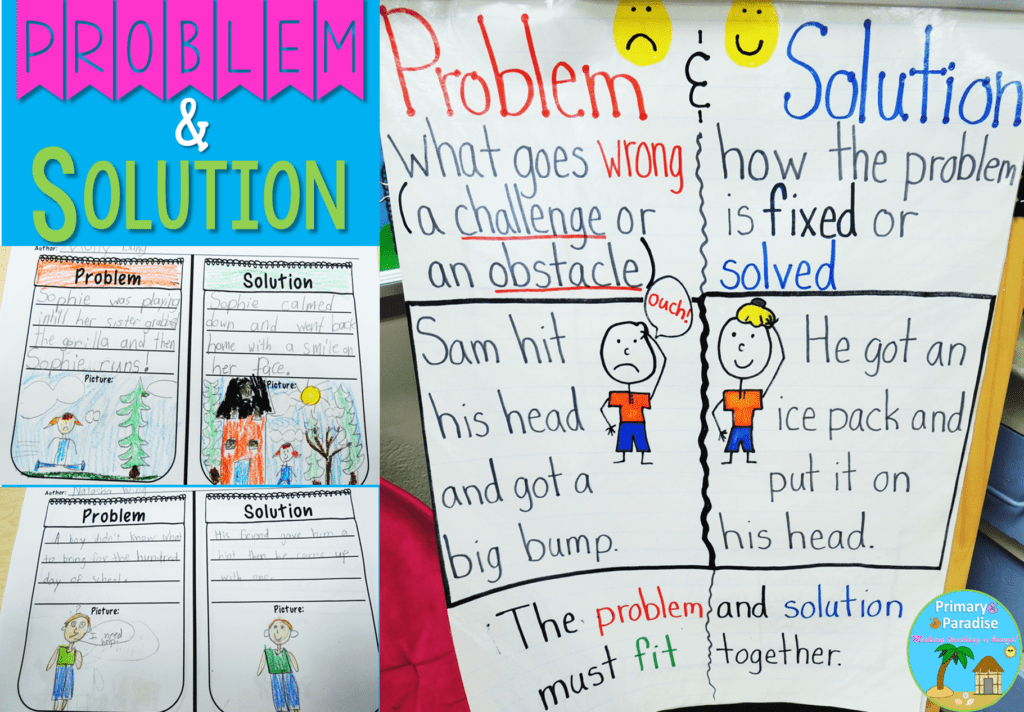
This week we were focusing on problem and solution, and my students really seemed to “get” it, so I’m excited to share our anchor charts, book ideas and activities that we used!
Here is the anchor chart that I created to help my students understand what problem and solution mean.
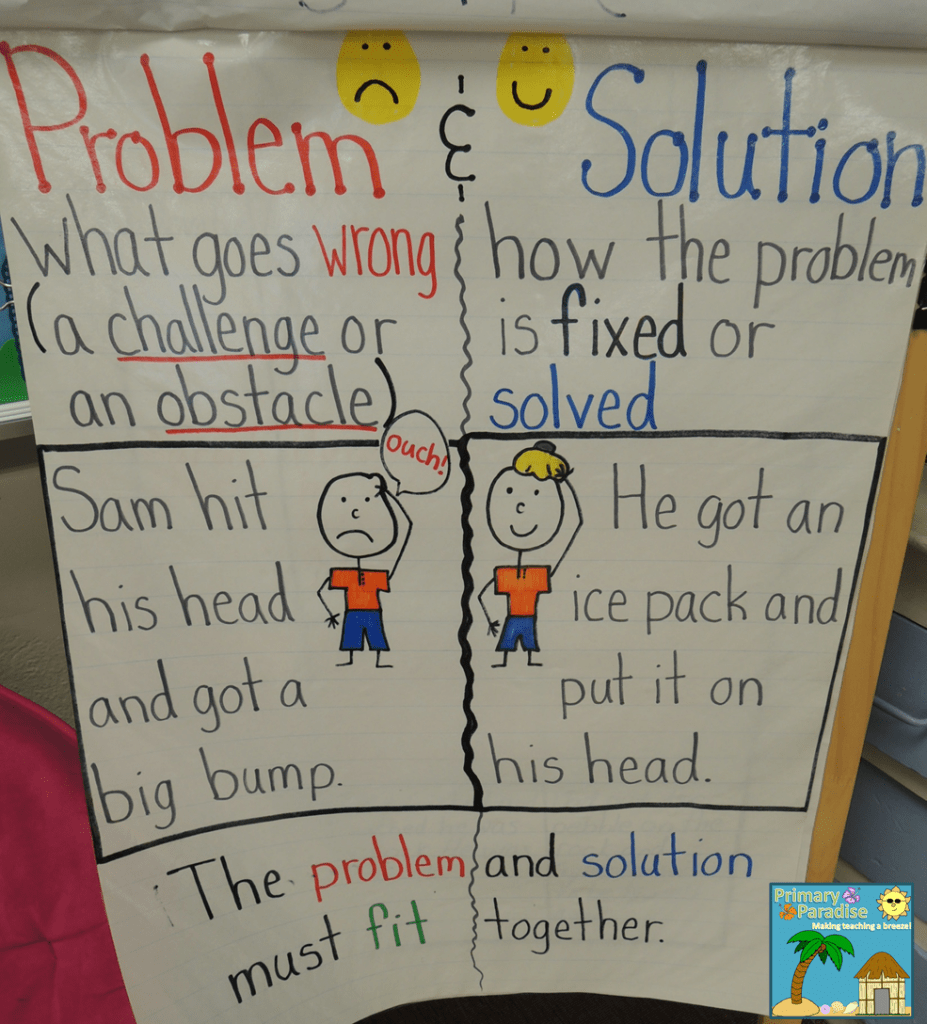
I really wanted my students to understand that the problem and solution must fit together like a puzzle. We emphasized that all week long because it not only helped them understand the problems and solutions in the stories we read, but also because it will help improve their writing skills. As we’ve been learning about our story elements, we’ve also focused on how we use them in our writing as well.
The memory motions we used for problem and solution were very simple. We did a sad face and a thumbs down for problem and a big smile and a thumbs up for solution.
This week was a 4 day week (yay!), so we read a read aloud together everyday, did a quick problem and solution match, and then charted the problem and solution.
Here are the books we read.
Unloveable is a FANTASTIC story to introduce problem and solution because the students can really connect with it. Plus, the main character is adorable. This is the story of Alfred the pug. None of the other animals like Alfred, but in the end he meets a friend who loves him for him. Every kid has had someone treat them unfairly, so they easily “get” the problem and solution. My girls squealed on almost every page and kept saying “He’s SO cute!” 🙂
Aaron’s Hair is a weird story, but that’s why kids tend to love it so much. Aaron grows out his hair to look like his dad, but then his long hair become a pain. He shouts “Hair I hate you!” and his hair hops off his head and runs away! Aaron chases his hair all around town, but can’t catch it. Once he realizes he actually likes his hair, his hair jumps back on his head. 🙂 Warning: you WILL have your class in stitches with this one, but again, it has a very clear problem and solution.
Crazy Hair Da y is my all time favorite book for problem and solution (which is a good thing because I was observed during this lesson). Stanley is all ready for crazy hair day. He goes all out with gel, rubber bands, and Halloween hair dye… then he gets to school and realizes it’s actually picture day! Oops! Luckily, his class comes to the rescue in a cute and fun way.
Here’s the organizer they filled out. Almost every students was able to correctly explain the problem and solution in the story.
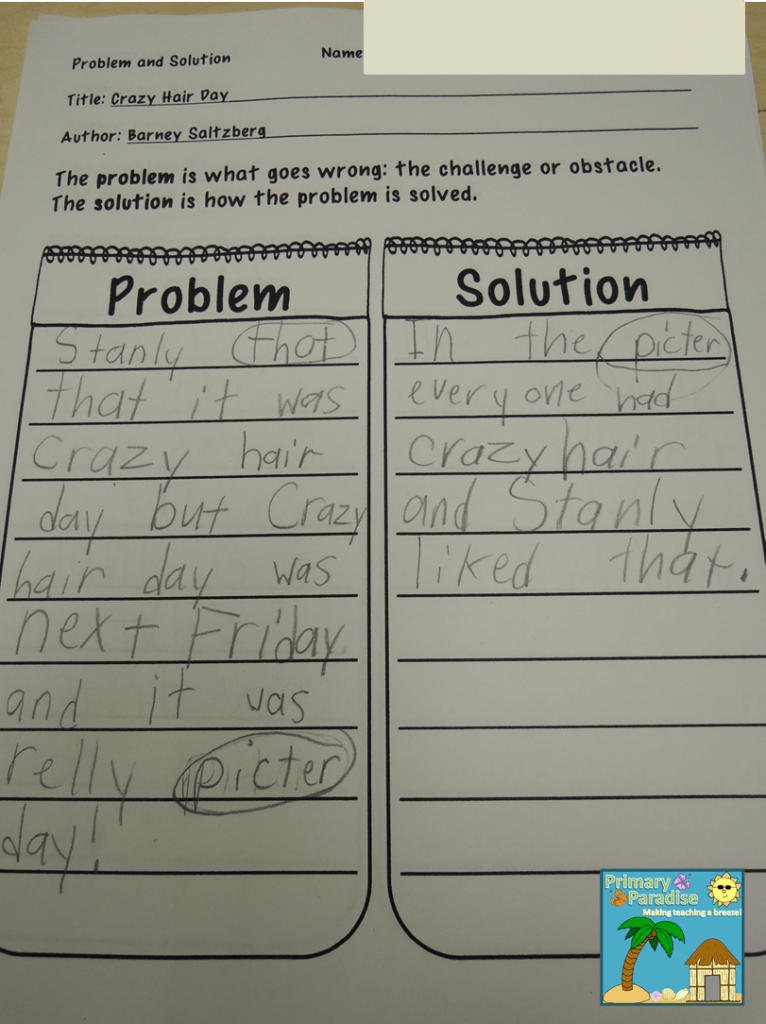
I’m sure you’ve read Sylvester and the Magic Pebbl e. If not, it’s a must read! Sylvester finds a magic, red pebble that allows him to wish for anything he wants. On his way home to show his parents, he runs into a lion, gets scared, and wishes to be a rock! He’s stuck as a rock for months and months until luckily his parents happen to have a picnic on him. In the end, his family learns a lesson about what really matters in life. This is also a great book to discuss how characters react to problems (which is in the 2nd grade common core standards).
As I mentioned, we charted our problems and solutions all week long.
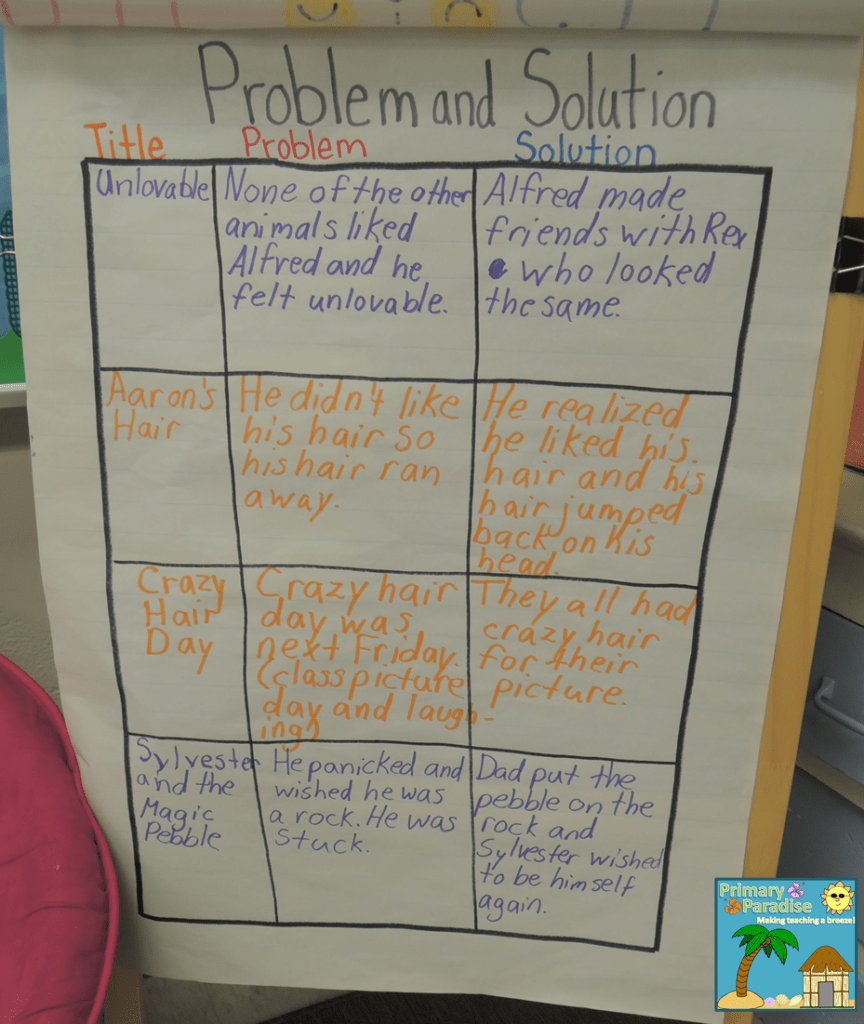
Then on Thursday, I had my students pick a fiction book from their book boxes and chart their own problem and solution. They did a fantastic job!
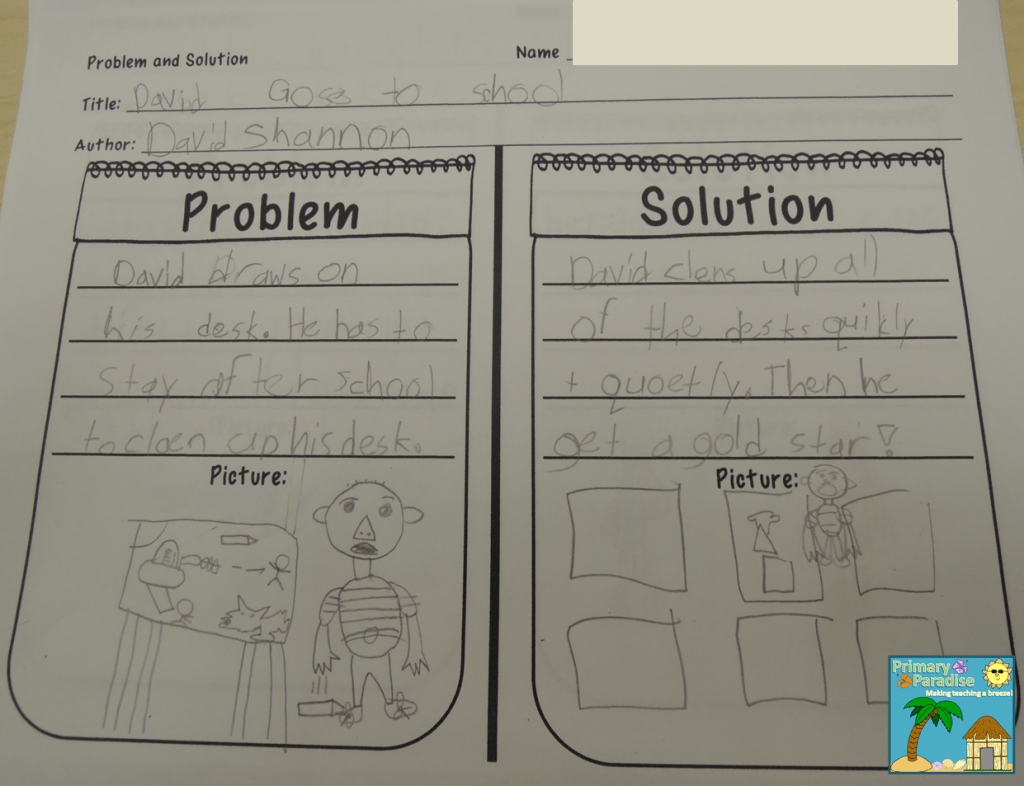
Click the picture below the grab the matching cards and graphic organizers I used during these lessons for free in my TpT store.
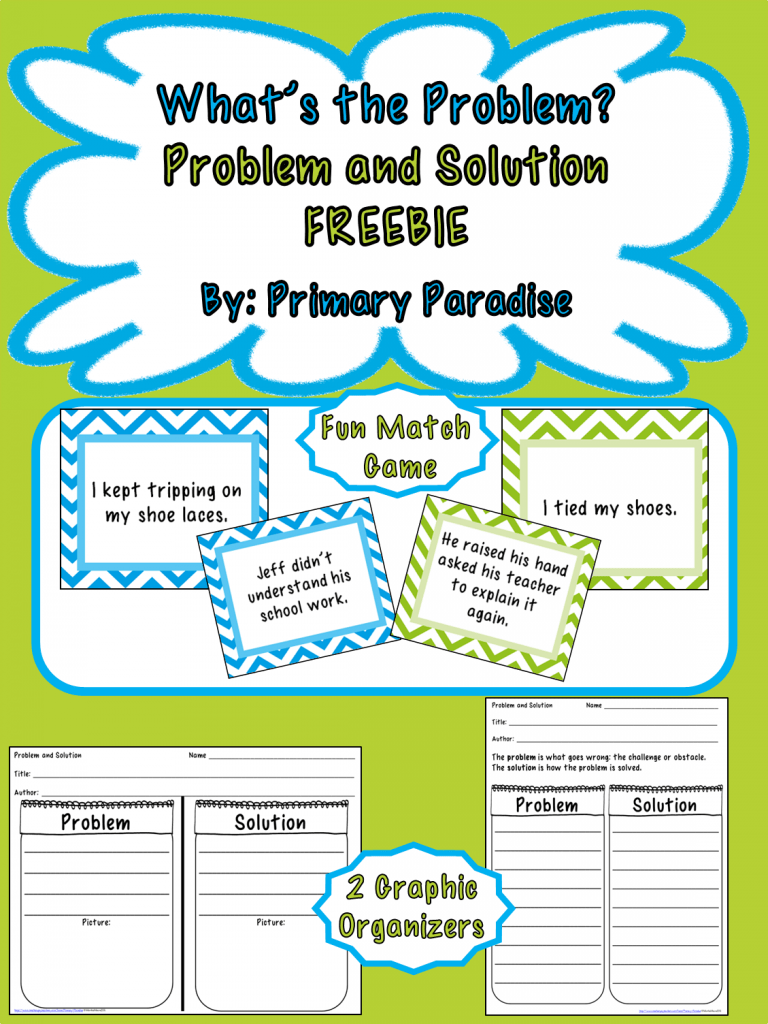
Primary Paradise
You may also like.
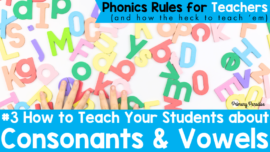
How to Teach Consonants and Vowels: Phonics Rules for Teachers
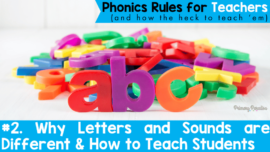
Why Letters and Sounds are Different and How to Teach Students

Phonics Rules for Teachers: Why They Matter and How to Get Parents on Board
Eberly Center
Teaching excellence & educational innovation.
This site provides practical strategies to address teaching problems across the disciplines. These strategies are firmly grounded in educational research and learning principles.
How does it work?
This site supplements our 1-on-1 teaching consultations. CONTACT US to talk with an Eberly colleague in person!
learning principles
- Students' prior knowledge can help or hinder learning. MORE
- How students organize knowledge influences how they learn and apply what they know. MORE
- Students' motivation determines, directs, and sustains what they do to learn. MORE
- To develop mastery, students must acquire component skills, practice integrating them, and know when to apply what they have learned. MORE
- Faculty Support
- Graduate Student Support
- Canvas @ Carnegie Mellon
- Quick Links
Trending Post : Books Made Into Movies

21 Good Picture Books to Teach Problem and Solution
This post may contain affiliate links.
Read mentor text picture books to teach problem and solution text structure. Understanding the problem and solution story structures improves comprehension and helps readers make informed predictions. (As well as helping children see the creative possibilities in problem-solving!)
Of course, almost all stories have a problem and a solution –with the exception of a concept book. So really, you can search out problem and solution examples in any book, whether it’s fiction or nonfiction.
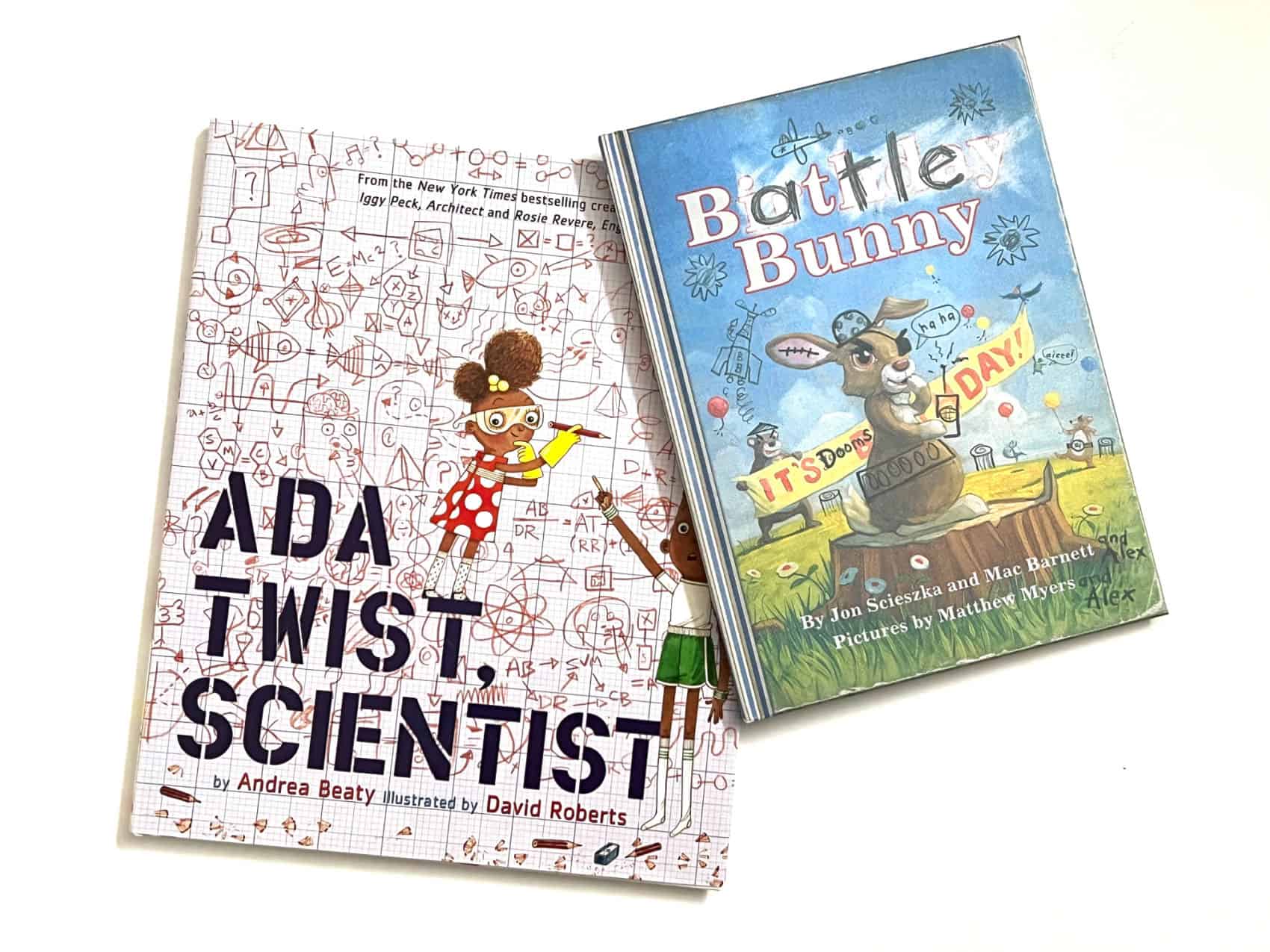
When children learn what to expect in a problem and solution story, not only will they be able to predict solutions, but they will also be better able to write their own problem-solution stories. I started teaching this early to my young kids, well before they were school-age because we want our children to become problem solvers. That is an important life skill!
While many picture books model the narrative story structure of problem and solution, these are my favorites to use with kids both at home and in the classroom.
PRINTABLE LIST

Mentor Text Picture Books to Teach Problem and Solution
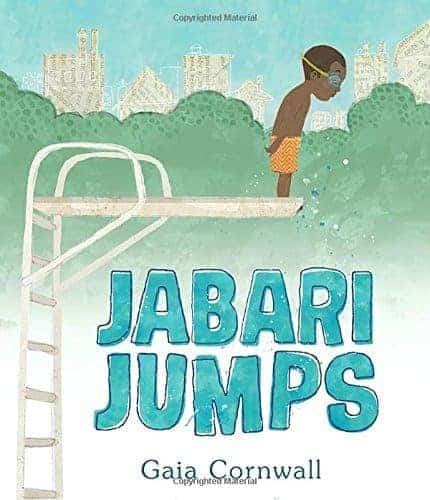
Problem Solved! by Jan Thomas When Rabbit sees his messy room, he learns that he has HIS OWN PROBLEM SOLVING PORCUPINE! Which seems good at first. But, it turns into a disaster. Because to clean up the blocks, the porcupine flushes them down the toilet. And to clean up his shirts, he feeds them to the goldfish. How can Rabbit get rid of his not-very-helpful problem-solving porcupine?
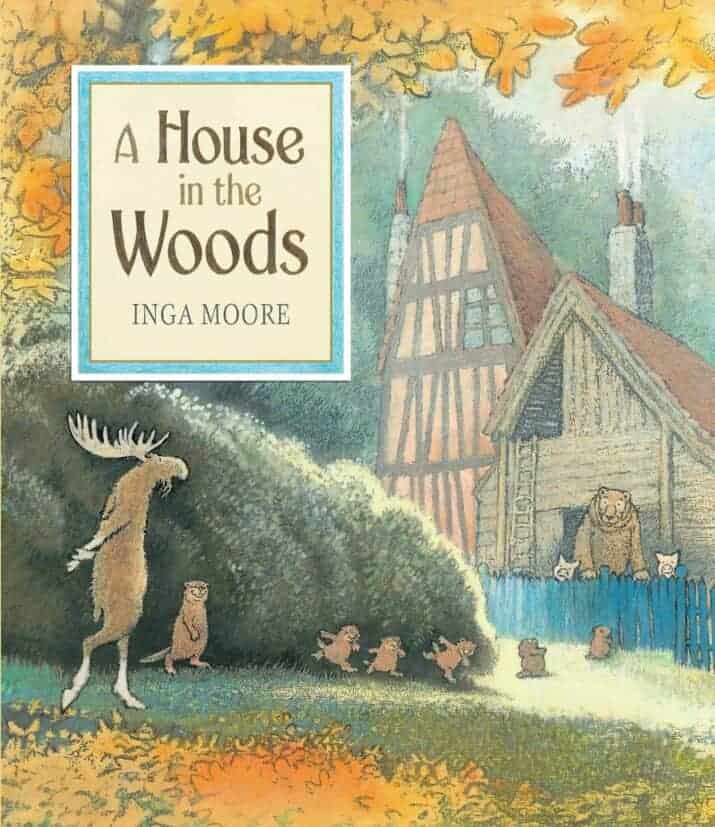
A House in the Woods by Inga Moore Little Pig’s den becomes filled with friends, but once Moose arrives, the den collapses. Oh, no! Problem. What will they do to find a solution? Together, the animals build a new house in the woods big enough to fit all the friends.
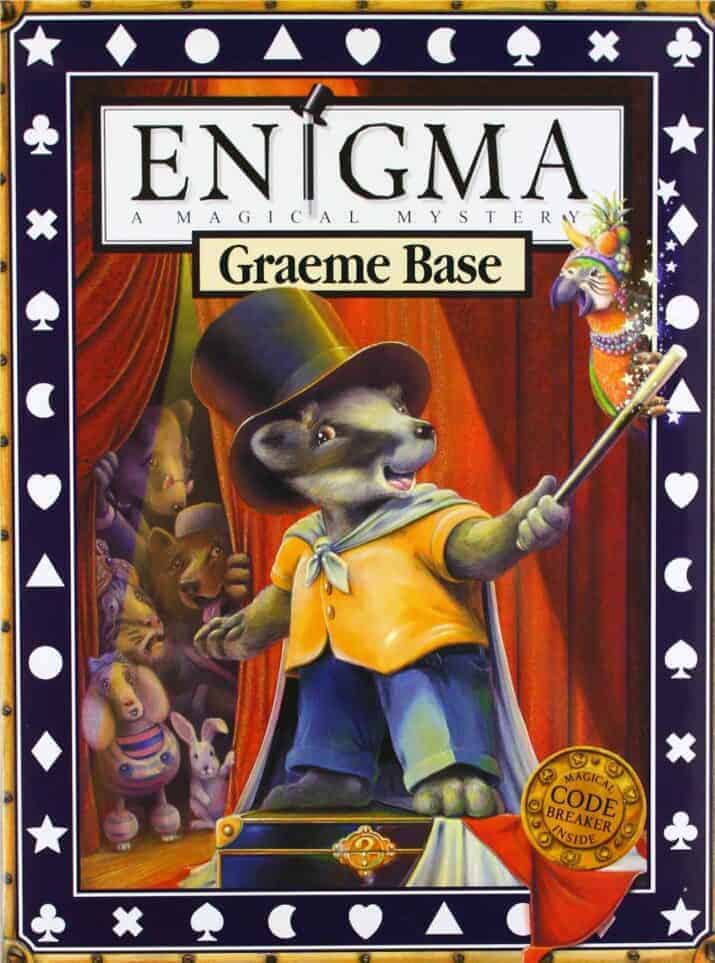
Enigma by Graeme Base Bertie needs to find the missing magic show props that have disappeared from his grandpa’s retirement home. Each performer tells him what’s missing. Readers help find the items in the illustrations so that Bertie can find the culprit. Like all his books, Base excels in his detailed illustrations.
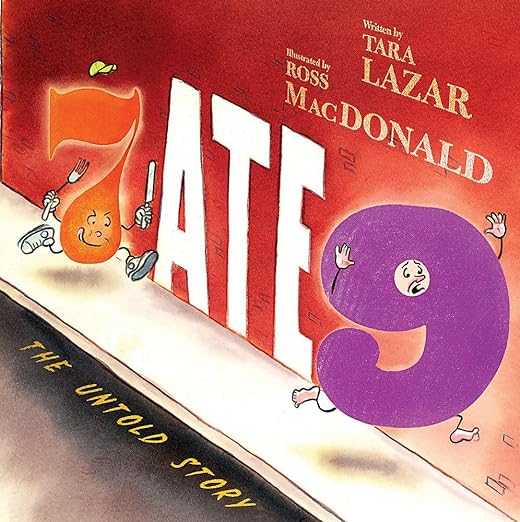
7 Ate 9: The Untold Story by Tara Lazar, illustrated by Ross MacDonald 6 bangs on Private I’s door for help! Because there’s a rumor that 7 is eating other numbers because apparently, 7 ate 9. YIKES! But did 7 really eat 9? Pitch perfect tongue-in-cheek number and word humor will crack you up throughout this suspenseful, funny problem and solution story. (Also on: Best Picture Book Mysteries .)
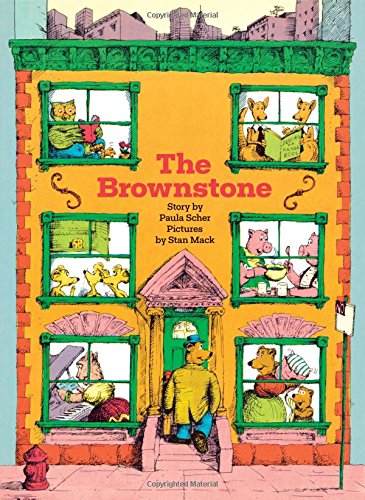
The Brownstone by Paula Scher, illustrated by Stan Mack The Bear family is ready for hibernation but first, they need to figure out what to do about the noise problem. Their solution? All the animals work together to shift apartments so that everyone finds the best apartment for their specific needs. You’ll love the message and illustrations.
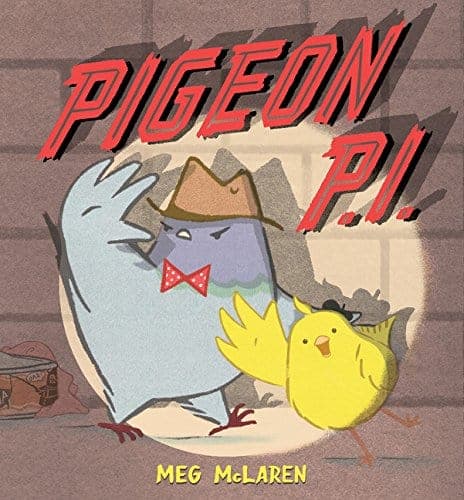
Pigeon P.I. by Meg McLaren What a unique and delightful mystery story! A little canary asks Pigeon P.I. (private investigator) to help her find her missing friends. Then the canary goes missing, too. It’s up to Pigeon to solve the missing bird mystery. The author writes in the style of the old detective shows– punchy with short sentences. The illustrator captures the details, giving kids clues to notice as they read.

One Word from Sophia by Jim Averbeck, illustrated by Yasmeen Ismail This picture book is a great way to teach kids summarizing and word choice as well as a problem-solution text structure! Sophia really wants a pet giraffe for her birthday. As a result, she sets out to convince her family, starting with her mother, a judge. However, Mother says that Sophia’s argument is too verbose. As a result, Sophie tries fewer words with Father. But he says her presentation is too effusive. Sophia continues with each family member until she reaches her last-ditch attempt and says the one word that works: PLEASE.
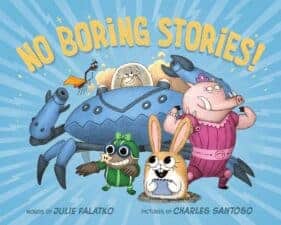
No Boring Stories! by Julie Falatko, illustrated by Charles Santoso When a cute little bunny tries to join a group of animal storytellers (mole, weevil, crab, and babirusa), the group doesn’t want to add her to their brainstorming group. As the animals continue their story plans with relatable characters, an inciting incident, rising action, climax, and…. Only the group gets stuck with the ending. That’s when bunny reveals that she likes making up weird (not boring) stories. The group realizes that the bunny has the perfect ending idea. Reluctantly, they agree that she can be part of the group. At least until a “ bunch of adorable frogs and puppies show up next week… ” This book shows plotting as well as the creative strengths of writers working together.
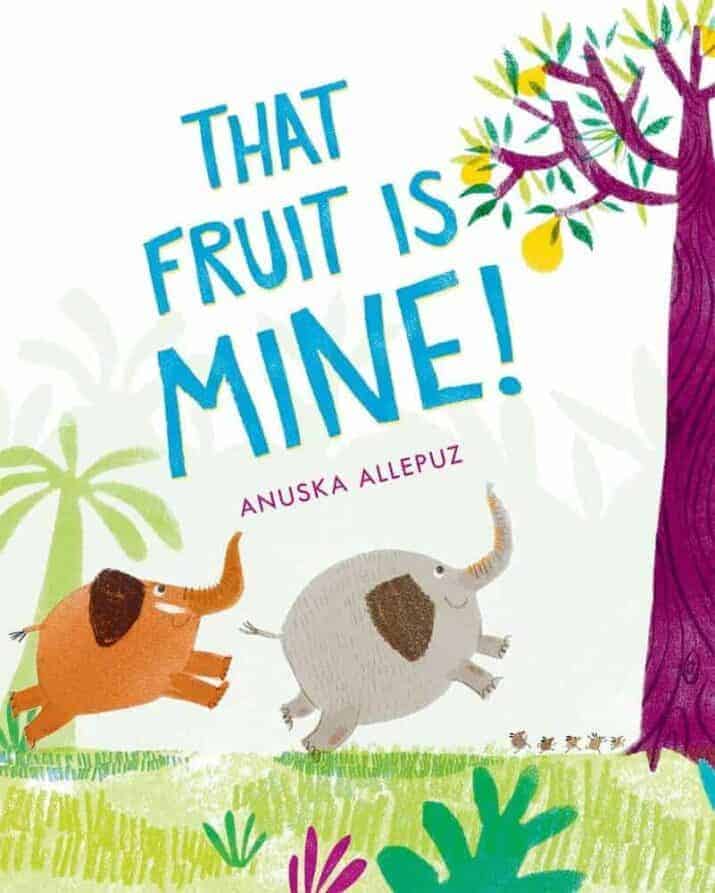
That Fruit Is Mine! by Anuska Allepuz This is a charming problem and solution story about learning to share and the power of working together. You’ll crack up watching the elephants’ many failed attempts to get delicious-looking fruit off a tree while simultaneously watching a tiny group of mice work together to get the yummy fruit, too. The problem is getting the fruit but only one animal group succeeds in a solution. Who do you think it will be? Great for prediction! (Also on: Picture Books That Teach Cooperation .)
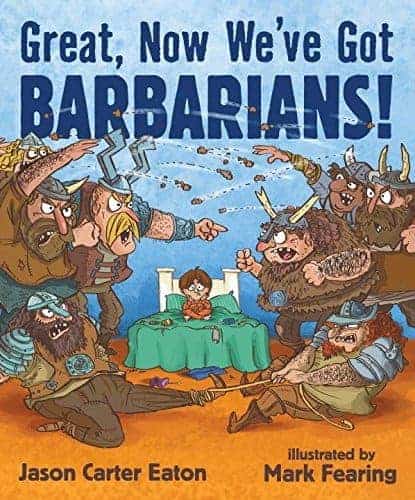
Great, Now We’ve Got Barbarians! by Jason Carter Eaton, illustrated by Mark Fearing Mom says that if the boy doesn’t clean his room, he’ll get pests . . . which the boy thinks aren’t all that bad, right? However, things go downhill when barbarian “pests” start arriving. Because they eat everything, use his toys to clean out their ears, and steal blankets and pillows. So there is only one thing to do — CLEAN up his room. It’s a predictable but funny solution with the perfect forgot-to-clean-up twist at the end.
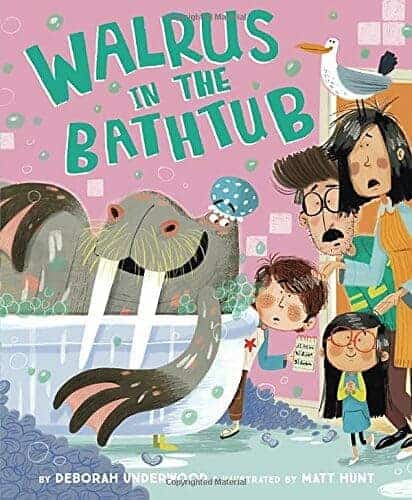
Walrus in the Bathtub by Deborah Underwood, illustrated by Matt Hunt The worst thing about this family’s new home is the walrus in the bathtub. And walrus songs are very, very loud. It’s a big problem. The family tries lots of clever things to get the walrus to leave the bathtub but with no success. So they decide to move. Again. That’s when the walrus shows them his list — “ How to Make Your New Family Feel Welcome ” — which, surprisingly, includes all the things that annoy the family. It turns out the walrus was just trying to be nice. As a result, the family stays with a few *new* rules. This story will make you want your own walrus in a bathtub.
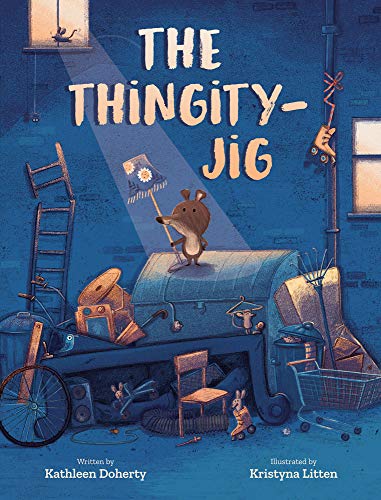
The Thingity-Jig by Kathleen Doherty, illustrated by Kristyna Litten Wordplay, problem-solving, and persistence! One day Bear finds a Thingity-Jig (aka. a couch), which he thinks is wonderful as a sit-on-it, jump-on-it thing. He asks his friends to help him carry it home but they’re too fast asleep, so Bear figures out some ideas to do it himself. He makes a Rolly-Rumpity! Which is a pack-it-up, heap-it-up, load-it-up thing. That isn’t enough to move the Thingit-Jig so Bear makes something else — a Lifty-Uppity. And then, a Pushy-Poppity. And at daybreak, he arrives back at home where his friends are waking up, with his special Thingity-Jig. Bingity…Bing…Boing…Bear falls asleep.
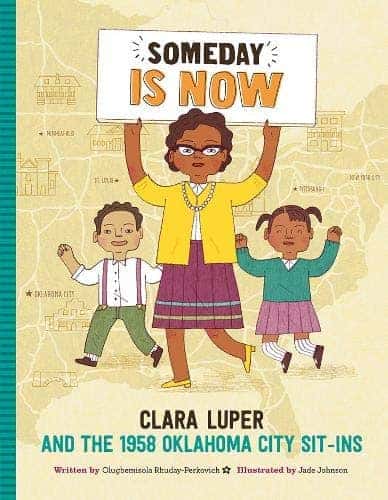
Someday is Now: Clara Luper and the 1958 Oklahoma City Sit-Ins by Olugbemisola Rhuday-Perkovich Clara advocated for justice and equality during a time when Black people weren’t permitted the same rights as white people. As a teacher, she inspired her students to believe that change was possible. Clara and her students went to the Katz drugstore and asked to be served — even though the store didn’t serve black people. She and her students returned day after day despite people yelling and throwing food. Eventually, the Katz store relented and started to serve people of all races. Clara and her students finally could enjoy a Coke and a burger without trouble.

Wangari’s Trees of Peace by Jeannette Winter Based on the true story of Wangari Maathai, winner of the Nobel Peace Prize, read how Wangari helped her country of Kenya whose forests were all but destroyed. She started planting trees which started a movement motivating other people to plant trees as well. This is an example of how narrative nonfiction book can also teach the plot structure of problem and solution .
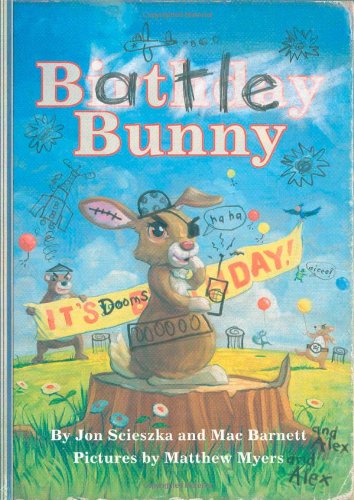
Battle Bunny by Jon Scieszka and Mac Barnett, illustrated by Matt Myers When Alex gets a silly, sappy picture book called Birthday Bunny, he picks up a pencil and turns it into something he’d like to read: Battle Bunny. An adorable rabbit’s journey through the forest becomes a secret mission to unleash an evil plan–a plan that only Alex can stop. Not only does this mentor text model problem and solution, but also voice and revision.
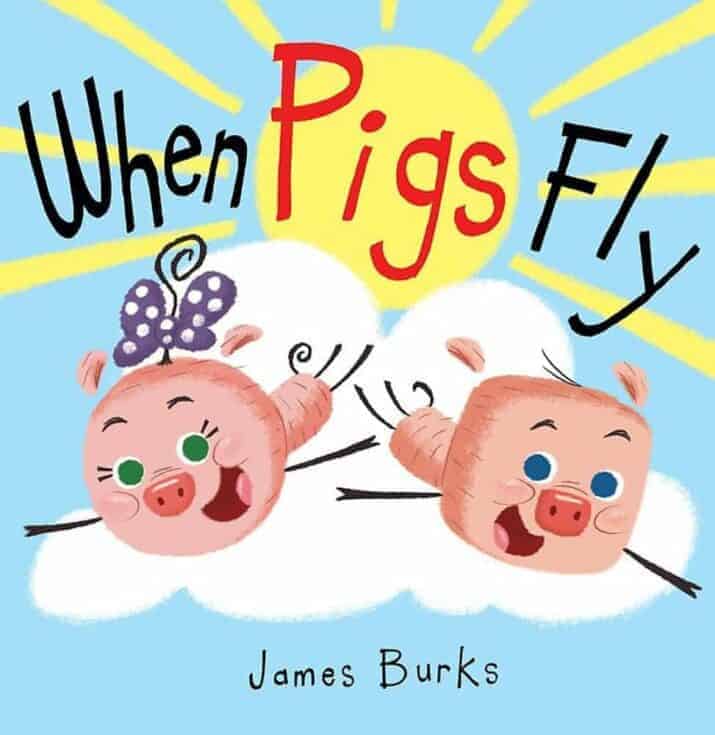
When Pigs Fly by James Burke One day, an exuberant pig declares that he will fly. His sister observes with disbelief and horror as one attempt after another fails. The brother pig is so disappointed that he decides to give up. That’s when his sister comes up with an idea — something he hasn’t tried before that will help her brother fly — a pretend airplane. The pigs’ expressive illustrations are absolutely perfect as is the message of persistence despite failure.
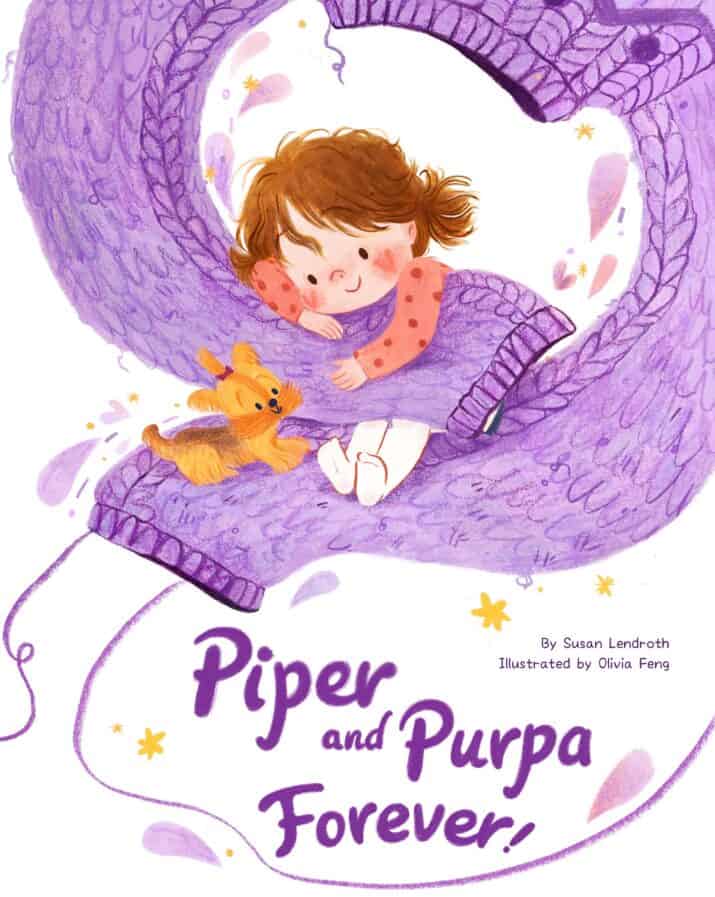
Piper and Purpa Forever! by Susan Lendroth, illustrated by Olivia Feng Most stories have a problem and a solution but this story is a great example showing a little girl’s ability to creatively problem solve with a beautiful solution to her problem. Piper loves her beloved purple sweater, Purpa, and is so sad when she grows out of it. Will she be able to keep her sweater somehow?
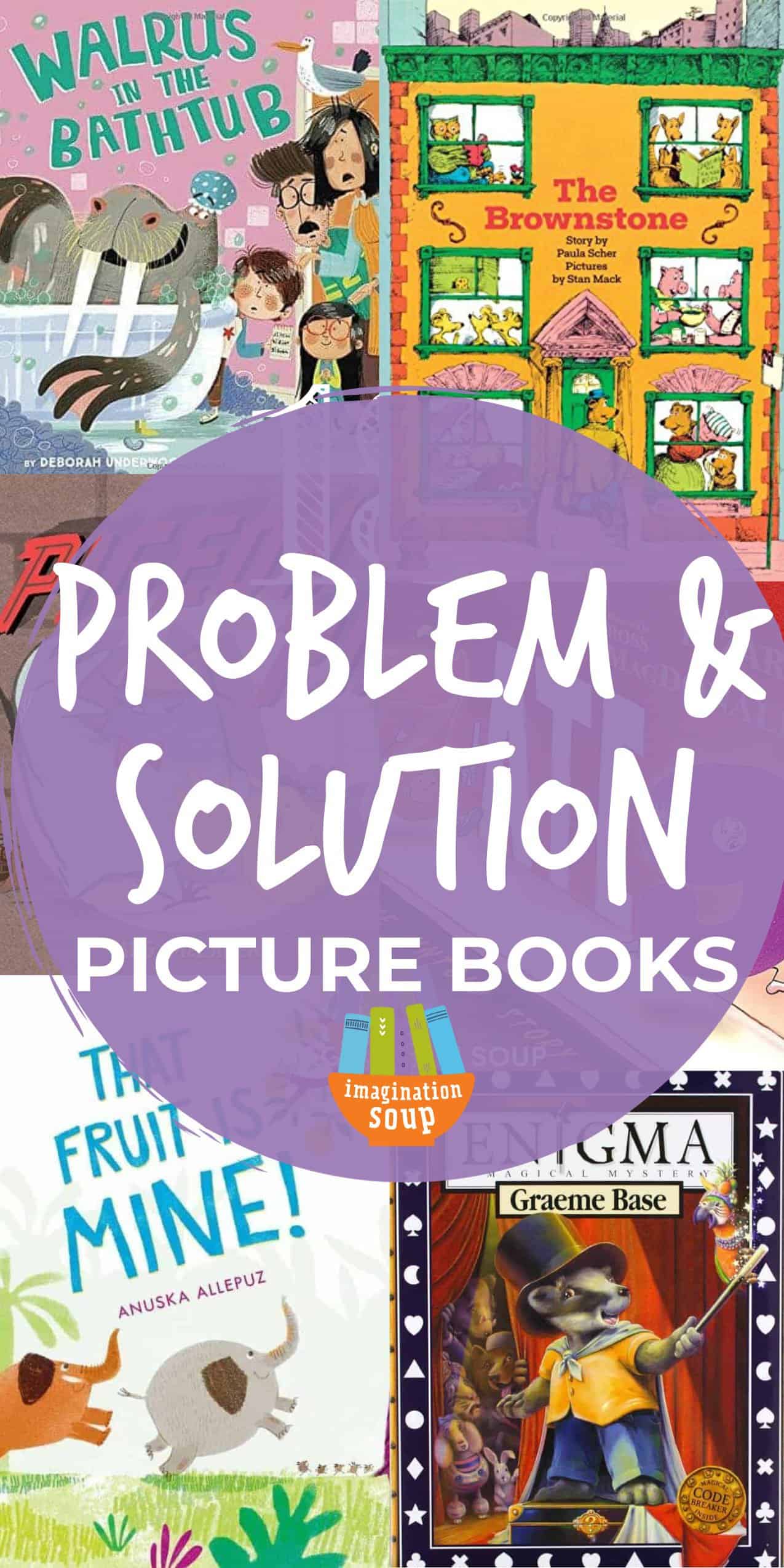
KEEP READING
Picture Books to Teach Perspective
Picture Books to Teach Vivid Description
Favorite Book Character Costumes
Melissa Taylor, MA, is the creator of Imagination Soup. She's a mother, former teacher & literacy trainer, and freelance education writer. She writes Imagination Soup and freelances for publications online and in print, including Penguin Random House's Brightly website, USA Today Health, Adobe Education, Colorado Parent, and Parenting. She is passionate about matching kids with books that they'll love.
Similar Posts
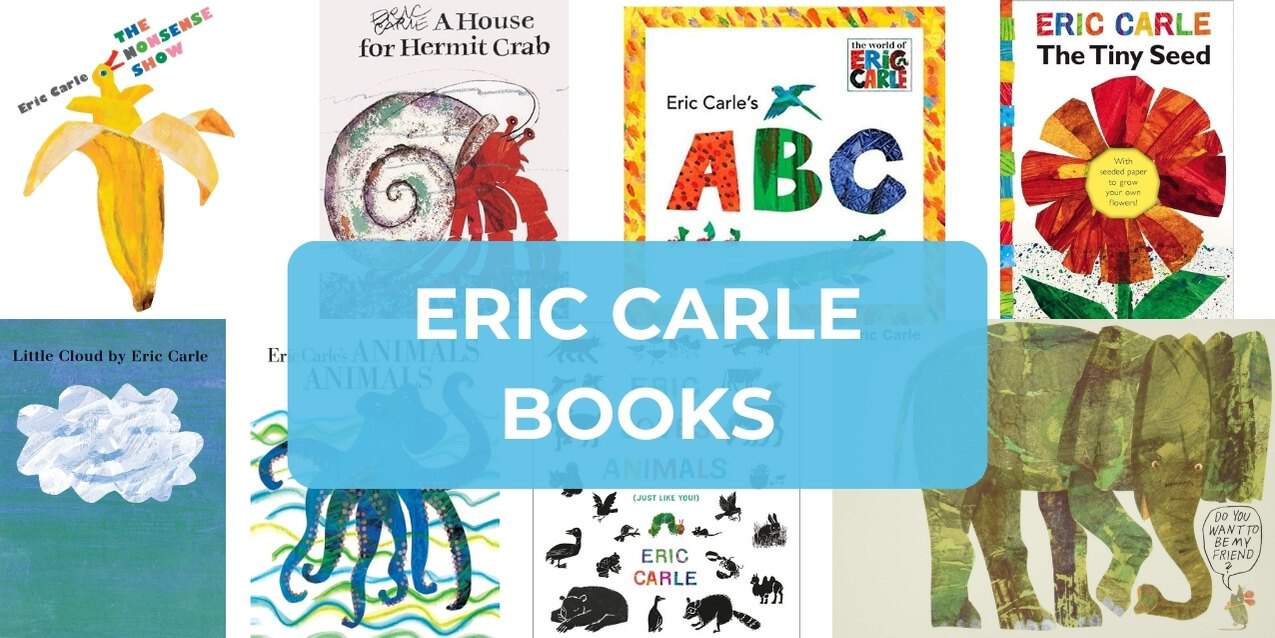
A Teacher’s 10 Favorite Eric Carle Books

Favorite Cookbooks My Kids Actually Use

Picture Books with Black Main Characters

5 Healthy Eating Strategies for Picky Eaters
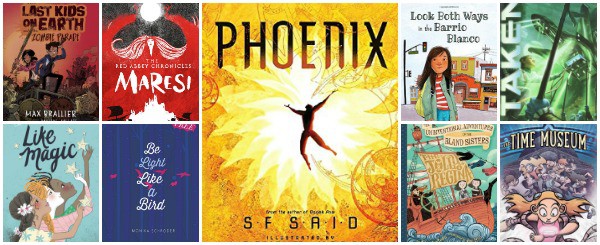
New Book Reviews
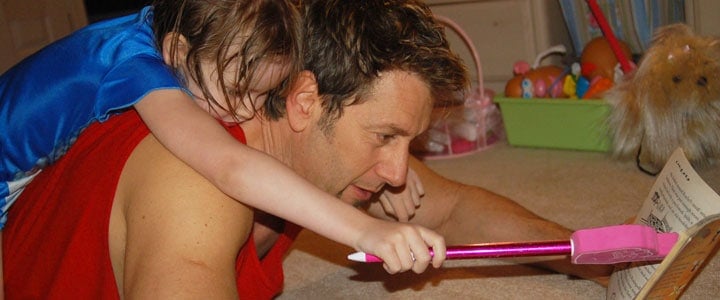
Why Global Lit? Interview with Lucine Kasbarian
Leave a reply cancel reply.
Your email address will not be published. Required fields are marked *
My grandson loves cars, RC cars, sports cars but I don’t find any books about cars, racing, car features, etc. It would be a ‘hook’ to get him to read more. Any suggestions appreciated.
Here is a list of vehicle books. https://imaginationsoup.net/picture-books-vehicle-loving-kids/ . My recommendation for car books is Professor Wooford McPaw’s History of Cars by Elliot Kruszynski.

ChatGPT for Teachers
Trauma-informed practices in schools, teacher well-being, cultivating diversity, equity, & inclusion, integrating technology in the classroom, social-emotional development, covid-19 resources, invest in resilience: summer toolkit, civics & resilience, all toolkits, degree programs, trauma-informed professional development, teacher licensure & certification, how to become - career information, classroom management, instructional design, lifestyle & self-care, online higher ed teaching, current events, 5 problem-solving activities for the classroom.

Problem-solving skills are necessary in all areas of life, and classroom problem solving activities can be a great way to get students prepped and ready to solve real problems in real life scenarios. Whether in school, work or in their social relationships, the ability to critically analyze a problem, map out all its elements and then prepare a workable solution is one of the most valuable skills one can acquire in life.
Educating your students about problem solving skills from an early age in school can be facilitated through classroom problem solving activities. Such endeavors encourage cognitive as well as social development, and can equip students with the tools they’ll need to address and solve problems throughout the rest of their lives. Here are five classroom problem solving activities your students are sure to benefit from as well as enjoy doing:
1. Brainstorm bonanza
Having your students create lists related to whatever you are currently studying can be a great way to help them to enrich their understanding of a topic while learning to problem-solve. For example, if you are studying a historical, current or fictional event that did not turn out favorably, have your students brainstorm ways that the protagonist or participants could have created a different, more positive outcome. They can brainstorm on paper individually or on a chalkboard or white board in front of the class.
2. Problem-solving as a group
Have your students create and decorate a medium-sized box with a slot in the top. Label the box “The Problem-Solving Box.” Invite students to anonymously write down and submit any problem or issue they might be having at school or at home, ones that they can’t seem to figure out on their own. Once or twice a week, have a student draw one of the items from the box and read it aloud. Then have the class as a group figure out the ideal way the student can address the issue and hopefully solve it.
3. Clue me in
This fun detective game encourages problem-solving, critical thinking and cognitive development. Collect a number of items that are associated with a specific profession, social trend, place, public figure, historical event, animal, etc. Assemble actual items (or pictures of items) that are commonly associated with the target answer. Place them all in a bag (five-10 clues should be sufficient.) Then have a student reach into the bag and one by one pull out clues. Choose a minimum number of clues they must draw out before making their first guess (two- three). After this, the student must venture a guess after each clue pulled until they guess correctly. See how quickly the student is able to solve the riddle.
4. Survivor scenarios
Create a pretend scenario for students that requires them to think creatively to make it through. An example might be getting stranded on an island, knowing that help will not arrive for three days. The group has a limited amount of food and water and must create shelter from items around the island. Encourage working together as a group and hearing out every child that has an idea about how to make it through the three days as safely and comfortably as possible.
5. Moral dilemma
Create a number of possible moral dilemmas your students might encounter in life, write them down, and place each item folded up in a bowl or bag. Some of the items might include things like, “I saw a good friend of mine shoplifting. What should I do?” or “The cashier gave me an extra $1.50 in change after I bought candy at the store. What should I do?” Have each student draw an item from the bag one by one, read it aloud, then tell the class their answer on the spot as to how they would handle the situation.
Classroom problem solving activities need not be dull and routine. Ideally, the problem solving activities you give your students will engage their senses and be genuinely fun to do. The activities and lessons learned will leave an impression on each child, increasing the likelihood that they will take the lesson forward into their everyday lives.
You may also like to read
- Classroom Activities for Introverted Students
- Activities for Teaching Tolerance in the Classroom
- 5 Problem-Solving Activities for Elementary Classrooms
- 10 Ways to Motivate Students Outside the Classroom
- Motivating Introverted Students to Excel in the Classroom
- How to Engage Gifted and Talented Students in the Classroom
Categorized as: Tips for Teachers and Classroom Resources
Tagged as: Assessment Tools , Engaging Activities
- Online & Campus Doctorate (EdD) in Higher Edu...
- Degrees and Certificates for Teachers & Educa...
- Programming Teacher: Job Description and Sala...

Problem and Solution for First Grade
- Read Alouds , Reading & Literacy
Being able to easily identify the problem and solution in a story is a foundational reading comprehension skill for first grade students.
It's an activity that can be done with every single read aloud.
It can (and should) be done whole group, in small group, with partners, in literacy stations and during independent reading.
It's also a great skill for parents to work on at home.
Describing the problem includes:
- Identifying the problem the character(s) is experiencing in the beginning of the story
- Asking questions and making predictions about possible upcoming events and about possible ways to solve the problem
- Understanding how the events and characters influence the problem throughout the story
Describing the solution includes:
- Confirming or revising predictions about the resolution
- Explaining how the resolution solves the problem
- Describing what happens to the character(s) because of the resolution
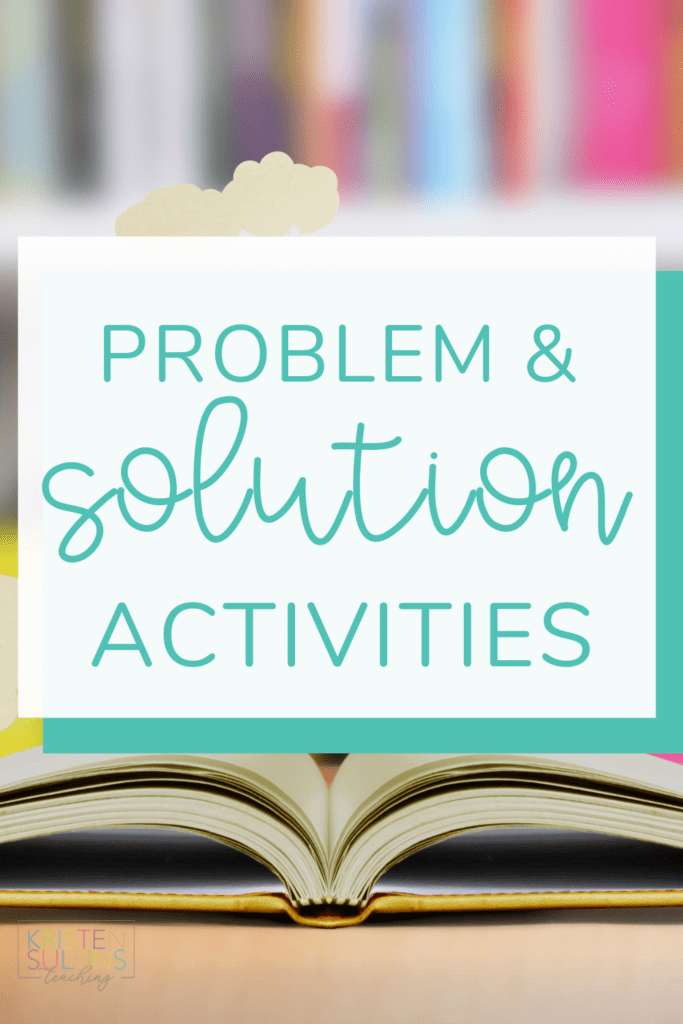
Examples of Problem and Solution
You might be totally comfortable with the topic of problem and solution, but when we are in the moment in front of 22 little faces, sometime we blank!
It's time to give our students examples of what Problem and Solution is…
but we've got nothing!
It helps to think of a few examples ahead of time and jot them down.
Examples of problem and solution work best if the are real life examples that the students can relate to!
Here's a few examples from the school day:
- Your pencil breaks
- You can't find your book
- You forgot your lunch
- You can't remember the directions
- You left your jacket on the playground
- You don't know how to tie your shoes
- You need a supply that another student is using
By using these real-life examples, you are not only teaching problem and solution, but you are reinforcing your classroom management as well!
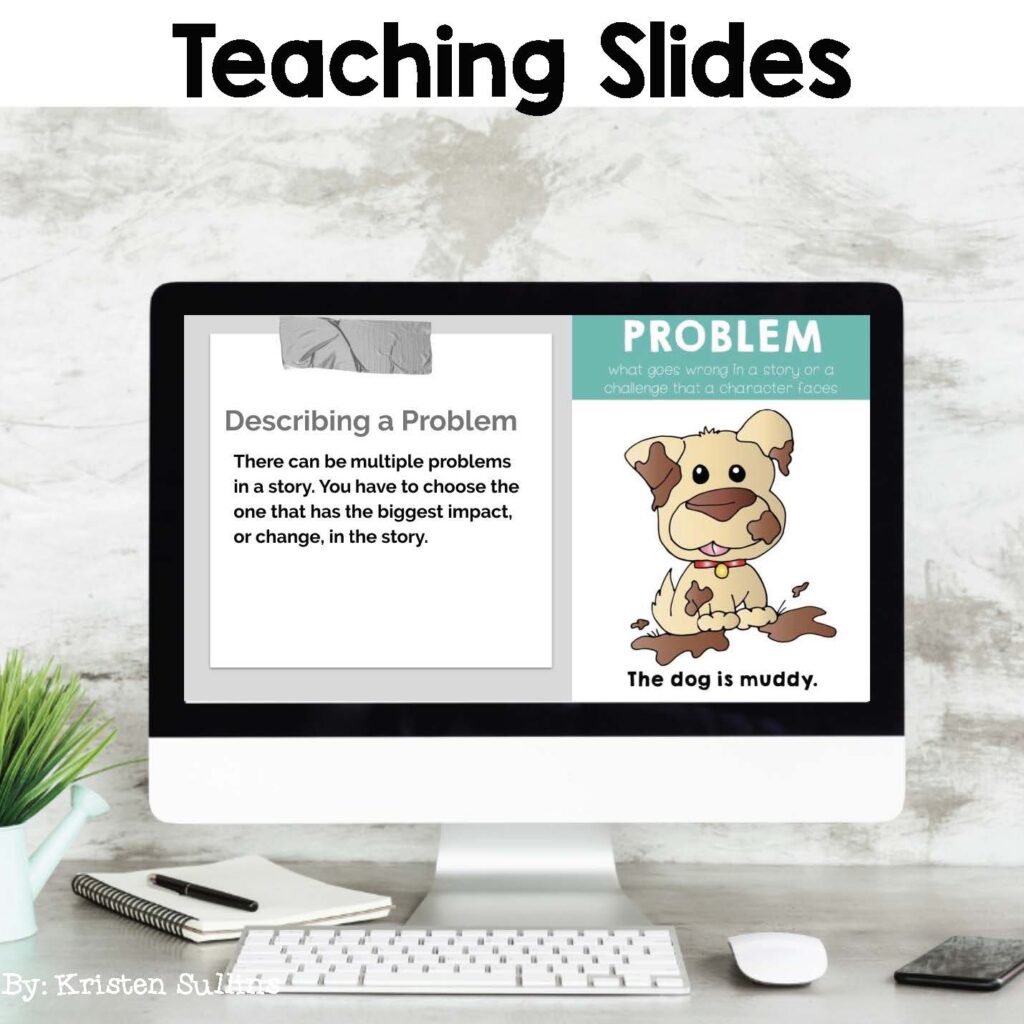
How to Introduce Problem and Solution for First Grade
If you teach lower elementary, then you know that there is SO much that goes into the comprehension of a book. First grade students are learning so much at this age and even listening comprehension requires their little brains to work so hard.
Why do I bring this up?
Because I want you to think about how hard they are ALREADY working when they are listening to a read aloud and when you use a mentor text to introduce a NEW SKILL, most students’ brains go into overload!
So what should we do instead?
Start with a non-text activity. Let me introduce you to a new kind of “slideshow”.
I like to use interactive slideshows/powerpoints. My slideshows always follow this order:
- Teaching Slides: Introduces students to WHAT the skill is
- Guided Practice: Introduces students to HOW to apply the skill
- Interactive Practice: Gives students an example and allows them to PRACTICE the skill in an easy and concise way
Problem and Solution Non-Text Activities for First Grade
After we practice the slideshow, then we practice building our problem and solution muscles with some guided and independent practice using a NON-TEXT ACTIVITY such as a station game.
Non-text activities are a HUGE asset to students because it allows them to build and flex their problem and solution muscles before we ask them to apply those skills to a text!
How to Complete the Activity
We will do this activity together as a group first, then it will move into our guided reading stations where students will complete it independently!
I've found the best and easiest way to do this is with images of problems/solutions that my first grade students know a lot about.
My students do this Problem and Solution activity (seen on the right). We do one together as a class for guided practice.
For this activity, students must correctly match the problem and solution. Then I have students write about the problem and solution with an emphasis on why the solution actually works for this problem.
After we do this activity together, it goes into their stations for Guided Reading.
The best part about this activity is that you can leave it out for several weeks because each time students can choose a new set of pictures!
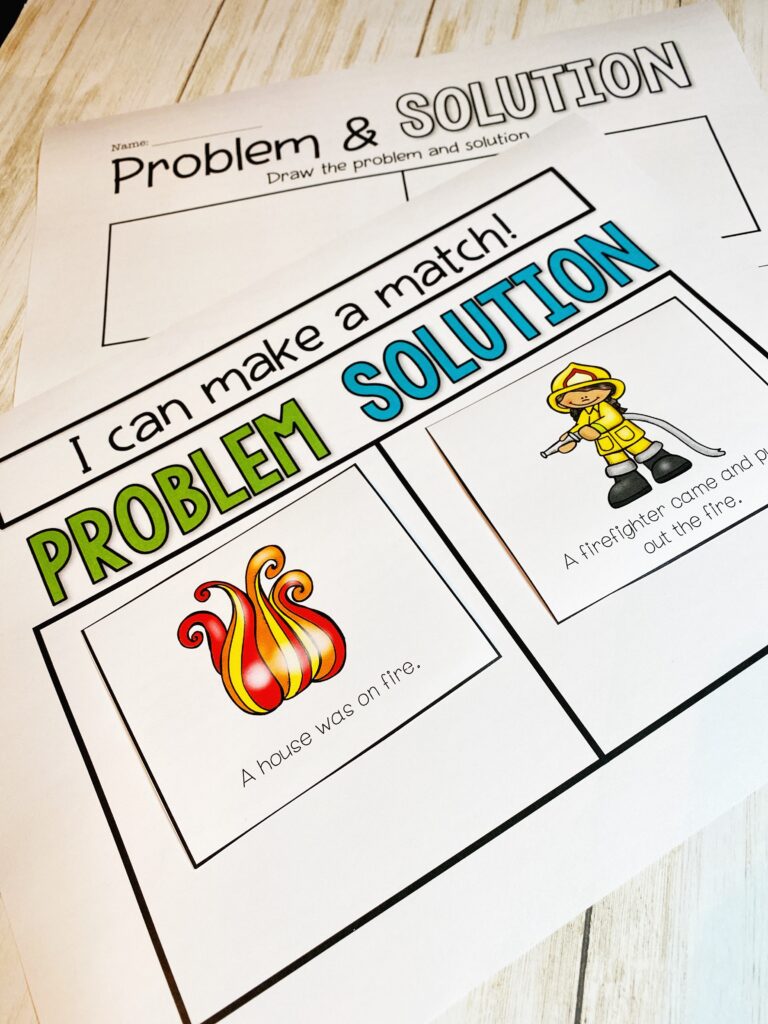
Mentor Texts for Problem and Solution
A mentor text is an incredibly powerful tool for teaching reading comprehension skills!
(make sure you keep reading to the end of this post to see a list of my favorite mentor texts for problem & solution)
The problem that many teachers run into with mentor texts is that there are SO MANY different skills you can teach with the same mentor text….
Sometimes we try to do TOO MUCH and we overwhelm our students!
Let me introduce you to a Comprehension Focus Question (CFQ).
A CFQ is one question that you focus on through the entire text!
It simplifies things for you and your students. (more on that later)…
But let's take a minute to dispel so myths about mentor texts..
A mentor text is NOT a book that you read once and put it away.
A mentor text is a book that you read once, then refer back to again and again and again.
The greatest benefit of a good mentor text is that after you have read it once, when you refer back to it, you aren’t reading the entire book again, you are simply referring back to one or two pages.
It will save you SO much time.
AND students are already familiar with the story line meaning that already have a foundation for whatever comprehension skill you are about to dive into!
How to Boost Comprehension for Problem & Solution
Comprehension Focus Questions
As I mentioned, a Comprehension Focus Question (CFQ) is a very focused and intentional comprehension goal for an activity, a week or even a unit.
If you have done your research and you understand your learning standard, the vocabulary and what students need to know…
Then it becomes very easy to choose a goal (or a comprehension focus question).
But, why do you need a comprehension goal?
To stay FOCUSED!
Not just for you, but for your students also!
Let’s look at an example. Let’s say that this week you are focusing on how to make an inference. Well, there are about a hundred different ways you can make an inference and a CFQ allows you to focus on one area at a time.
Example CFQ: “How Did The Character Change From ___ To ____?”
In this comprehension focus question, you and your students are focusing in on the characters of the story.
The great thing about CFQ’s is that the next time you pull out this mentor text, you can choose a different CFQ to focus on while still practicing how to make an inference!
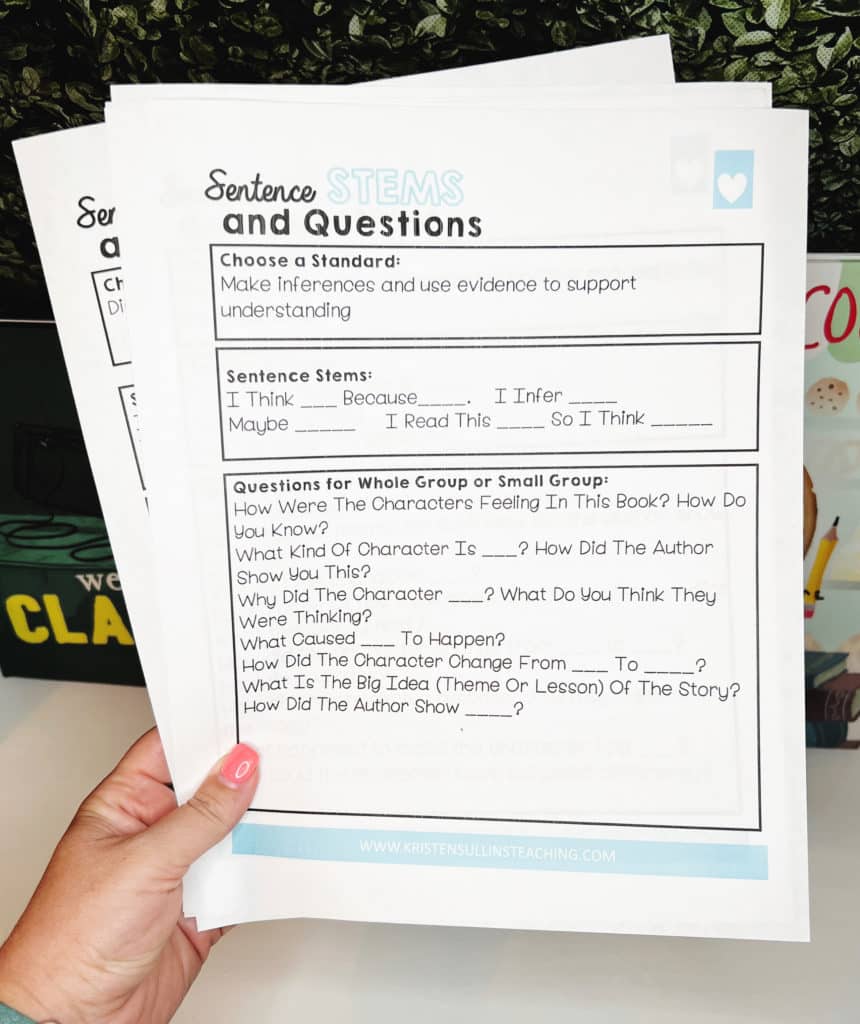
Sentence Stems
Another great strategy that falls right in long with mentor texts and comprehension focus questions is sentence stems.
A sentence stem is a phrase that your first grade students will use to answer a comprehension question.
Sentence stems are designed to get students to answer comprehension questions more fully rather than giving one word answers.
Sentence stems encourage students to explain their thinking.
I like to have a list of sentence stems next to my table that are specific to each comprehension skill. I stick to one or two stems per skill for the entire year because I want my students to be consistent. (This also makes it a lot easier for them)
If we are sticking with our Make an Inference example, I would use the following sentence stems:
I Think ___ Because____.
I Read This ____ So I Think _____
Problem and Solution Activities for First Grade
All of the activities that you found in this post, both printable and digital, along with UNIT LESSON PLANS can be found in my Problem and Solution Bundle here.
You can save up to 20% by purchasing the items together, but you can also purchase individual items to better fit your needs!
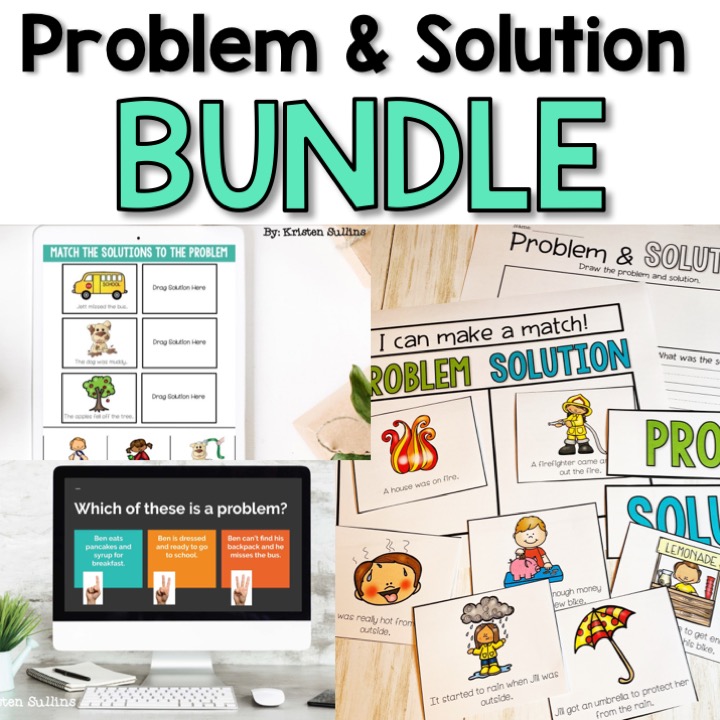
Best Books for Problem and Solution
**You can use the recording sheet from the Problem and Solution station with all of these read alouds!
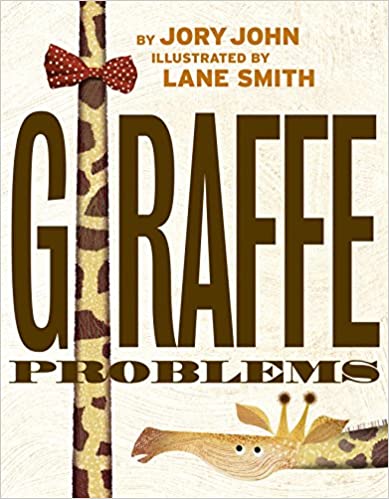
More First Grade Favorites
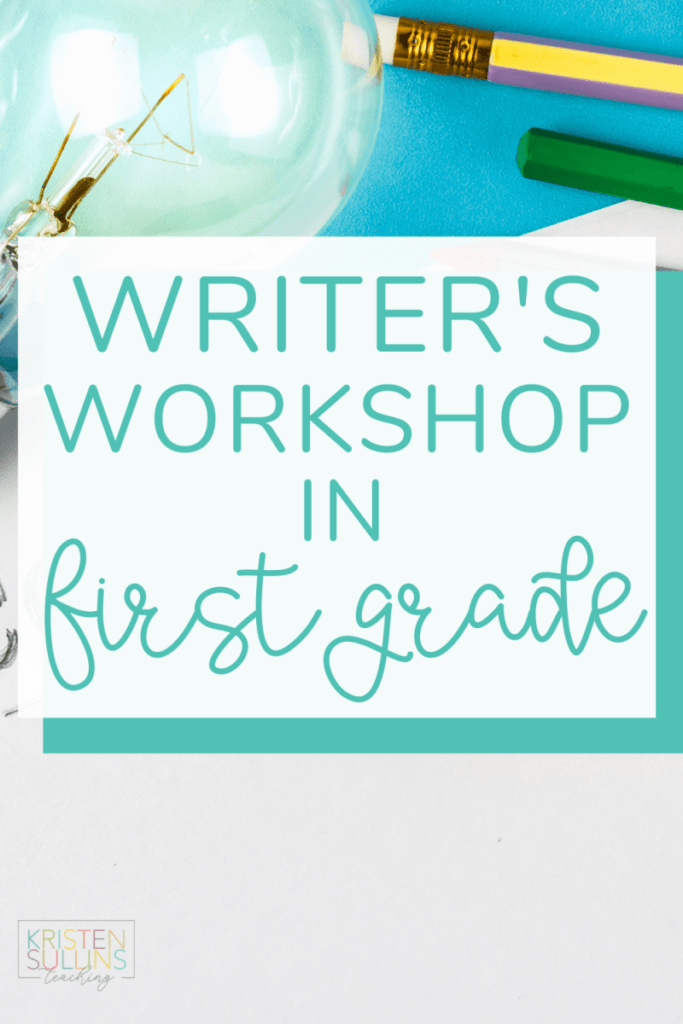
sign up for free stuff
Sign up to receive weekly emails with tips, free resources and info about upcoming sales.


Kristen Sullins
I am a current Elementary Librarian and Enrichment Teacher, mother of two, follower of Christ and Texas native. In my own classroom, I love to save time by finding unique ways to integrate writing, social studies and science into all parts of my day. I also love all things organization!
YOU MAY ALSO ENJOY...
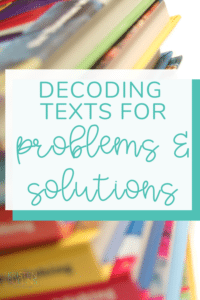
©2019 Kristen Sullins. All Rights Reserved
Site by Ashley Hughes
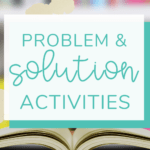
9 Simple Solutions for Common Teaching Problems
November 27, 2016
Can't find what you are looking for? Contact Us
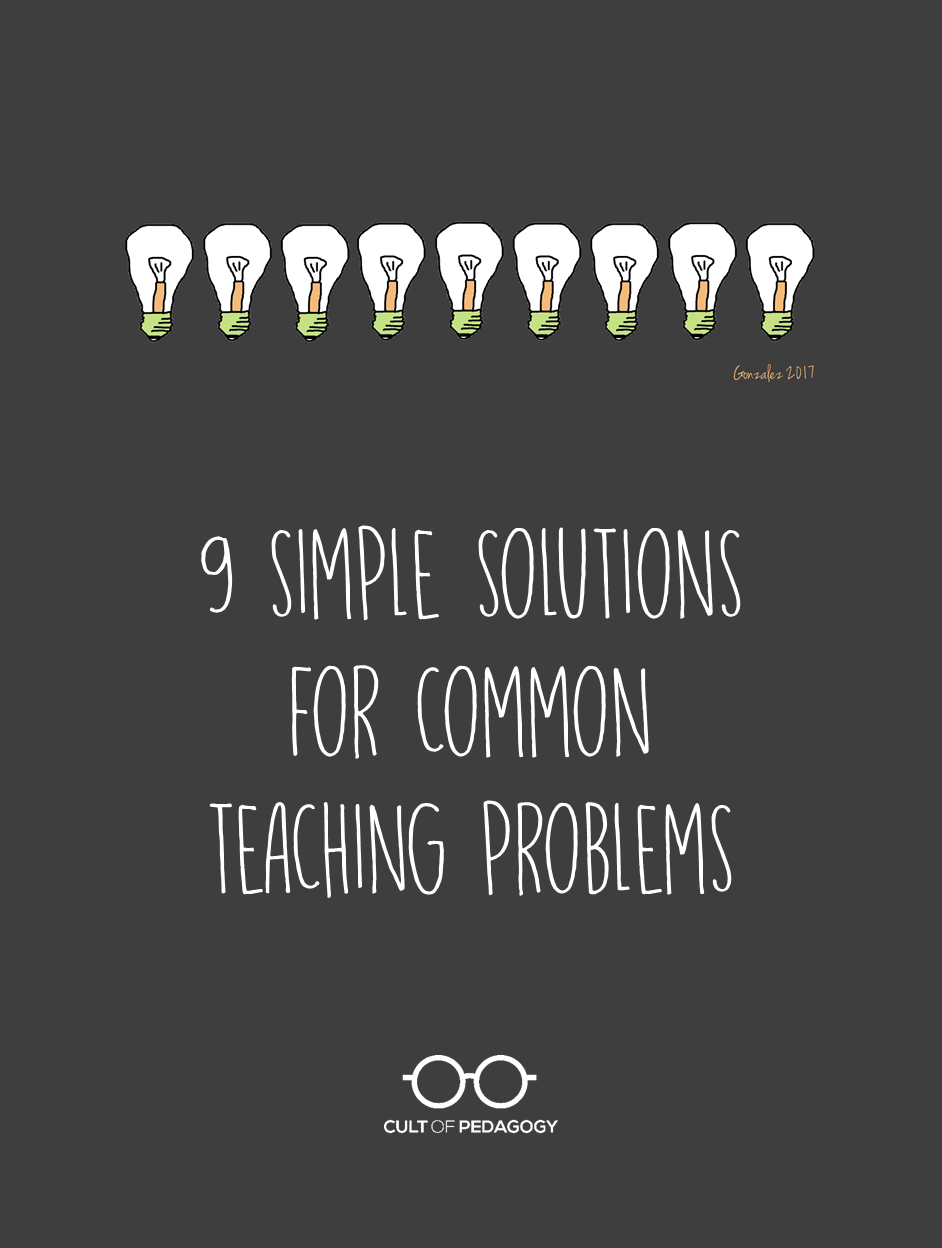
Listen to my interview with Mark Barnes ( transcript ):
This post contains Amazon Affiliate links; if you make a purchase from Amazon after going there through these links, Cult of Pedagogy receives a small commission at no extra cost to you. Thanks.
It’s pretty easy to avoid solving problems. It happens to everyone: A good chunk of the year has passed, you’ve got a routine going, and whatever problems you might have, you’ve basically accepted them for now. Fixing them would take too much time. The solution would probably be too complicated.
Not necessarily.
My buddy Mark Barnes, a veteran teacher and author of six education books, thinks the solutions to many of our education challenges are things we could start doing tomorrow. This philosophy was the guiding principle behind the 2015 book we wrote together, Hacking Education: 10 Quick Fixes for Every School. Since then, Barnes has published eight other Hack Learning books. He knows you don’t have time to read stacks of research-heavy, theoretical books. You want answers you can use right away. With this series, he aims to give educators “hacks”—solutions that can be implemented right now.

To give you a sampling of the kinds of solutions you’ll find in this series, we’re going to look at one idea from each book: Nine simple ideas that can have a big impact on student learning at your school. Although each hack has a blueprint for full implementation in the book it comes from, we’ll look at how you can get started right away. By the time you’re done reading, you should have found one you can try at your school. Let’s go.
1. Student Tech Gurus
From Hacking Education: 10 Quick Fixes for Every School
The Problem: Not enough tech support in your school. You have the tech, but when teachers or students need help, or something goes wrong, everything comes to a standstill because your current tech support staff doesn’t have the manpower to handle it all.
The Solution: Some schools are training teams of students to provide basic-level tech support for the school, even at the elementary level. These students attend staff trainings on new technology, act as teaching assistants when a class is working with a new or challenging technology, and even conduct their own training sessions for students and teachers. If students are trained to handle and prevent the lower-level problems, this frees up the paid tech support staff to focus on the more complex issues.
What You Can Do Tomorrow: Establishing a true tech team takes some time, but right away, you can make a list of students you know to be pretty tech-savvy. Beside their names, list the tools each student is proficient in. Put this list in a public location in your classroom. Then, the next time students are working with a piece of technology, have them go to the students who know that tool for help.
2. Inspiration Boards
From Make Writing: 5 Teaching Strategies that Turn Writer’s Workshop into a Maker Space
The Problem: In writing classes, students are sometimes slow to come up with ideas for what to write about.
The Solution: Dedicate a wall in your classroom as an Inspiration Board, a place where students can place images, quotes, rough ideas, the opening lines of a story they’re thinking of writing, anything that inspires them or shows fragments of inspiration. This gets the ideas out of students’ heads and into a public space, where they can generate fresh new ideas. “Students put an idea up, and then someone else maybe will see that idea and go, ‘Oh, I like that, and that makes me think of this,'” Barnes explains. “They’re getting thoughts out onto a board, and then starting to discuss those ideas, and ultimately those turn into those stories and projects and pieces of writing.”
What You Can Do Tomorrow: Clear everything off one of your bulletin boards and ask students to bring in something to hang on the board that inspires them—this can be a quote, an image, a poem, anything that can be affixed to a board. You may need to model this at first to get things going. If you teach more than one class period of writers, you could create separate boards for every class or just mix it all together.
3. Tracking Progress Transparently
From Hacking Assessment: 10 Ways to Go Gradeless in a Traditional Grades School
The Problem: Traditional grade books provide a very limited picture of a student’s progress, and students have no ownership of tracking their growth.
The Solution: Have students keep a record of their own progress in a “transparent” space—a Google doc, for example—where the student, teacher, and parents can view it any time. The information they record will vary depending on student age and subject area, but the document will become more valuable if you require students to go beyond numbers: Record each assignment, the feedback they got on it, the standard(s) being measured, and what goals they set in response to the feedback.
What You Can Do Tomorrow: Choose the record-keeping system you’re going to use—ideally, it will be something in the cloud, such as a Google Doc, but it can even be a chart on paper. Have students record the results of their most recent assignment, including the feedback they got and a goal for future growth, based on that feedback. Tell students you’re still just trying this out and get their feedback on how the system should evolve over time.
4. “Morecabulary”
From Hacking the Common Core: 10 Strategies for Amazing Learning in a Standardized World
The Problem: Students need to grow their vocabulary in all subject areas, but our most common methods of vocabulary instruction are dry and don’t lead to long-term retention.
The Solution: Instead of doing traditional dictionary and sentence-writing work, have students construct the meaning of vocabulary words in a variety of ways. One way of doing this is with a tool like Padlet , which is like an online corkboard. By creating a Padlet board for each word, students can all contribute their own definitions, sentences, even links to videos or articles that use the word in context. This kind of varied work will give students a more well-rounded, memorable experience with each word, and they’ll have more fun doing it, too.
What You Can Do Tomorrow: Get started with one word: Choose a term students typically get wrong in your subject area and create a Padlet for it. (If your school is light on tech, you can use a sheet of paper or part of a bulletin board instead.) Then take 15 minutes and have students contribute definitions, sentences, images, videos, or other resources to flesh out the meaning of that word. Stay involved in the process, so you can correct any misconceptions. Once kids are used to the process, it can be repeated for other words.
5. Broadcast Student Voices
From Hacking Leadership: 10 Ways Great Leaders Inspire Learning that Teachers, Students, and Parents Love
The Problem: Most educators say they want to “give students a voice,” but they don’t always know how to make that happen.
The Solution: Using podcasting and live streaming, we can literally broadcast student voices right out into our schools and communities. Students can talk about topics or events that matter to them, or they can even share their own writing pieces or class projects. Links to these podcasts and broadcasts can be shared through the school website, newsletter, or social media account.
What You Can Do Tomorrow: You can literally have students record and publish a podcast tomorrow using a free tool like Spreaker , which allows users to record podcasts right from a mobile device. For the sake of time, you might want to provide students with a starter topic or question, but once students get used to having a platform, let them take the reins.
6. OPB (Other People’s Books)
From Hacking Literacy: 5 Ways to Turn Any Classroom into a Culture of Readers
The Problem: Students need to be reading for pleasure, but your classroom doesn’t have enough books, and you can’t afford to buy any more.
The Solution: Build a massive classroom library with Other People’s Books—used books donated by parents, community members, and local businesses. Most people have a few books around the house that they’d be happy to donate; they just need to be asked. Then contact your public library—most libraries regularly purge their shelves of books to make room for new ones, and many would be happy to donate these to a classroom. Keep in mind that these books don’t have to be fiction: Student reading proficiency will grow if they read cookbooks, DIY home project books, old copies of the Guinness Book of World Records, really anything that isn’t inappropriate for school.
What You Can Do Tomorrow: Send an email out to staff and parents, explaining what you’re attempting to do and asking them to send in used books. Then start clearing some shelves!
7. Celebrity Couple Nickname Game
From Hacking Engagement: 50 Tips & Tools to Engage Teachers and Learners Daily
The Problem: Learning student names is essential for relationship-building, but it’s hard to learn lots of names quickly.
The Solution: In the same way that the media creates mashups of celebrity couples’ names (think Brangelina), you can construct similar mashups to create unique nicknames for students using their first and last name: Jason Matthews becomes JMat. Rhianna Johnson becomes RJo. Have students offer their own suggestions until you find one that’s just right. Although you will eventually need to learn students’ real names, these nicknames can help jar your memory more quickly than a standard list of names will.
What You Can Do Tomorrow: Obviously, if you’re reading this close to the beginning of a school year, you can plan to play this game with your students soon. But even if you’re way into the year and you already know everyone’s name, the game would make a fun bonding activity when you have a few spare minutes.
8. Boomerang Model
From Hacking Homework: 10 Strategies that Inspire Learning Outside the Classroom
The Problem: Students lack independent problem-solving skills when it comes to homework, relying too often on parents to “tell them how to do it.”
The Solution: Teach parents how to use the Boomerang Model, which empowers students to find solutions to their own homework problems. Barnes explains: “So they come to me, and they say, ‘Dad, I need help with this. I don’t get it.’ I’m going to respond with, ‘How can you help yourself? What strategy can you use that maybe you haven’t tried yet? Where should you start, because maybe you missed the real starting point? What evidence do you have to support this?’ If they say, ‘Is this right? Should I do this this way?’ I can say, ‘Well, what evidence do you have?’ We don’t want their automatic response to a struggle to be, ‘I need help from a teacher,’ or ‘I need help from a parent.’ We want them to help themselves.”
What You Can Do Tomorrow: Create a list of questions parents can “boomerang back” to their kids, then practice using them yourself, so students get used to hearing and responding to them. Introduce this concept to parents in a newsletter or better yet, a video demonstrating how it’s done.
9. Question Carousel
From Hacking Project-Based Learning: 10 Easy Steps to PBL and Inquiry in the Classroom
The Problem: When students work on a group project, they sometimes need fresh ideas to see the project or problem from all sides.
The Solution: The Question Carousel starts with students working in groups to generate something unique: A draft of an idea, a solution to a problem, the beginnings of a presentation of some kind. Then students rotate with their groups to study other groups’ products. At each stop, they leave questions for the original group; these questions help to clarify the product, clear up misunderstandings, point out problems, and fine-tune the final outcome.
What You Can Do Tomorrow: The next time you put students in groups to generate some kind of unique idea or solution, have students rotate in a Question Carousel to prompt deeper thinking.
Browse the Complete Hack Learning Series Library
The ideas presented here are just a small fraction of the solutions you’ll find in each of the Hack Learning books. More books are being added all the time (and the three below are just a few), so click here to see what’s new .
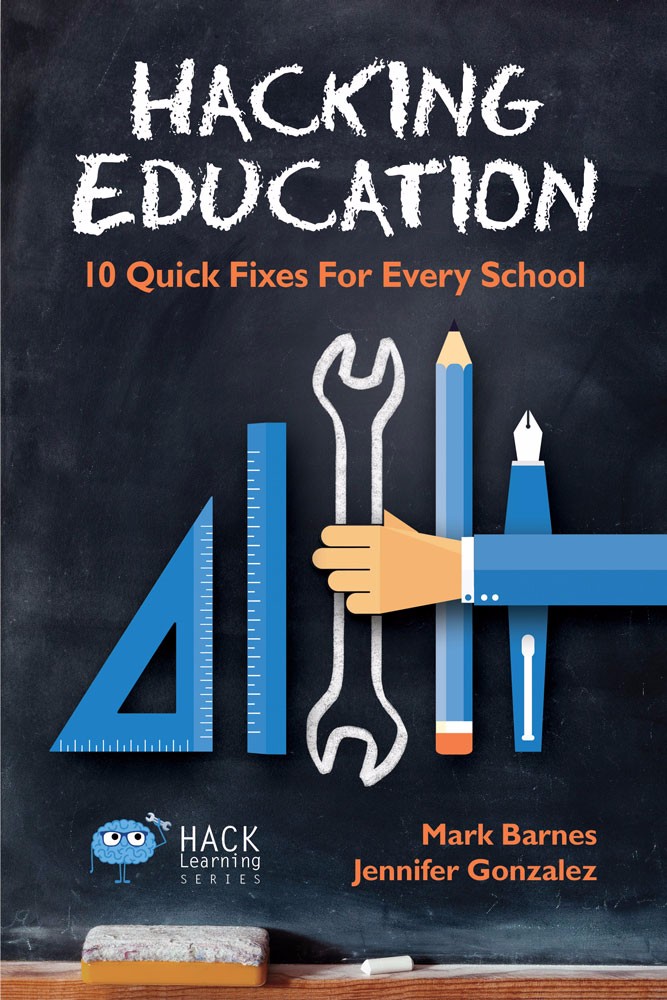
What to Read Next

Categories: Book Recommendations , Podcast
12 Comments
Hey Jen, Among many personal aspects to my life I am also thankful for your blog/posts/thoughts. It’s always a nice break to hear your voice pulling my thoughts not just to best teaching practices but to my student’s needs. Quick Question: Where’s the best place to purchase an entire set of your Hacking series books. i’m thinking of Christmas gifts for my PLC. –jeff Renton HS, Renton, WA
Hi Jeff! Can you tell me how many people this would include?
Jen, Discovery of your podcasts and website has enriched my own pedagogy and now that of my teaching candidates. As an art educator working with undergraduates in the field, it has been a mission of mine to broaden their understanding of becoming an art teacher beyond area specific content knowledge. As you inspire me, I hope to inspire them! Thank you for quenching a thirst. Have you already given away the books you mentioned??
Hi Jen & Marc It is interesting that I discovered all this great Hacks Books last week. I was in my bed reading about Hyperdocs and suddenly the great Amazon suggested me Hacking the Homework. I read the first sample and then the other titles appeared. I read all the samples including Hacking the Assessment, which was one of my favorites. I was unsure which one to buy that night, I picked 50 Hacks to Engagement. Just love it! My favorite part is the one Things that I Could do Tomorrow. Great work, I’ll buy more books in this series. Awesome tools to Hacks my teaching practice.
Hi Jen, I was really interested in your problem #8 where students have trouble problem solving on homework and rely too heavily on their parents for help. I’m a preservice math teacher, so we really aim to help students become good problem solvers. I thought your proposed idea of teaching parents how to use the Boomerang Model of responding to their children’s questions with targeted questions that empower students to find their own solutions was a really great idea because it reinforces what they’re being asked to do in the classroom. I also really liked your next steps of compiling a list of example questions for parents or making an example video. My only thought is that some parents might not see the benefit in this approach and might see it as being more work for them. How would you justify the boomerang method to a parent that isn’t convinced it’s useful?
I love all the topics …in this websites hope i have all … Im a teacher who wants more knowledge…
Thanks for an interesting set of solutions for common teaching problems. I was disappointed by only one: #6, OPB. No mention of a library or librarian in this one? School librarians are eager to partner with teachers to promote outside reading and they are experts in the best, most appealing books for the kids they work with. Town librarians are also great sources of support and information. A teacher doesn’t have to go it alone when it comes to promoting outside reading.
Hi Suzanne,
Thank you for the reminder. I absolutely did not mean to ignore the value of librarians here! The focus of the post was to give teachers actions they could take all on their own, without needing to depend on a school budget. In schools that have an abundance of books in the library, a lack of books may not really be an issue. But for underfunded schools, teachers may need to be more resourceful. I’m glad you pointed out the knowledge of librarians in terms of knowing what books would be the most appealing; regardless of a school’s budget, that kind of knowledge will always be incredibly useful.
Great point, Suzanne. I recently paired with the awesome librarian at my school for a thematic book walk. Our librarian, Amy, set up around the library dozens of books that related to our current unit of study. They were categorized by genre. Students spent time browsing the selections and choosing a book. It was a great way to expand the classroom library and integrate the school library into our class.
Thanks for sharing this, Jenn.
Unfortunately, in a district like mine, the librarians and media specialists have all been removed in the high schools due to budget constraints. The “media specialist” now is just a temp duty person or a school aide. The media center has become somewhere to store textbooks and checkout Chromebooks, but it is no longer the place to get real books or learn from the specialist working there. It is very, very sad.
Loved this episode! It got me excited to read and reread the Hacking books. So practical and inspiring! Thanks!!
Great work!
Leave a Reply
Your email address will not be published.
This Reading Mama
Books with a Clear Problem and Solution
By thisreadingmama 5 Comments
When teaching kids how to comprehend and/or write fiction text, often times it’s good to start with books and stories that have a clear problem and solution text structure .
This means that the story line introduces characters and a problem at the beginning –> the character(s) try to solve the problem in the middle, which rises to a climax –> and at the end, the problem is solved, with the “good” guy winning.
The determining importance post , from our Reading Comprehension Series , has a great visual to SHOW this progression in fiction text. We also have lots of free, graphic organizers for fiction text structure here .
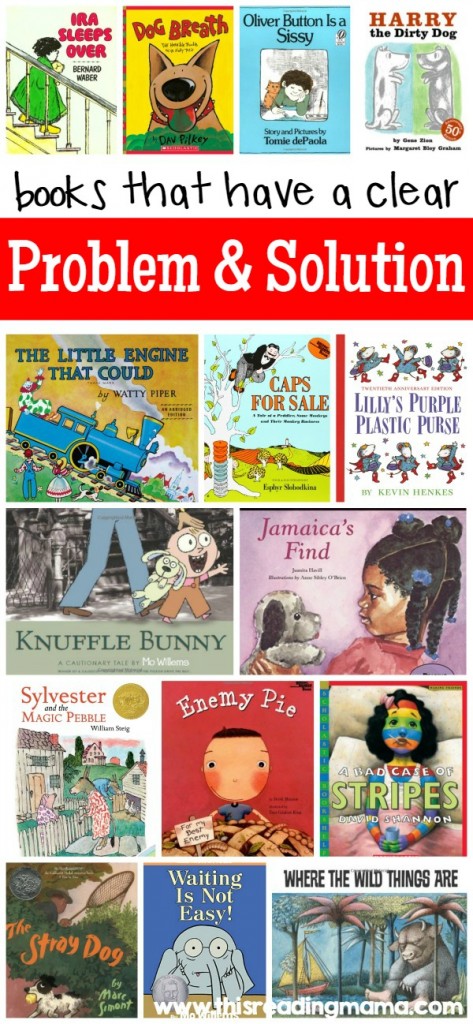
*This post contains affiliate links.
Books with a Clear Problem and Solution Structure
Today, I’m sharing 16 of our favorite books that feature a clear problem and solution structure to help kids see how fiction texts are often composed. By the way, these texts aren’t just great for comprehension, but can also be used to help kids WRITE their own fiction stories as well, an extra bonus!
Ira Sleeps Over by Bernard Waber is about boy named Ira, who becomes anxious quite about what his friend, Reggie, will think of him if he brings his teddy bear over to spend the night. This is a GREAT book for teaching text-to-self connections as well as the problem and solution text structure.
Dog Breath by Dav Pilkey is a pun-filled book about a family pet, Hally Tosis, who has incredibly bad breath. The Tosis family tries to help Hally get rid of the bad breath to no avail. But dog breath may actually be a good thing, especially when two thieves visit the Tosis family!
Oliver Button is a Sissy by Tomie dePaola is about a little boy named Oliver who is clearly different than all the other boys at school. He’d rather paint, tap dance, and read instead of playing sports like all the other boys, which earns him the name, “Sissy.” But once he shows his dancing skills at the school talent show, he receives a new name – “Star.”
Harry the Dirty Dog by Gene Zion features a cute little family puppy who despises his baths. So much so, that he hides his bath brush and runs away. As he is away, he gets very dirty, from a white dog with black spots to a black dog with white spots. As hunger strikes, he heads home only to find that the family doesn’t recognize him.
The Little Engine by Watty Piper is a classic book that features a clear problem and solution structure as the little engine helps the broken down engine climb over the mountain to deliver toys to all the boys and girls on the other side of the mountain.
Caps for Sale by Esphyr Slobodkina is such a fun and interactive book about a peddler who gets his caps stolen by a bunch of monkeys. He tries, in anger, to get his caps back, only to be mocked by the monkeys. What will he do to get all those caps back? Such a simple solution that kids may be able to predict as they read along.
Any of Kevin Henkes’ books are great for teaching the problem and solution text structure with fiction. One of my daughter’s favorites is Lilly’s Purple Plastic Purse . Lily loves her purple plastic purse so much she brings it to school to share, but Mr. Slinger, her teacher, takes it from her. To get revenge, she draws a mean picture of her teacher only to have him see it. She begins to feel great remorse for her actions and wants to make amends. Will Mrs. Slinger forgive her?
Mo Willems is one of my kids’ favorite authors. Knuffle Bunny was probably the first book they were introduced to by him. Trixie and Daddy take a trip to the laudromat. On the way home, Trixie realizes Knuffle Bunny has been left behind. Follow the journey of Trixie and Daddy as they try to get Knuffle Bunny back. There are more Knuffle Bunny adventures including Knuffle Bunny Too , but I warn you to keep a tissue box handy when you read Knuffle Bunny Free .
Jamaica’s Find by Juanita Havill features a little girl, Jamaica, who finds a stuffed dog and hat at the park. She takes the hat to the lost and found, but decides to keep the stuffed dog for herself. She finds herself wondering if she’s done the right thing by keeping the dog. She finally decides to take it back to the lost and found and finds a friend along the way. This book is a great one to show that characters don’t always face external problems; sometimes characters have internal struggles and problems.
Sylvester and the Magic Pebble by William Steig is about a donkey named Sylvester who finds a magic pebble. Just then, a lion comes to attack him and he wishes to be a rock. Sylvester is changed into a rock, but he can no longer hold the magic pebble to wish himself back into his usual form. His family looks high and low for him and is eventually returned to his family. William Steig has such a way with words and his books can fit into multiple comprehension strategies, such as asking questions .
Enemy Pie by Derek Muson is such a fantastic book for many comprehension strategies. It’s been one of my favorites for a long time and I LOVE reading it to kids who have never heard the story. When a bully (Jeremy Ross) moves into the neighborhood, the young boy’s summer is ruined. That is until the young boy’s father says he can help get rid of the bully (enemy) by making him some enemy pie. The boy wonders: What is “enemy pie” and how does it work? Will it get rid of enemies? What does it taste like? Will “enemy pie” solve all his problems?
Camilla worries about what others think of her so much that on the first day of school, she wakes up with a bad case of the stripes…and much more! Her body adds on the ailments of every fear she has until a kind, old lady helps her to learn that it’s okay to just be herself. A Bad Case of the Stripes by David Shannon has an explicit external conflict, but kids have to read “in between the lines” to get the internal problem Camilla faces and eventually conquers.
The Stray Dog by Marc Simont is one of the books we used an example for our determining importance post with fiction . A family goes for a nice picnic away from the city only to meet a cute, stray dog. They leave the park without the dog, but think about him all week. The next weekend, the family returns to the park, hoping that the stray dog will show up again. He does, but now they have another obstacle to overcome. Such a cute book and one that requires kids to pay attention to the story that the pictures also tell.
If I had a dollar for every Elephant & Piggie book we’ve read {and re-read} this school year, I’d be rich! 🙂 All of his books contain a clear problem and solution format, but in such a fun and playful way that kids WANT to read these. While the words are written for the 1st grade level, older kids will enjoy them, too. Waiting is Not Easy! is one of Mo Willems’ newest Elephant & Piggie books and was also featured in our determining importance post with fiction from our Reading Comprehension Series .
Where the Wild Things Are by Maurice Sendak is another classic book that features a clear problem and solution structure. Max is banished to his room without supper because of his behavior and falls asleep only to “wake up” in a world of wild things. Max begins to long for home again and wakes up to find that his mother has left his supper in his room to eat. I love how Sendak asks kids to read between the lines a bit to figure out how his supper got there and why. So adorable and such a classic!
More Book Lists You May Enjoy:

- 50+ Books for Modeling Comprehension Strategies
- Books to Help you Teach Comprehension
- Letter of the Week Book Lists & Letter Packs
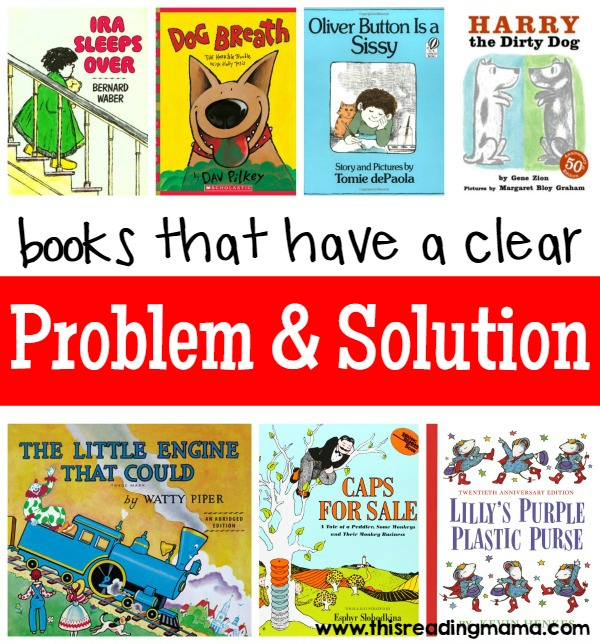
Want MORE Free Teaching Resources?
Join thousands of other subscribers to get hands-on activities and printables delivered right to your inbox!
April 25, 2016 at 6:38 pm
This was helpful. Thanks, I have most of these books.
November 4, 2016 at 11:22 am
Is this list available somewhere in document form?
November 4, 2016 at 11:47 pm
I don’t believe so, but that’s a GREAT idea!
December 7, 2020 at 7:51 pm
Loved the tips and advice in your article. You explained it well and I guess I am going to apply these in my future writing project. You have to write the book that wants to be written. And if the book will be too difficult for grown-ups, then you write it for children. Come and visit my blog on Tips on How to Write a Story That’s Perfect for Children Hope this will help.
Thanks Attilio
January 8, 2021 at 9:19 pm
This is useful information that helps me in my future writing. Reading is to the mind what exercise is to the body. It is also to train your mind to imagination to think big. Keep it up!
Leave a Reply Cancel reply
Your email address will not be published. Required fields are marked *
This site uses Akismet to reduce spam. Learn how your comment data is processed .
Teaching Perks
Grab a FREE differentiated math lesson for 1st grade!
3 Fun Ways to Teach Problems and Solutions for Reading Comprehension in 1st Grade
Teaching students to text structure activities like problems and solutions for reading comprehension is a skill that we can all agree is essential for our students. By understanding what is being read, we can build more language skills, math skills, history skills, social skills, and so much more.
Want to try a FREE reading comprehension mini lesson? Download by clicking the picture below!
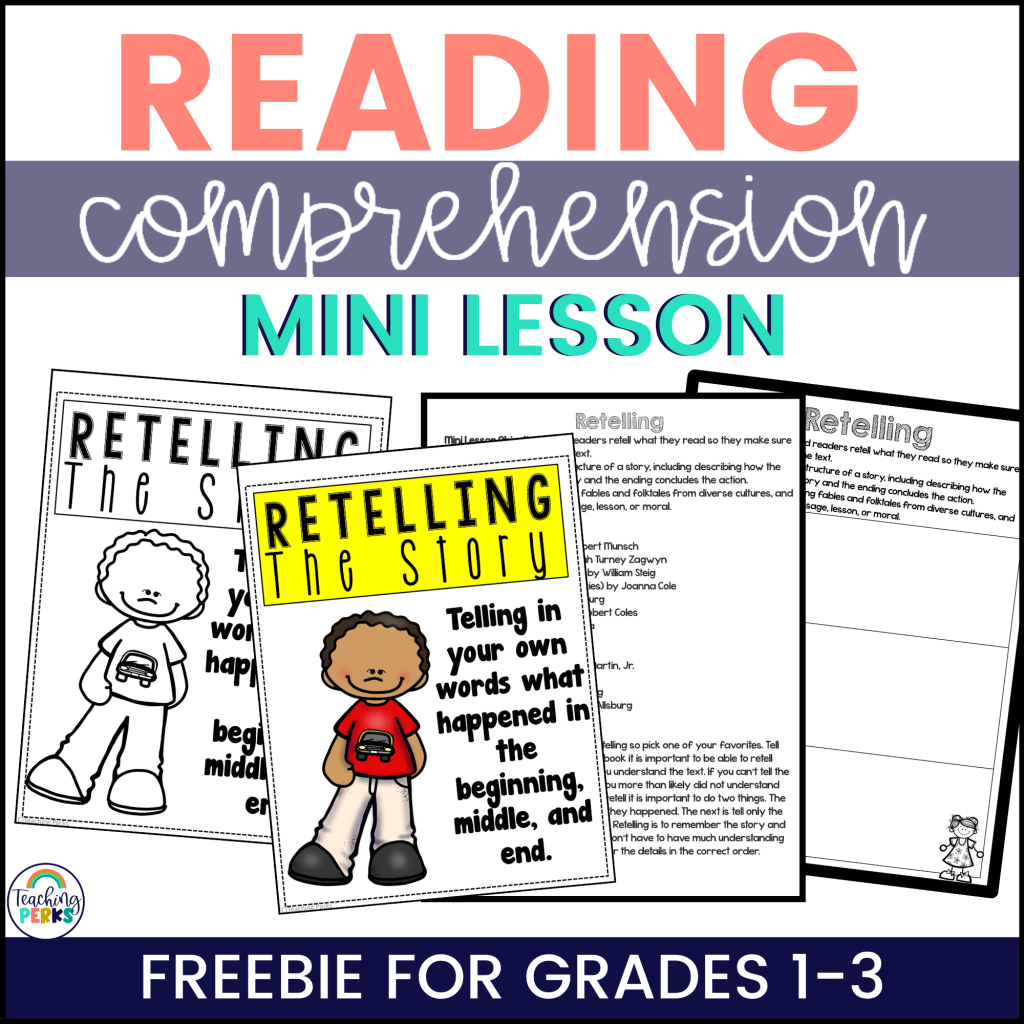
Since reading comprehension is such a basic building block, it is essential to talk about different reading strategies. While there are many to master, which you can find an overview in my blog about Reading Strategies for Comprehension: 15 Strategies You Must Teach Students to Master , we are going to focus on one of my favorite text structure activities today: Problems and Solutions.

If you want to catch up on specific reading comprehension strategies and text structure activities that I have blog posts full of information and ideas on main idea and key details , visualizing , comparing and contrasting , making predictions , and retelling . You can also download some free resources in some of these posts to help get you started teaching these strategies.
What are Problems and Solutions in Reading Comprehension?
Identifying problems and solutions within stories can help students understand what they are reading. It really points out why the author has written the story. Upon finishing a story with students, figure out who the main character is and what problem they had. Oftentimes in the readers, we have for students the problem is pretty clear. Identify the problem, then ask how the problem was solved. Were there others who helped solve the problem? How did they figure out how to solve the problem? Sometimes there are more than one problem and/or solution for even better discussion.
3 Examples of Fun & Engaging Activities to Teach Problems and Solutions
Obviously, you and your students can do the traditional reading of the story, then talk about the problem and solution. Where’s the fun in that, though? These ideas will keep your students engaged and entertained while learning an important reading comprehension skill.

Classroom Problems & Solutions
Sit down as a class and brainstorm problems that your students see in your classroom. Your students may come up with ideas you wouldn’t, but be careful to let your students know that this is not an attack on classmates or teachers, but about improvements that can be made to the classroom. For example, maybe the trash can is too far away from the sink, the whiteboard markers squeak, or there is a table that wobbles in the back of the class. Take one problem as a class, divide students into smaller groups, or have them work independently with a problem each. First, have your students identify how the problem may have come to be. Next, find out what exactly the problem is and why it is a problem. Finally, have them brainstorm the best solution they can come up with for the problem. Depending on your classroom, you can have your students write, draw, or present their problem and solution for the class.
Problem & Solutions Matching
Make sure each student has a T-chart labeled Problem on one side and Solution on the other. You can easily create these on whiteboards or print T-charts for each student. Come up with some great ideas of problems and solutions.
- Fire = Firetruck
- Rain = Umbrella
- Sun = Lemonade
- Grass = Lawn Mower
- Dirty Dog = Soap & Sponge
Cut out pictures of these items and more as you come up with different ideas, and allow your students to make matches of problems and solutions.
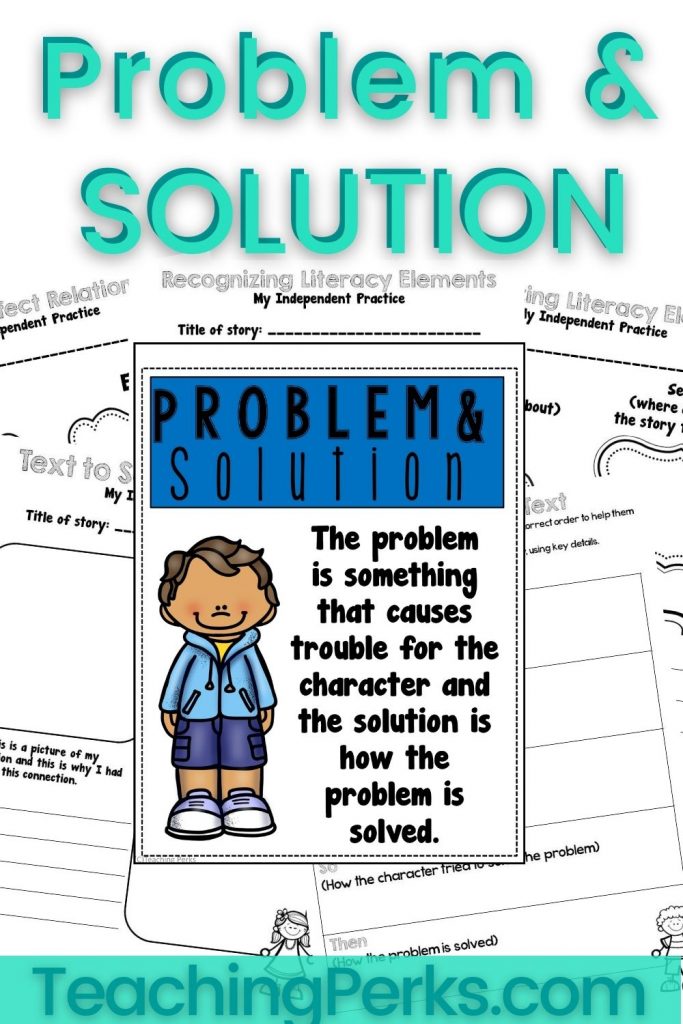
What’s The Problem
Another fun activity my class likes to do is called “What’s The Problem.” I give partners a problem such as I lost my coat. Their job is to come up with a three solutions that could go with that problem. They might write down “I checked the lost and found” or “my mom took me shopping to buy a new coat.”
Once they have three possible solutions they get with another set of partners and read them one of their solutions. Group two’s job is to identify what the problem could be. If group one says “I checked the lost and found” and group two says “I couldn’t find my lunch box” that would not be correct so group one will read their next possible solution, “my mom took me shopping to buy a new coat.” Group two now knows lost and found was checked and that mom took me shopping for a new coat so they should be closer to determining what the real problem was. If they don’t get it by the third possible solution, group one tells them what the problem was.

Reading Skills Bundles & Reading Comprehension Mini-Lessons
For mini-lessons specifically designed for teaching young learners about reading skills and reading comprehension, there are many resources available to you. Teaching Perks Teaching Resources has great options available for you to peruse here . There are specific text structure activities available for the common core standards of First Grade , Second Grade , and Third Grade , as well as a resource that is useful for any grade level .
Want to try a free sample retelling lesson that can be used with any book? This free download also comes with 12 amazing book suggestions that you can use with any retelling lesson.

There are lots of great options out there to explore Problems and Solutions as reading comprehension strategies with your students. The more practice you and your students get, the more natural searching for problems and solutions will be. If you are intrigued and want more already made text structure activities that teach crucial reading comprehension strategies, click here!
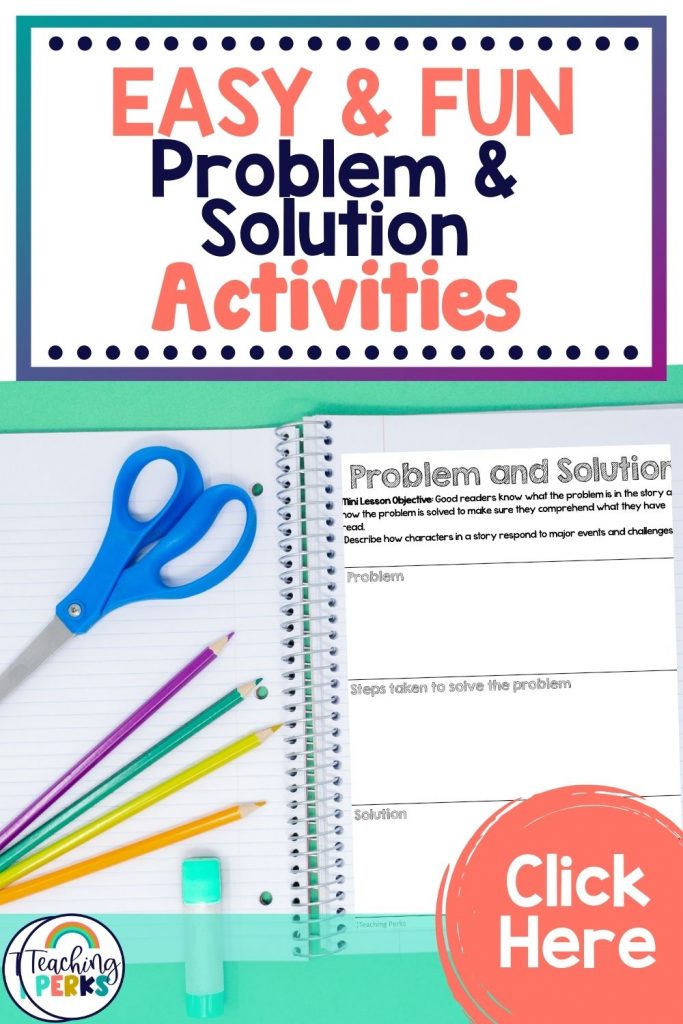
You May Also Like
Interactive Read-Alouds…..What They Are, How To Use Them & Why They Are So Important!
How Passages For Close Reading Can Ignite Students’ Passion For Reading
Close Reading Passages | Informational Comprehension Text | Print & Digital
Interactive Read Alouds – A Year Long Bundle
[…] alouds are a great way to have students practice making predictions, finding the problem and solution, comparing and contrasting, visualizing and so much […]
[…] comprehension strategies for students will also include finding the problem and solution. Knowing the problem and solution not only helps comprehension but will come […]
Leave a Reply Cancel reply
Your email address will not be published. Required fields are marked *

Problem and Solution Text Structure – How to Teach It
Problem and solution text structure explains difficult situations and resolutions. Let’s take a look at how to teach kids to identify and write in this format. In addition to the organization of ideas, they need to know about transition terms.

Ms. Sneed Teaches Problem and Solution Text Structure
Once again, our favorite fourth grade teacher sat at the side table with her teaching partner. “Let’s continue planning our ELA block ,” she said, “This week, we’ve been talking about structures of nonfiction .”
“Right,” said Mr. Frank. “First, we talked about sequence . Then we explored cause and effect . What’s next?”
“Problem and solution text structure,” Ms. Sneed responded.
Reading Problem and Solution Text Structure
The teacher pointed to the screen of her laptop. “Once again, let’s look at our informational text structures slideshow .”
As Mr. Frank looked on, Ms. Sneed scrolled down. “When we teach problem and solution text structure,” she said, “we ask kids to look for a difficult situation and steps taken to resolve it. To help them understand, our graphic organizer uses a question mark, an arrow, and an exclamation point.”
“Then kids study a sample paragraph,” she said.
“Ah yes, I remember this from last year,” Mr. Frank commented. “Mining practices in Michigan were feared to damage the environment. In response, the Ojibwa made requests, set up a blockade, and held meanings. As a result, the mine was closed.”

Looking for Transition Terms
“Additionally, the slideshow focuses on linking words, or transitions,” Ms. Sneed said. “In addition to problem and solution , kids should look for words like finally , so , and consequently .”
“Hmm, the last three could also be used in other informational text structures,” her teaching partner said. “We’ll really have to emphasize that this one includes a difficult situation and steps toward resolution.”

Using a Simple Organizer
Now Mr. Frank turned to his laptop. “Remember this?”
He turned his screen so Ms. Sneed could see it better. “This graphic organizer will help our kids take notes when they study the problem and solution text structure. Additionally, it will help them organize their ideas when they write in this format.”

Writing Paragraphs with Problem and Solution Text Structure
“We’ve agreed that our kids will write using each format this year. What topic should we use for this?” asked Ms. Sneed.
For a moment, Mr. Frank sat deep in thought. Then he turned back to his laptop. In just a few seconds, he pulled up a file.
“How about another science connection?” He pointed to his screen. “In this earth science activity, kids learn about wastewater treatment .”
“Say no more!” Ms. Sneed exclaimed. “With just those two words, you’ve illustrated it: wastewater is the problem, and treatment is the solution.”

More Cross-Curricular Connections
After scrolling a bit farther in the resource, Mr. Frank continued. “For each stage in the wastewater treatment process, kids tell what science ideas helped develop it. When they finish these worksheets, we can have them explain using the problem and solution text structure.”
Ms. Sneed grinned. “Yep, and they’ll have plenty of information for a thorough response. I love it.”

Enjoy Teaching
Mr. Frank sighed. “You know, I can think of a few more applications for the problem and solution text structure. We just have to remember to incorporate it into our plans.”
His teaching partner nodded and smiled. “Let’s do it. Whenever we discuss ways to weave teaching informational text into other lessons, our kids understand it even better.”


DON’T MISS A THING! SUBSCRIBE TO THE NEWSLETTER

- November 28, 2021
Teaching Problem and Solution with Picture Books
Teaching problem and solution gets a little easier with these picture books. Each book has problem and solution scenarios built into the plot, some more obvious than others.
Disclosure: This post contains affiliate links. If you purchase anything through them, I will get a small referral fee and you will be supporting me and my blog at no extra cost to you, so thank you! You can find more information here .
Why Use Picture Books for Teaching Problem and Solution?
Understanding problem and solution helps your students develop problem-solving and creative thinking skills. Exploring picture books with problem and solution plots helps them see a problem being introduced, how the character(s) try to solve it and how they finally resolve the issue.
In picture books with problem and solution scenarios, your students will see characters who:
- use knowledge to solve problems independently
- predict outcomes
- think things through
- make good decisions
- try new ways to solve problems
- make mistakes and try again
- recognize breakthroughs
- use trial and error to find a solution
Discussion Questions For Teaching Problem and Solution
- Describe the different ways the characters were effective problem-solvers.
- How did [character] solve the problem? What strategies did they use?
- Why do you think [character] was an effective problem solver?
- Why did [character’s] idea work in the end? Did they think about how their decisions would affect the outcome and other characters?
- Did [character] make good decisions? Is there anything they could have done differently?
- Think of possible solutions for [character’s] problem.
- Did [character] work independently to solve the problem or did they work collaboratively? Was this the best strategy?
- Does a thinker have to be brave, a risk-taker….?
- Did their decision making surprise you? Why or why not?
- Was [character] creative in their thinking? Explain your answer.
- How did [character’s] way of thinking impact the outcome of the story?

Book Chaos? Go Digital, Get Organized!
Hit the button to save yourself from the piles of book ideas you have, never to be looked at again.
You have successfully joined our subscriber list.
Picture Books for Teaching Problem and Solution

Ada Twist, Scientist by Andrea Beaty
Ada Twist scientific curiosity propels her to question, hypothesize, experiment, and unravel the world's mysteries, including one close to home. Ada Twist, Scientist fuels discussions around the power of curiosity, the spirit of inquiry, the pursuit of knowledge, and the importance of creative thinking.

Ada's Violin: The Story of the Recycled Orchestra of Paraguay by Susan Hood
Ada Río dreams of playing the violin, but her financial circumstances prevent her from pursuing this aspiration. This changes with the arrival of an innovative music teacher who creates instruments from discarded rubbish.
Paraguay's inspiring world-renowned Recycled Orchestra highlights the power of music, ingenuity, and the human spirit.

After the Fall by Dan Santat
A fresh retelling of the classic Humpty Dumpty story told from the egg's perspective. Humpty Dumpty bravely faces his fear of heights, teaching us about courage, overcoming adversity, and the importance of self-esteem.
After the Fall promotes discussions around character traits, perspectives, and a growth mindset. It encourages students to understand and embrace their fears, foster adaptability, and celebrate resilience.

A Bad Case of the Stripes by David Shannon
Camilla Cream loves lima beans but won't eat them because her friends hate them. A mysterious illness causes her to become what others think she should be. Only when she embraces her true self does she recover.
A Bad Case of the Stripes serves as a reminder that individuality should be celebrated and that personal growth stems from self-acceptance and the courage to resist societal pressures.

Black Dog by Levi Pinfold
Black Dog takes us to a family home where a large black dog grows in size and menace, causing fear among the family members. Yet, the smallest one shows immense courage and open-mindedness to discover the truth about the dog.
Engage your students in discussions about overcoming fears, taking risks, and not letting fear control our perception. Encourage them to conquer their fears and take on challenges bravely.

A Chair For My Mother by Vera B. Williams
A Chair for My Mother illuminates the power of love, family, and community even in the most challenging times. Rosa, her mother, and her grandmother lose their home to a devastating fire.
The book gives us a glimpse into poverty, the importance of saving money, the impact of community kindness and generosity, and the power of perseverance, even in the face of adversity.

Chalk by Bill Thomson
Three friends find a bag of magical chalk at the park on a rainy day – whatever they draw becomes real. A sun clears clouds, butterflies fly, and dinosaurs leap from the 2D realm. When a child's drawn dinosaur chases them, they must creatively resolve the problem.
Chalk promotes creativity, problem-solving, the power of imagination and consequences, teaching children that every action can have effects they must deal with.

Click, Clack, Moo Cows That Type by Doreen Cronin
When Farmer Brown's cows stumble upon a typewriter, they start typing letters demanding electric blankets. Things escalate quickly as the cows strike, and Duck is the mediator. But the peace doesn't last long when the ducks have their own demands!
Click, Clack, Moo story promotes dialogue about fair negotiations' importance, communication's power, and the essence of compromise.

Dragons Love Tacos by Adam Rubin
Dragons may love tacos but hate spicy salsa. A boy discovers this peculiarity and hosts a taco party for his dragon friends. The party takes an unexpected turn when the salsa, much to the dragons' dismay, turns out to be spicy, leading to a chaotic and fiery mess.
Dragons Love Tacos offers opportunities to discuss the concepts of problem-solving, cause and effect, and the importance of careful planning and reading labels!

Enemy Pie by Derek Munson
When Jeremy Ross moves to town, a boy’s life changes for the worse. He is Jeremy’s enemy. Dad advises making an enemy pie, but it will only work if he spends the whole day with his enemy. They end up having so much fun the boy doesn’t need the pie. Use to discuss kindness, conflict resolution, bullying, and problem-solving.

Ernest, the Moose Who Doesn't Fit by Catherine Rayner
Ernest the moose is so LARGE he can’t fit inside the book. Determined, he shimmies, shifts, and shuffles his body but he just won’t fit. With a bit of thought his friend, chipmunk, comes up with a solution. Reinforces themes of determination, problem-solving and creative thinking.

Fossil by Bill Thomson
This is the second of two picture books with a problem and solution by Bill Thomson. A young boy and his dog stumble upon a fossil which springs to life when touched! The boy excitedly cracks open more rocks, revealing more living fossils. But the excitement quickly turns into terror when he discovers a pterodactyl, which swoops down and flies off with his dog.
Fossil encourages discussions on curiosity, discovery, the unexpected consequences of our actions and problem and solution.

How the Ladies Stopped the Wind by Bruce McMillan
The wind in Iceland is so strong a group of women decide to fix the problem. They plant trees to limit its effects and overcome problems through problem-solving, cooperation and persistence.

Jabari Jumps by Gaia Cornwall
Jabari resolves to jump off the diving board for the first time. Despite his determination, fear and uncertainty hold him back. But with his father's gentle encouragement, Jabari finds the courage to make the leap.
Jabari Jumps explores a growth mindset, courage, risk-taking, determination, and overcoming fears. It is also great for your students to make connections to Jabari's fear of trying something new.

Journey by Aaron Becker
A lonely girl discovers a magic red marker and creates a door that transports her into an enchanting world filled with wondrous landscapes and adventure. She witnesses an evil emperor capture a majestic bird. She outsmarts the emperor's army to free the bird.
The girl's journey inspires courage in facing challenges, persistence in pursuing goals, and thinking outside the box to overcome obstacles.

King Bidgood's in the Bathtub by Audrey Wood
This is the first of two picture books with a problem and solution by Audrey Wood. King Bidgood enjoys having a bath so much he won’t get out. His page calls upon the court for help. Nothing works, so while everyone is despairing of what to do the page plugs the plug! Use to teach sequencing, creative thinking, problem & solution and prediction.

Lilly's Purple Plastic Purse by Kevin Henkes
Lilly adores her school, teacher, and purple plastic purse. Her enthusiasm for her purse leads her on an unexpected journey of self-discovery, teaching her important lessons about self-management, forgiveness, integrity, and self-reflection.
Through Lilly's experiences, readers learn the value of controlling their impulses and honesty. Lilly's experiences teach the importance of second chances, making amends, and learning from our actions.

The Little Mouse, The Red Ripe Strawberry, and the Big Hungry Bear by Audrey Wood
This is the second of two picture books with a problem and solution by Audrey Wood. The narrator attempts to convince a little mouse to share a recently picked succulent strawberry. Worried about a big, hungry bear, the mouse employs various strategies, including disguising and locking away the fruit, to keep it safe.
The Little Mouse, The Red Ripe Strawberry, and the Big Hungry Bear promotes discussions on sharing, problem-solving, creative thinking and cause and effect.

The Lumberjack’s Beard by Duncan Beedie
Jim chops down trees in the forest without considering the repercussions. His actions make many animals homeless, so Jim allows them to reside in his huge beard. He replants the trees and waits for them to grow so the animals can return to their natural habitats.
The Lumberjack's Beard encourages discussions about environmental conservation, cause and effect, and problem-solving and highlights how people can rectify mistakes.

The Marvellous Moon Map by Teresa Heapy
Mouse wants to find the moon with his own moon map. His friend, Bear thinks it would be better to plan and organise the trip. Mouse heads off alone but ends up lost with his map that can’t help him. Luckily, Bear helps him out him and they discover something better than the moon. Reinforces themes of friendship, organisation, creative thinking and problem-solving.

Mufaro's Beautiful Daughters by John Steptoe
Mufaro's two daughters react differently to the King's search for a wife – one is aggressive and selfish, the other kind and dignified. The king disguises himself to learn the true nature of both girls and chooses Nyasha, the kind and generous daughter, to be the queen. This African folktale promotes themes of jealousy, vanity and kindness.

Our Little Inventor by Sher Rill Ng
Nell has an ingenious invention to solve the pollution problem in the Big City. She sets off on a journey to the city, far from where she lives. She finds the pollution is much worse than she expected. Nell is dismayed when city leaders mock her. With unexpected help and Nell’s determination, she shows her machine to the city. Promotes girls in STEM, pollution, determination, perseverance, critical thinking and problem-solving.

Outfoxed by Claudia Boldt
Harold, a fox, is challenged by his father to catch a chicken. He decides to follow his heart and helps the chicken escape. Reinforces themes of empathy, independence, problem-solving and creative thinking.

The Paper Bag Princess by Robert Munsch
Princess Elizabeth is a resourceful young girl who must outsmart a dragon to save her prince while dressed in a humble paper bag. The Paper Bag Princess invites discussions about empowerment, courage, independence, and challenging traditional gender roles by illustrating the strength of character over appearance. It emphasises that real heroines can save the day with their wit and courage, regardless of appearance.

Phileas's Fortune: A Story about Self-Expression by Agnes de Lestrade
Large factories churn out beautiful, ugly and funny words. People purchase, then swallow the words to communicate. Not all words are equal and the cost of each word varies. Phileas catches three discarded, random words to express his love for Cybele. Reinforces themes of communication, perseverance, problem-solving, risk-taking and creative thinking.

Rainbow Weaver by Linda Elovitz Marshall
Ixchel, a young Mayan girl, is passionate about continuing her community's weaving tradition. Unable to use traditional materials, she innovatively uses colourful plastic bags, transforming waste into a woven rainbow fabric.
Rainbow Weaver sparks discussions on sustainability and recycling, empowering indigenous female characters, persistence and creative problem-solving.

Ralf by Jean Jullien
Ralf is always getting under everyones feet no matter what hr does. One night he smells smoke and stretches his body around the house trying to wake the family. After being saved, the family accept Ralf for who he is even if he still gets in the way. Reinforces themes of acceptance, caring, courage and problem & solution.

Star in the Jar by Sam Hay
A little boy finds a star and keeps it in a jar. He makes the decision to help the sad star get home., but wonders how to do this. He makes a star shape in the garden and the stars lift their little friend home.

Stuck by Oliver Jeffers
This is the first of two picture books with a problem and solution by Oliver Jeffers. When Floyd's kite gets stuck in a tree, he throws his shoes in an attempt to free it. However, when that doesn't work, Floyd resorts to increasingly outrageous objects (even people!) to dislodge the kite.
Stuck ignites discussions on cause and effect, creative problem-solving strategies, persistence in the face of obstacles, resourcefulness and initiative and adaptability in new situations.

Swimmy by Leo Lionni
After almost being eaten by a big fish, Swimmy works together with a school of fish to frighten off the big tuna. Use to promote problem & solution, cooperation, courage and overcoming fear.

This Moose Belongs to Me by Oliver Jeffers
This is the second of two picture books with a problem and solution by Oliver Jeffers. Wilfred is an organised boy who lives his life by rules. He claims a wandering moose as his new pet and names him Marcel. The moose is not keen on Wilfred’s rules and meets an old lady who claims him as her own. Wilfred recognises Marcel’s independence and learns how to compromise.

Wangari Maathai by Franck Prevot
The late Nobel Laureate Wangari Maathai sparked a revolutionary movement in Africa to challenge deforestation. In a bold move, she championed African women to plant trees, ultimately helping cultivate lush farms and thriving communities. Maathai also provided seedlings to men, school children, and even soldiers, spurring further reforestation efforts and making a lasting impact.

When the Rain Comes by Alma Fullerton
In rural Sri Lanka, Malini helps plant the rice crop for the first time. The ox-cart arrives full of seedlings and the driver asks her to care for the ox. The skies darken and the monsoon rain falls, separating Malini from everyone. Rather than running for safety, she saves all the seeds from ruin. Use to teach responsibility, courage and problem & solution.
What are your favourite picture books for teaching problem and solution in the your classroom?
Get access to the FREE Resource Library
All the latest news, resources and updates direct to your inbox, 2 thoughts on “teaching problem and solution with picture books”.
As far as I might be concerned, the most awesome aspect of kids’ books is the significant statements that epitomize a whole book in a sentence or two. Nobody will at any point settle on the “best” quotes, however here are a portion of my top choices!
An amazing post with great tips as always. Anyone will find your post useful. Keep up the good work.
Leave a Reply Cancel reply
Your email address will not be published. Required fields are marked *
This site uses Akismet to reduce spam. Learn how your comment data is processed .

- Children's Library Lady
- Site Design by Laine Sutherland Designs

Join over 100,000 educators for tips & tricks in the Facebook group .
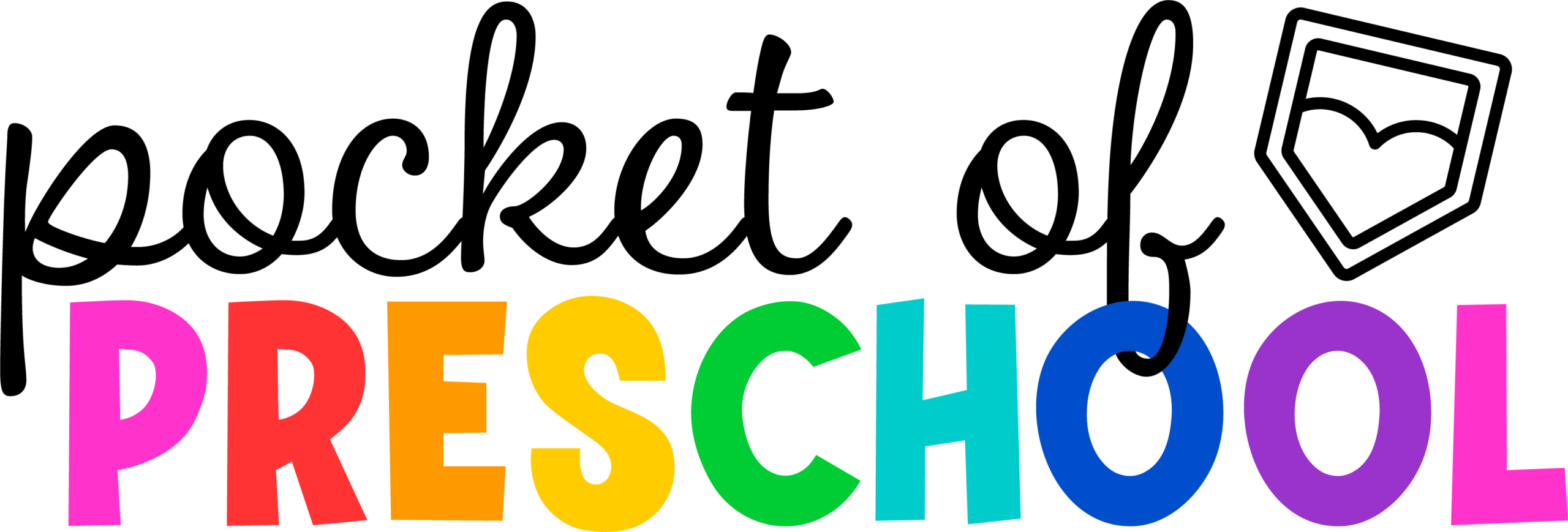
- Back to School
Teaching Tips
Social emotional, problem solving with little learners (preschool, pre-k, and kindergarten), share this post:.
- Share on Twitter Share on Twitter
- Share on Facebook Share on Facebook
- Share on Pinterest Share on Pinterest
- Share via Email Share via Email
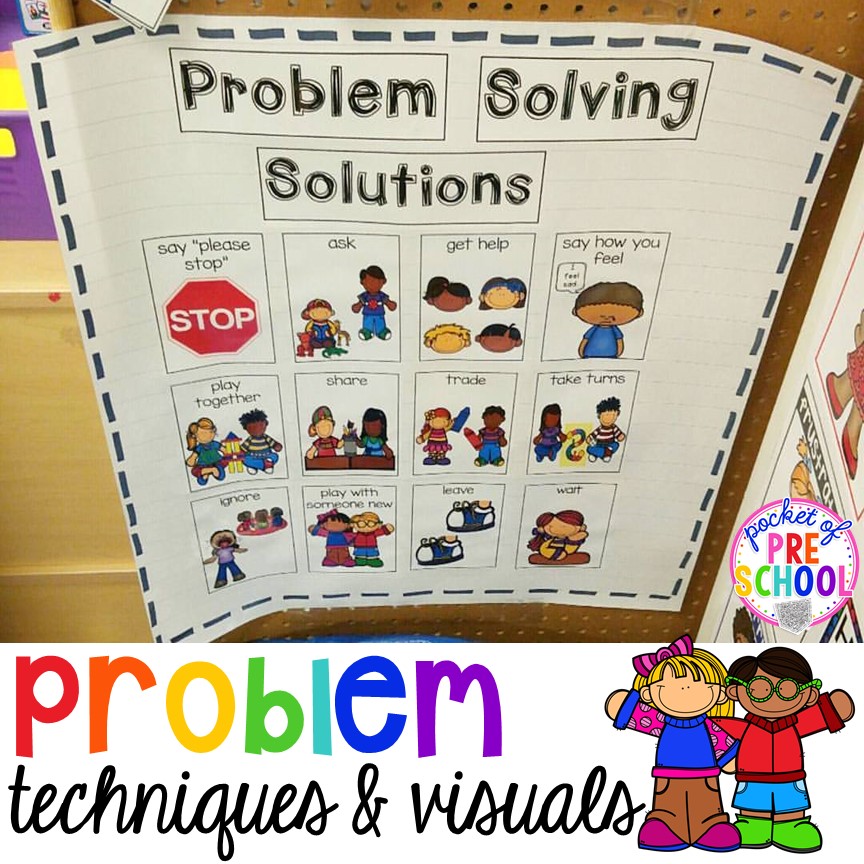
Problem solving is challenging for young students (and many adults too)! To support my little friends, I teach them problem solving strategies that they can use when they encounter a problem. We want our students to become independent thinkers who can solve problems, control their emotions, express empathy, and help others.
I introduce the problem solving techniques a few at a time during a class meeting. Each week, I introduce three new problem solving techniques. We then end up with nine to twelve techniques total based on what my students need that year. I explain the technique to the students in concrete terms so they will understand what the technique is and what it can look/sound like.
We usually start with these four skills: “please stop”, ask, get help, and say how you feel. Many problems can be solved with those solutions, which is why I always start with those. Then, the following week, I introduce take turns, play together, trade, and share. Then, the last four solutions the next week.
Problem Solving Techniques
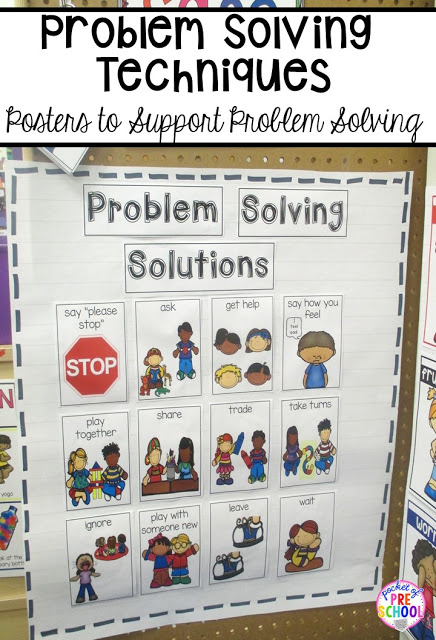
Singing with puppets is a fun and active way to practice the problem-solving techniques . Preschoolers LOVE puppets! This technique also allows students to role play. Some students will be more verbal if they can pretend to be someone else. At the end of each verse, students act out the problem-solving technique with a buddy using the puppets!As a transition activity to lunch, students took turns sharing a way they have solved a problem. You can also play, “What would you do if….”. State a real problem that could happen and have students pick a problem-solving solution to solve the problem. Some examples would be, “What would you do if your friend took your book?”, “What would you do if you got sticky glue on your hands?”, or “What would you do if you needed the red marker and your friend was coloring with it?” Once they have learned the strategies, stand back and let students try solving their own problems independently. Just a warning: this can take some time with lots of practice and support. As long as the student isn’t frustrated, let them try before you jump in to help. You will be amazed at the problems your child can solve given the opportunity to.
At first, you will be giving students lots of support and giving them the words to use to solve a problem.
- Always approach students at their level, in a calm supporting way.
- Ask, “what’s the problem?” If they don’t respond, comment on what you see such as “I see you have glue all over your hands and it looks sticky.”
- Restate the problem. “So the problem is ….”
- Brainstorm solutions and choose one together. This is the perfect time to use problem solving card visuals! “How can we solve this problem?” Flip through the solution cards and ask “Could we ….?”
- Praise and observe! Cheer on the students for solving the problem and stay close just in case they need more support.
Throughout the day, try to make EVERYTHING a problem to solve. Then model, talk through your thinking out loud, and use visuals to support students as they try to solve a problem. For example, I may put out a big ball of playdough in the center of the table as a small group activity. Students have to problem solve so each student has play dough to play with. It only takes few extra minutes to sneak in problem-solving situations throughout the day. Each time students help solve a problem or observe a friend solve a problem, they learn to self-regulate, express emotions appropriately, develop empathy, and develop problem-solving skills.
State problems for students who look stuck. If a student is just standing there, they need support, but don’t solve the problem for them! It’s so easy to do. Simply state their problem or what you see and ask a probing question. For example, if a student is standing with an empty bowl in their hand, you could say “Your snack spilled on the floor. How can you solve the problem?”
Problem-Solving Necklace or Mini Book!
I hole punched the small cards, put them on a book ring and keep them on a lanyard I wear every day. This way I can support students’ solving problems without having to go to the safe place where they are posted. I can just show the picture cards as a visual on my necklace. The mini book in the safe place works the same way.
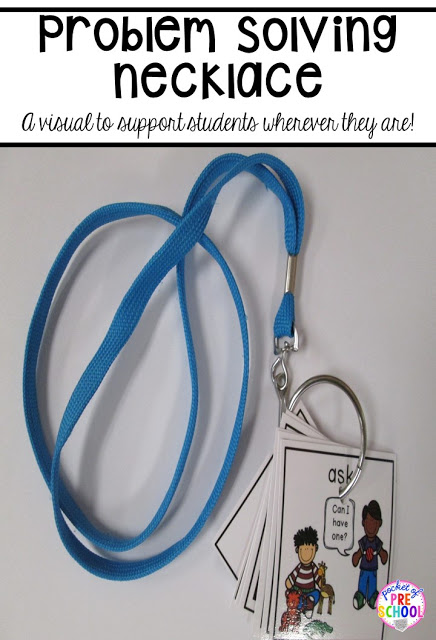
Safe Place!
I keep my techniques posted in my circle area at the beginning of the year AND in my safe place. My safe place is a small spot in my classroom where students can go when they are upset, need to calm down, want to be alone, or have a problem.
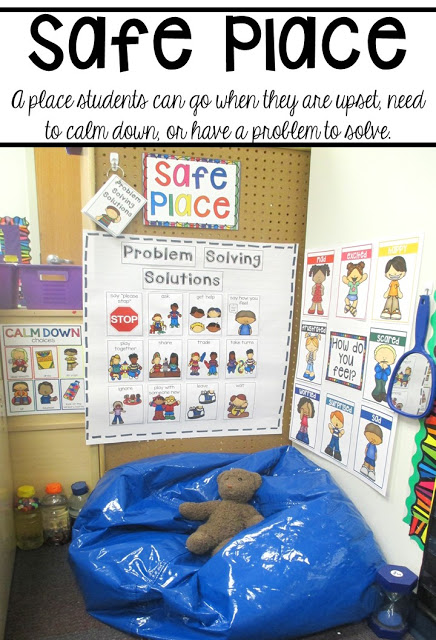
Once I see students using the problem-solving techniques independently, I remove them from my circle area. They are posted in my safe place ALL YEAR LONG for students to use when they are struggling to solve a problem. In my safe place, you will find a mirror, feeling chart, bean bag, sensory bottles, calm down choices, a stuffed animal, problem solving mini book and problem-solving techniques chart. You can read all about how to set up a safe place in your classroom HERE . Children’s Books!
These are some of my FAVORITE children’s books to teach all about problem-solving. As we read the book, we talk about how the character is or isn’t solving the problem, how it makes the character and others feel, any natural consequences that could occur, and which one of our problem-solving strategies the character could use to solve the problem.
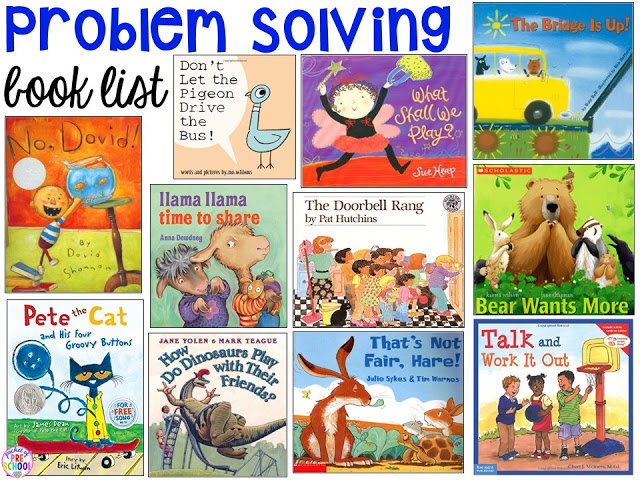
Do you want to use them in your classroom? You can! I did the work for you. Grab them from my TPT store HERE .
LOVE it? Pin this image!
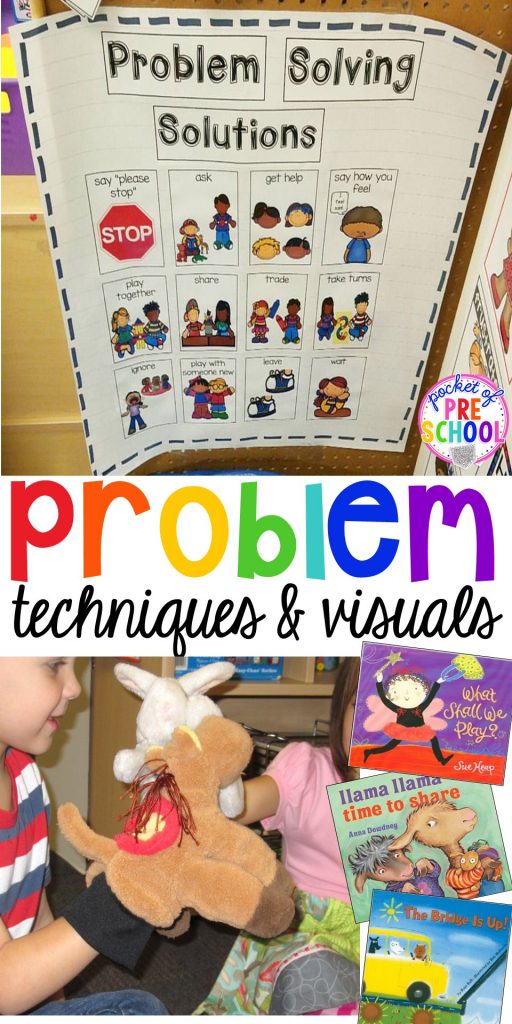
hey, i’m jackie!
I’m Jackie, your go-to girl for early childhood inspiration and research-based curriculum.
Similar Posts
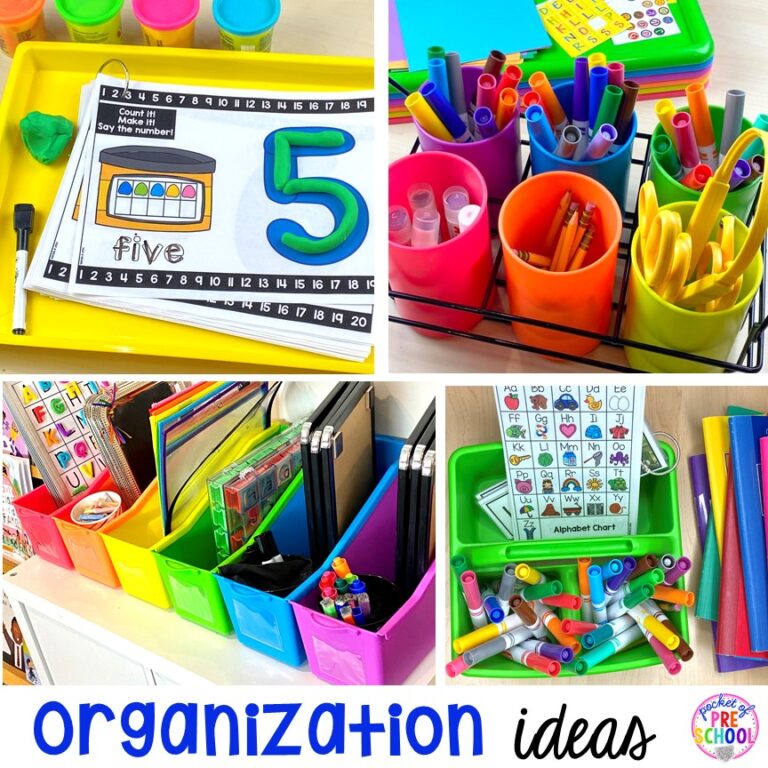
Favorite Lakeshore Organization Hacks
TRUTH: Being a teacher or teacher mom is hard! However, when you are organized it is so much easier! You can grab what you need quickly and save a ton…

Building Skills & Learning at Home: Parent Handouts (aka FUN homework for preschoolers)
Parents are a child’s first teacher. Building skills and learning at home is paramount for kids of all ages to be successful. I created Building Skills & Learning at Home:…
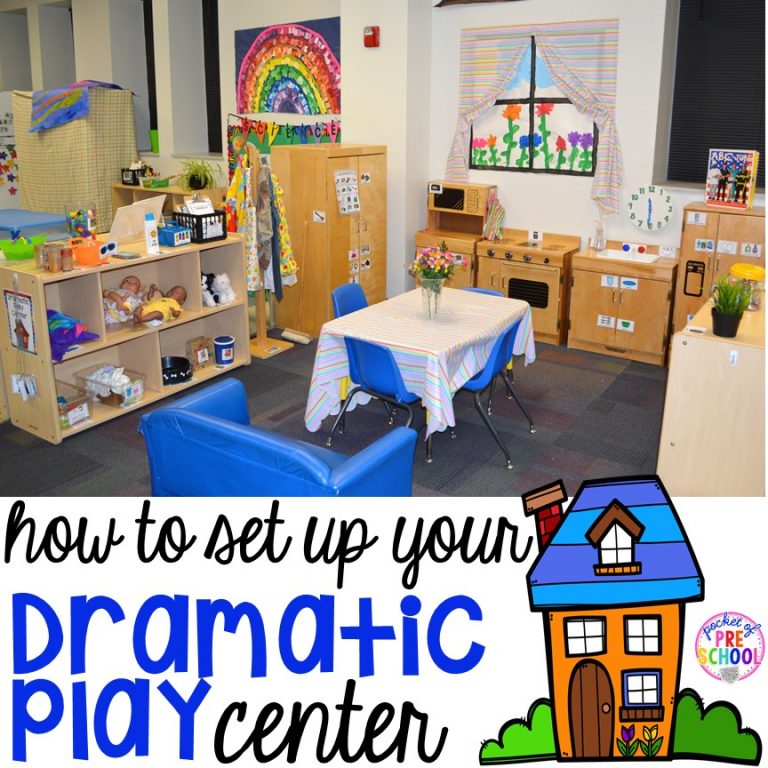
How to Set up the Dramatic Play Center in an Early Childhood Classroom
The Dramatic play center is a place students can go to pretend, imagine, and be creative. Students can pretend to be anyone and do anything! This is powerful for our…
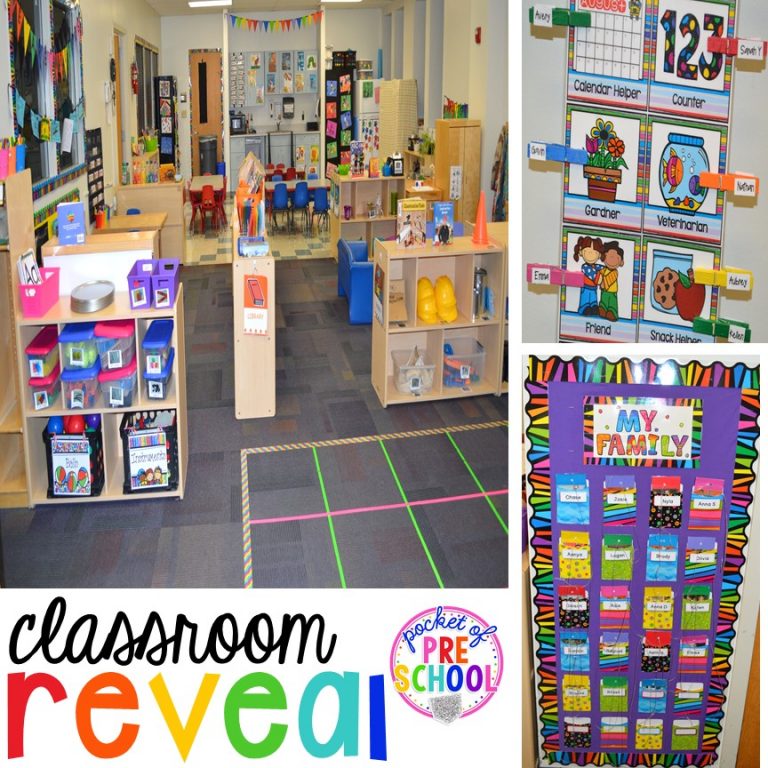
Classroom Reveal and a FREEBIE
WAHOOO! The BIG classroom reveal! I made some new additions to my rainbow classroom this year and kept all my fun makeover items from last year, too! When I was…
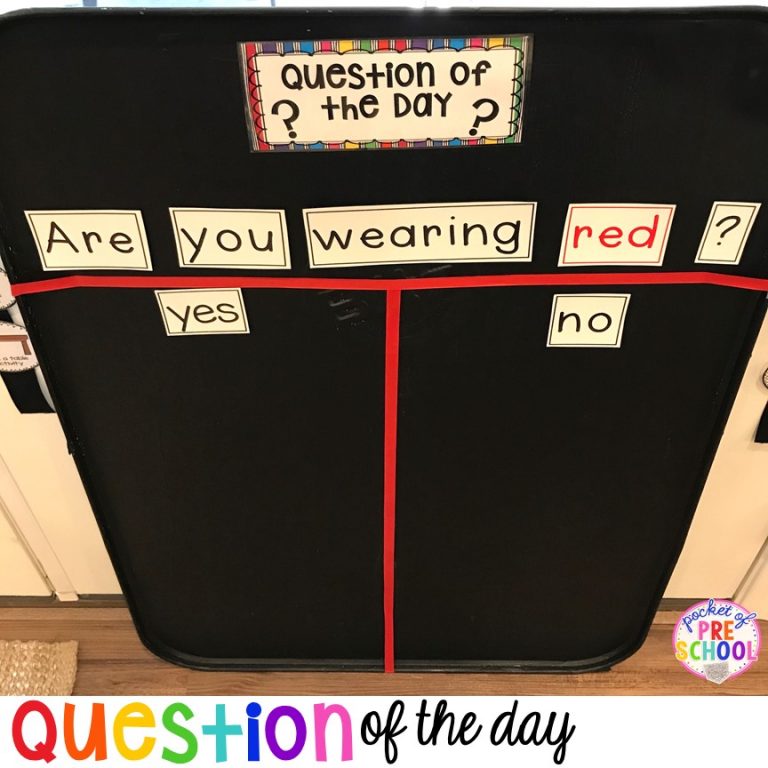
Question of the Day
Question of the Day is a fun activity to get kids learning RIGHT when they get into the classroom each morning. It is a great classroom management technique to get…
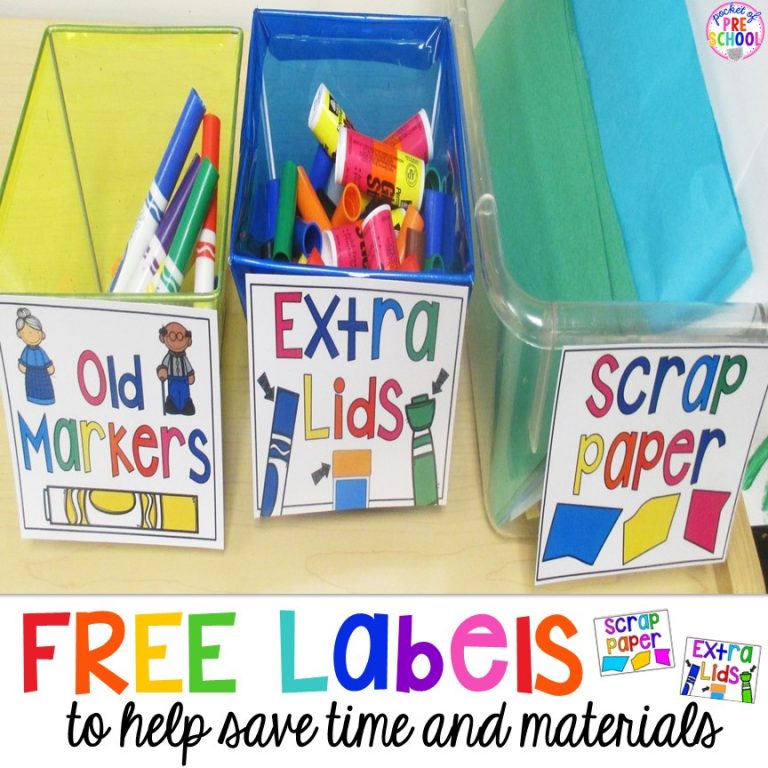
FREE Labels (Extra Lids, Paper Scraps, & Old Markers)
Every teacher knows that staying organized keeps the classroom running smoothly. It helps the teachers and students know where things are in the classroom. I want to share these FREE…
Follow On Instagram
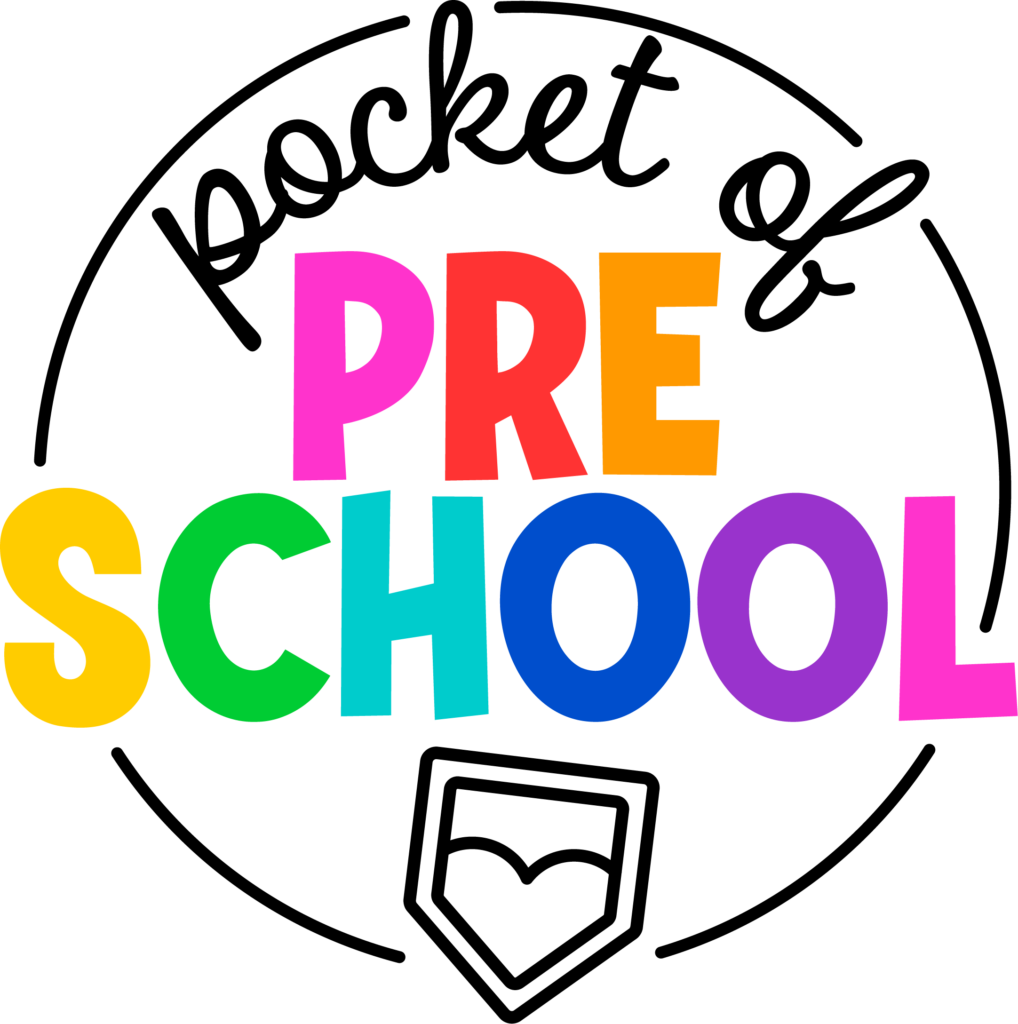
©2023 Pocket of Preschool. All Rights Reserved. Designed by Ashley Hughes
Review Cart
No products in the cart.
Dramatic Play
- SUGGESTED TOPICS
- The Magazine
- Newsletters
- Managing Yourself
- Managing Teams
- Work-life Balance
- The Big Idea
- Data & Visuals
- Reading Lists
- Case Selections
- HBR Learning
- Topic Feeds
- Account Settings
- Email Preferences
Share Podcast

Do You Understand the Problem You’re Trying to Solve?
To solve tough problems at work, first ask these questions.
- Apple Podcasts
- Google Podcasts
Problem solving skills are invaluable in any job. But all too often, we jump to find solutions to a problem without taking time to really understand the dilemma we face, according to Thomas Wedell-Wedellsborg , an expert in innovation and the author of the book, What’s Your Problem?: To Solve Your Toughest Problems, Change the Problems You Solve .
In this episode, you’ll learn how to reframe tough problems by asking questions that reveal all the factors and assumptions that contribute to the situation. You’ll also learn why searching for just one root cause can be misleading.
Key episode topics include: leadership, decision making and problem solving, power and influence, business management.
HBR On Leadership curates the best case studies and conversations with the world’s top business and management experts, to help you unlock the best in those around you. New episodes every week.
- Listen to the original HBR IdeaCast episode: The Secret to Better Problem Solving (2016)
- Find more episodes of HBR IdeaCast
- Discover 100 years of Harvard Business Review articles, case studies, podcasts, and more at HBR.org .
HANNAH BATES: Welcome to HBR on Leadership , case studies and conversations with the world’s top business and management experts, hand-selected to help you unlock the best in those around you.
Problem solving skills are invaluable in any job. But even the most experienced among us can fall into the trap of solving the wrong problem.
Thomas Wedell-Wedellsborg says that all too often, we jump to find solutions to a problem – without taking time to really understand what we’re facing.
He’s an expert in innovation, and he’s the author of the book, What’s Your Problem?: To Solve Your Toughest Problems, Change the Problems You Solve .
In this episode, you’ll learn how to reframe tough problems, by asking questions that reveal all the factors and assumptions that contribute to the situation. You’ll also learn why searching for one root cause can be misleading. And you’ll learn how to use experimentation and rapid prototyping as problem-solving tools.
This episode originally aired on HBR IdeaCast in December 2016. Here it is.
SARAH GREEN CARMICHAEL: Welcome to the HBR IdeaCast from Harvard Business Review. I’m Sarah Green Carmichael.
Problem solving is popular. People put it on their resumes. Managers believe they excel at it. Companies count it as a key proficiency. We solve customers’ problems.
The problem is we often solve the wrong problems. Albert Einstein and Peter Drucker alike have discussed the difficulty of effective diagnosis. There are great frameworks for getting teams to attack true problems, but they’re often hard to do daily and on the fly. That’s where our guest comes in.
Thomas Wedell-Wedellsborg is a consultant who helps companies and managers reframe their problems so they can come up with an effective solution faster. He asks the question “Are You Solving The Right Problems?” in the January-February 2017 issue of Harvard Business Review. Thomas, thank you so much for coming on the HBR IdeaCast .
THOMAS WEDELL-WEDELLSBORG: Thanks for inviting me.
SARAH GREEN CARMICHAEL: So, I thought maybe we could start by talking about the problem of talking about problem reframing. What is that exactly?
THOMAS WEDELL-WEDELLSBORG: Basically, when people face a problem, they tend to jump into solution mode to rapidly, and very often that means that they don’t really understand, necessarily, the problem they’re trying to solve. And so, reframing is really a– at heart, it’s a method that helps you avoid that by taking a second to go in and ask two questions, basically saying, first of all, wait. What is the problem we’re trying to solve? And then crucially asking, is there a different way to think about what the problem actually is?
SARAH GREEN CARMICHAEL: So, I feel like so often when this comes up in meetings, you know, someone says that, and maybe they throw out the Einstein quote about you spend an hour of problem solving, you spend 55 minutes to find the problem. And then everyone else in the room kind of gets irritated. So, maybe just give us an example of maybe how this would work in practice in a way that would not, sort of, set people’s teeth on edge, like oh, here Sarah goes again, reframing the whole problem instead of just solving it.
THOMAS WEDELL-WEDELLSBORG: I mean, you’re bringing up something that’s, I think is crucial, which is to create legitimacy for the method. So, one of the reasons why I put out the article is to give people a tool to say actually, this thing is still important, and we need to do it. But I think the really critical thing in order to make this work in a meeting is actually to learn how to do it fast, because if you have the idea that you need to spend 30 minutes in a meeting delving deeply into the problem, I mean, that’s going to be uphill for most problems. So, the critical thing here is really to try to make it a practice you can implement very, very rapidly.
There’s an example that I would suggest memorizing. This is the example that I use to explain very rapidly what it is. And it’s basically, I call it the slow elevator problem. You imagine that you are the owner of an office building, and that your tenants are complaining that the elevator’s slow.
Now, if you take that problem framing for granted, you’re going to start thinking creatively around how do we make the elevator faster. Do we install a new motor? Do we have to buy a new lift somewhere?
The thing is, though, if you ask people who actually work with facilities management, well, they’re going to have a different solution for you, which is put up a mirror next to the elevator. That’s what happens is, of course, that people go oh, I’m busy. I’m busy. I’m– oh, a mirror. Oh, that’s beautiful.
And then they forget time. What’s interesting about that example is that the idea with a mirror is actually a solution to a different problem than the one you first proposed. And so, the whole idea here is once you get good at using reframing, you can quickly identify other aspects of the problem that might be much better to try to solve than the original one you found. It’s not necessarily that the first one is wrong. It’s just that there might be better problems out there to attack that we can, means we can do things much faster, cheaper, or better.
SARAH GREEN CARMICHAEL: So, in that example, I can understand how A, it’s probably expensive to make the elevator faster, so it’s much cheaper just to put up a mirror. And B, maybe the real problem people are actually feeling, even though they’re not articulating it right, is like, I hate waiting for the elevator. But if you let them sort of fix their hair or check their teeth, they’re suddenly distracted and don’t notice.
But if you have, this is sort of a pedestrian example, but say you have a roommate or a spouse who doesn’t clean up the kitchen. Facing that problem and not having your elegant solution already there to highlight the contrast between the perceived problem and the real problem, how would you take a problem like that and attack it using this method so that you can see what some of the other options might be?
THOMAS WEDELL-WEDELLSBORG: Right. So, I mean, let’s say it’s you who have that problem. I would go in and say, first of all, what would you say the problem is? Like, if you were to describe your view of the problem, what would that be?
SARAH GREEN CARMICHAEL: I hate cleaning the kitchen, and I want someone else to clean it up.
THOMAS WEDELL-WEDELLSBORG: OK. So, my first observation, you know, that somebody else might not necessarily be your spouse. So, already there, there’s an inbuilt assumption in your question around oh, it has to be my husband who does the cleaning. So, it might actually be worth, already there to say, is that really the only problem you have? That you hate cleaning the kitchen, and you want to avoid it? Or might there be something around, as well, getting a better relationship in terms of how you solve problems in general or establishing a better way to handle small problems when dealing with your spouse?
SARAH GREEN CARMICHAEL: Or maybe, now that I’m thinking that, maybe the problem is that you just can’t find the stuff in the kitchen when you need to find it.
THOMAS WEDELL-WEDELLSBORG: Right, and so that’s an example of a reframing, that actually why is it a problem that the kitchen is not clean? Is it only because you hate the act of cleaning, or does it actually mean that it just takes you a lot longer and gets a lot messier to actually use the kitchen, which is a different problem. The way you describe this problem now, is there anything that’s missing from that description?
SARAH GREEN CARMICHAEL: That is a really good question.
THOMAS WEDELL-WEDELLSBORG: Other, basically asking other factors that we are not talking about right now, and I say those because people tend to, when given a problem, they tend to delve deeper into the detail. What often is missing is actually an element outside of the initial description of the problem that might be really relevant to what’s going on. Like, why does the kitchen get messy in the first place? Is it something about the way you use it or your cooking habits? Is it because the neighbor’s kids, kind of, use it all the time?
There might, very often, there might be issues that you’re not really thinking about when you first describe the problem that actually has a big effect on it.
SARAH GREEN CARMICHAEL: I think at this point it would be helpful to maybe get another business example, and I’m wondering if you could tell us the story of the dog adoption problem.
THOMAS WEDELL-WEDELLSBORG: Yeah. This is a big problem in the US. If you work in the shelter industry, basically because dogs are so popular, more than 3 million dogs every year enter a shelter, and currently only about half of those actually find a new home and get adopted. And so, this is a problem that has persisted. It’s been, like, a structural problem for decades in this space. In the last three years, where people found new ways to address it.
So a woman called Lori Weise who runs a rescue organization in South LA, and she actually went in and challenged the very idea of what we were trying to do. She said, no, no. The problem we’re trying to solve is not about how to get more people to adopt dogs. It is about keeping the dogs with their first family so they never enter the shelter system in the first place.
In 2013, she started what’s called a Shelter Intervention Program that basically works like this. If a family comes and wants to hand over their dog, these are called owner surrenders. It’s about 30% of all dogs that come into a shelter. All they would do is go up and ask, if you could, would you like to keep your animal? And if they said yes, they would try to fix whatever helped them fix the problem, but that made them turn over this.
And sometimes that might be that they moved into a new building. The landlord required a deposit, and they simply didn’t have the money to put down a deposit. Or the dog might need a $10 rabies shot, but they didn’t know how to get access to a vet.
And so, by instigating that program, just in the first year, she took her, basically the amount of dollars they spent per animal they helped went from something like $85 down to around $60. Just an immediate impact, and her program now is being rolled out, is being supported by the ASPCA, which is one of the big animal welfare stations, and it’s being rolled out to various other places.
And I think what really struck me with that example was this was not dependent on having the internet. This was not, oh, we needed to have everybody mobile before we could come up with this. This, conceivably, we could have done 20 years ago. Only, it only happened when somebody, like in this case Lori, went in and actually rethought what the problem they were trying to solve was in the first place.
SARAH GREEN CARMICHAEL: So, what I also think is so interesting about that example is that when you talk about it, it doesn’t sound like the kind of thing that would have been thought of through other kinds of problem solving methods. There wasn’t necessarily an After Action Review or a 5 Whys exercise or a Six Sigma type intervention. I don’t want to throw those other methods under the bus, but how can you get such powerful results with such a very simple way of thinking about something?
THOMAS WEDELL-WEDELLSBORG: That was something that struck me as well. This, in a way, reframing and the idea of the problem diagnosis is important is something we’ve known for a long, long time. And we’ve actually have built some tools to help out. If you worked with us professionally, you are familiar with, like, Six Sigma, TRIZ, and so on. You mentioned 5 Whys. A root cause analysis is another one that a lot of people are familiar with.
Those are our good tools, and they’re definitely better than nothing. But what I notice when I work with the companies applying those was those tools tend to make you dig deeper into the first understanding of the problem we have. If it’s the elevator example, people start asking, well, is that the cable strength, or is the capacity of the elevator? That they kind of get caught by the details.
That, in a way, is a bad way to work on problems because it really assumes that there’s like a, you can almost hear it, a root cause. That you have to dig down and find the one true problem, and everything else was just symptoms. That’s a bad way to think about problems because problems tend to be multicausal.
There tend to be lots of causes or levers you can potentially press to address a problem. And if you think there’s only one, if that’s the right problem, that’s actually a dangerous way. And so I think that’s why, that this is a method I’ve worked with over the last five years, trying to basically refine how to make people better at this, and the key tends to be this thing about shifting out and saying, is there a totally different way of thinking about the problem versus getting too caught up in the mechanistic details of what happens.
SARAH GREEN CARMICHAEL: What about experimentation? Because that’s another method that’s become really popular with the rise of Lean Startup and lots of other innovation methodologies. Why wouldn’t it have worked to, say, experiment with many different types of fixing the dog adoption problem, and then just pick the one that works the best?
THOMAS WEDELL-WEDELLSBORG: You could say in the dog space, that’s what’s been going on. I mean, there is, in this industry and a lot of, it’s largely volunteer driven. People have experimented, and they found different ways of trying to cope. And that has definitely made the problem better. So, I wouldn’t say that experimentation is bad, quite the contrary. Rapid prototyping, quickly putting something out into the world and learning from it, that’s a fantastic way to learn more and to move forward.
My point is, though, that I feel we’ve come to rely too much on that. There’s like, if you look at the start up space, the wisdom is now just to put something quickly into the market, and then if it doesn’t work, pivot and just do more stuff. What reframing really is, I think of it as the cognitive counterpoint to prototyping. So, this is really a way of seeing very quickly, like not just working on the solution, but also working on our understanding of the problem and trying to see is there a different way to think about that.
If you only stick with experimentation, again, you tend to sometimes stay too much in the same space trying minute variations of something instead of taking a step back and saying, wait a minute. What is this telling us about what the real issue is?
SARAH GREEN CARMICHAEL: So, to go back to something that we touched on earlier, when we were talking about the completely hypothetical example of a spouse who does not clean the kitchen–
THOMAS WEDELL-WEDELLSBORG: Completely, completely hypothetical.
SARAH GREEN CARMICHAEL: Yes. For the record, my husband is a great kitchen cleaner.
You started asking me some questions that I could see immediately were helping me rethink that problem. Is that kind of the key, just having a checklist of questions to ask yourself? How do you really start to put this into practice?
THOMAS WEDELL-WEDELLSBORG: I think there are two steps in that. The first one is just to make yourself better at the method. Yes, you should kind of work with a checklist. In the article, I kind of outlined seven practices that you can use to do this.
But importantly, I would say you have to consider that as, basically, a set of training wheels. I think there’s a big, big danger in getting caught in a checklist. This is something I work with.
My co-author Paddy Miller, it’s one of his insights. That if you start giving people a checklist for things like this, they start following it. And that’s actually a problem, because what you really want them to do is start challenging their thinking.
So the way to handle this is to get some practice using it. Do use the checklist initially, but then try to step away from it and try to see if you can organically make– it’s almost a habit of mind. When you run into a colleague in the hallway and she has a problem and you have five minutes, like, delving in and just starting asking some of those questions and using your intuition to say, wait, how is she talking about this problem? And is there a question or two I can ask her about the problem that can help her rethink it?
SARAH GREEN CARMICHAEL: Well, that is also just a very different approach, because I think in that situation, most of us can’t go 30 seconds without jumping in and offering solutions.
THOMAS WEDELL-WEDELLSBORG: Very true. The drive toward solutions is very strong. And to be clear, I mean, there’s nothing wrong with that if the solutions work. So, many problems are just solved by oh, you know, oh, here’s the way to do that. Great.
But this is really a powerful method for those problems where either it’s something we’ve been banging our heads against tons of times without making progress, or when you need to come up with a really creative solution. When you’re facing a competitor with a much bigger budget, and you know, if you solve the same problem later, you’re not going to win. So, that basic idea of taking that approach to problems can often help you move forward in a different way than just like, oh, I have a solution.
I would say there’s also, there’s some interesting psychological stuff going on, right? Where you may have tried this, but if somebody tries to serve up a solution to a problem I have, I’m often resistant towards them. Kind if like, no, no, no, no, no, no. That solution is not going to work in my world. Whereas if you get them to discuss and analyze what the problem really is, you might actually dig something up.
Let’s go back to the kitchen example. One powerful question is just to say, what’s your own part in creating this problem? It’s very often, like, people, they describe problems as if it’s something that’s inflicted upon them from the external world, and they are innocent bystanders in that.
SARAH GREEN CARMICHAEL: Right, or crazy customers with unreasonable demands.
THOMAS WEDELL-WEDELLSBORG: Exactly, right. I don’t think I’ve ever met an agency or consultancy that didn’t, like, gossip about their customers. Oh, my god, they’re horrible. That, you know, classic thing, why don’t they want to take more risk? Well, risk is bad.
It’s their business that’s on the line, not the consultancy’s, right? So, absolutely, that’s one of the things when you step into a different mindset and kind of, wait. Oh yeah, maybe I actually am part of creating this problem in a sense, as well. That tends to open some new doors for you to move forward, in a way, with stuff that you may have been struggling with for years.
SARAH GREEN CARMICHAEL: So, we’ve surfaced a couple of questions that are useful. I’m curious to know, what are some of the other questions that you find yourself asking in these situations, given that you have made this sort of mental habit that you do? What are the questions that people seem to find really useful?
THOMAS WEDELL-WEDELLSBORG: One easy one is just to ask if there are any positive exceptions to the problem. So, was there day where your kitchen was actually spotlessly clean? And then asking, what was different about that day? Like, what happened there that didn’t happen the other days? That can very often point people towards a factor that they hadn’t considered previously.
SARAH GREEN CARMICHAEL: We got take-out.
THOMAS WEDELL-WEDELLSBORG: S,o that is your solution. Take-out from [INAUDIBLE]. That might have other problems.
Another good question, and this is a little bit more high level. It’s actually more making an observation about labeling how that person thinks about the problem. And what I mean with that is, we have problem categories in our head. So, if I say, let’s say that you describe a problem to me and say, well, we have a really great product and are, it’s much better than our previous product, but people aren’t buying it. I think we need to put more marketing dollars into this.
Now you can go in and say, that’s interesting. This sounds like you’re thinking of this as a communications problem. Is there a different way of thinking about that? Because you can almost tell how, when the second you say communications, there are some ideas about how do you solve a communications problem. Typically with more communication.
And what you might do is go in and suggest, well, have you considered that it might be, say, an incentive problem? Are there incentives on behalf of the purchasing manager at your clients that are obstructing you? Might there be incentive issues with your own sales force that makes them want to sell the old product instead of the new one?
So literally, just identifying what type of problem does this person think about, and is there different potential way of thinking about it? Might it be an emotional problem, a timing problem, an expectations management problem? Thinking about what label of what type of problem that person is kind of thinking as it of.
SARAH GREEN CARMICHAEL: That’s really interesting, too, because I think so many of us get requests for advice that we’re really not qualified to give. So, maybe the next time that happens, instead of muddying my way through, I will just ask some of those questions that we talked about instead.
THOMAS WEDELL-WEDELLSBORG: That sounds like a good idea.
SARAH GREEN CARMICHAEL: So, Thomas, this has really helped me reframe the way I think about a couple of problems in my own life, and I’m just wondering. I know you do this professionally, but is there a problem in your life that thinking this way has helped you solve?
THOMAS WEDELL-WEDELLSBORG: I’ve, of course, I’ve been swallowing my own medicine on this, too, and I think I have, well, maybe two different examples, and in one case somebody else did the reframing for me. But in one case, when I was younger, I often kind of struggled a little bit. I mean, this is my teenage years, kind of hanging out with my parents. I thought they were pretty annoying people. That’s not really fair, because they’re quite wonderful, but that’s what life is when you’re a teenager.
And one of the things that struck me, suddenly, and this was kind of the positive exception was, there was actually an evening where we really had a good time, and there wasn’t a conflict. And the core thing was, I wasn’t just seeing them in their old house where I grew up. It was, actually, we were at a restaurant. And it suddenly struck me that so much of the sometimes, kind of, a little bit, you love them but they’re annoying kind of dynamic, is tied to the place, is tied to the setting you are in.
And of course, if– you know, I live abroad now, if I visit my parents and I stay in my old bedroom, you know, my mother comes in and wants to wake me up in the morning. Stuff like that, right? And it just struck me so, so clearly that it’s– when I change this setting, if I go out and have dinner with them at a different place, that the dynamic, just that dynamic disappears.
SARAH GREEN CARMICHAEL: Well, Thomas, this has been really, really helpful. Thank you for talking with me today.
THOMAS WEDELL-WEDELLSBORG: Thank you, Sarah.
HANNAH BATES: That was Thomas Wedell-Wedellsborg in conversation with Sarah Green Carmichael on the HBR IdeaCast. He’s an expert in problem solving and innovation, and he’s the author of the book, What’s Your Problem?: To Solve Your Toughest Problems, Change the Problems You Solve .
We’ll be back next Wednesday with another hand-picked conversation about leadership from the Harvard Business Review. If you found this episode helpful, share it with your friends and colleagues, and follow our show on Apple Podcasts, Spotify, or wherever you get your podcasts. While you’re there, be sure to leave us a review.
We’re a production of Harvard Business Review. If you want more podcasts, articles, case studies, books, and videos like this, find it all at HBR dot org.
This episode was produced by Anne Saini, and me, Hannah Bates. Ian Fox is our editor. Music by Coma Media. Special thanks to Maureen Hoch, Adi Ignatius, Karen Player, Ramsey Khabbaz, Nicole Smith, Anne Bartholomew, and you – our listener.
See you next week.
- Subscribe On:
Latest in this series
This article is about leadership.
- Decision making and problem solving
- Power and influence
- Business management
Partner Center
ORIGINAL RESEARCH article
This article is part of the research topic.
Research on Teaching Strategies and Skills in Different Educational Stages
BIOTECHNOLOGY PROJECT-BASED LEARNING ENCOURAGES LEARNING AND MATHEMATICS APPLICATION Provisionally Accepted

- 1 Universidad Técnica Particular de Loja, Ecuador
The final, formatted version of the article will be published soon.
Project-based learning (PBL) is a promising approach to enhance mathematics learning concepts in higher education. Here, teachers provide guidance and support to PBL implementation. The objective of this study was to develop PBL-based biotechnological projects as a strategy for mathematics learning. The methodology design was applied to 111 university students from Biochemical, Chemical Engineering and Business Administration careers. Knowledge, skills, perceptions, and engagement were measured through questionnaires, workshops, rubrics, and survey instruments. As a result, the paired comparison between tests, questionnaires and project shows significant differences (P<.001) between the experimental group and the control group. It is concluded that the teaching of mathematics should be oriented to the development of competencies, abilities, and skills that allow students to generate real solutions and broaden their vision of the applicability of their knowledge using new learning strategies. Key words: Mathematical models, Biotechnology, Project based learning.Science, technology, engineering, and mathematics (STEM) education has become a crucial topic both inside and outside of school (Han et al., 2015). Currently, mathematics learning tends to be oriented towards textbooks, and students can only work on math problems based on what the teacher exemplifies; however, if given different contextbased problems, they will have difficulty solving them (Fisher et al., 2020). Likewise, the traditional classroom model does not encourage student's interest in STEM (Sahin, 2009) The research gap is between what students learn at the university and what they really need in the workplace (Holmes et al., 2015). Higher education institutions have been trying to provide students with both (i) hard skills, such as cognitive knowledge and professional skills (Vogler et al., 2018), and (ii) soft skills, such as problem-solving and teamwork (Lennox and Roos 2017). However, these skills are difficult to achieve through traditional learning. One learning that creates an active, collaborative atmosphere, and can increase selfconfidence in students is Project-based learning (PBL) (Cruz et al., 2022; Guo et al., 2022;Markula and Aksela 2022). The PBL method is applied as a teaching model that involves
Keywords: Mathematical Models, Biotechnology, Project Based Learning (PBL), Learning, Learning mathematics activities
Received: 02 Jan 2024; Accepted: 03 Apr 2024.
Copyright: © 2024 Vivanco and Jiménez-Gaona. This is an open-access article distributed under the terms of the Creative Commons Attribution License (CC BY) . The use, distribution or reproduction in other forums is permitted, provided the original author(s) or licensor are credited and that the original publication in this journal is cited, in accordance with accepted academic practice. No use, distribution or reproduction is permitted which does not comply with these terms.
* Correspondence: Mr. Oscar A. Vivanco, Universidad Técnica Particular de Loja, Loja, Ecuador
People also looked at

IMAGES
VIDEO
COMMENTS
Become Problem Solvers. With this activity, hide a problem picture inside each manila envelope. In groups, students will take the problem out of the envelope, and together, they'll discuss what the problem is. Then, they'll come up with the best solution for that problem. Groups of students will do all six envelopes together.
Make students articulate their problem solving process . In a one-on-one tutoring session, ask the student to work his/her problem out loud. This slows down the thinking process, making it more accurate and allowing you to access understanding. When working with larger groups you can ask students to provide a written "two-column solution.".
Initially, you will want to make it personal. Allow students to connect to the concept by facilitating a discussion on challenges. Have students share with the class, or turn and talk about simple challenges they have faced and how they reacted to them. Here are a few ideas to start with during the students' turn and talk.
Here are the steps to problem-solving: . Identify the problem. Just stating the problem out loud can make a big difference for kids who are feeling stuck. Help your child state the problem, such as, "You don't have anyone to play with at recess," or "You aren't sure if you should take the advanced math class."
Teach problem-solving skills in the context in which they will be used by students (e.g., mole fraction calculations in a chemistry course). ... and tables needed to solve the problem. Plan a solution. Consider possible strategies. Often, the type of solution will be determined by the type of problem. Some common problem-solving strategies are ...
By naming what it is they did to solve the problem, students can be more independent and productive as they apply and adapt their thinking when engaging in future complex tasks. After a few weeks ...
Aaron: "Yeah.". He proceeded to get paper towels and try to figure out how to use them to clean the whole spill. Teacher: "I think you might need to throw those away and get some more.". Aaron started to carry a drippy clump of paper towels across the room and leave a lovely trail of water.
Resolve Conflicts. In addition to increased social and emotional skills like self-efficacy and goal-setting, problem-solving skills teach students how to cooperate with others and work through disagreements and conflicts. Problem-solving promotes "thinking outside the box" and approaching a conflict by searching for different solutions.
Working on solutions. In the solution phase, one develops and then implements a coherent plan for solving the problem. As you help students with this phase, you might ask them to: identify the general model or procedure they have in mind for solving the problem. set sub-goals for solving the problem. identify necessary operations and steps.
Problem-Solving Fellows Program Undergraduate students who are currently or plan to be peer educators (e.g., UTAs, lab TAs, peer mentors, etc.) are encouraged to take the course, UNIV 1110: The Theory and Teaching of Problem Solving. Within this course, we focus on developing effective problem solvers through students' teaching practices.
1. Creativity: Effective problem solving requires the ability to brainstorm solutions and think outside the box to arrive at new approaches to longstanding problems. 2. Teamwork: Addressing a group problem or systemic social problem requires you to work collaboratively and supportively with other team members. 3.
The memory motions we used for problem and solution were very simple. We did a sad face and a thumbs down for problem and a big smile and a thumbs up for solution. This week was a 4 day week (yay!), so we read a read aloud together everyday, did a quick problem and solution match, and then charted the problem and solution. Here are the books we ...
How does it work? Step 1: Identify a PROBLEM you encounter in your teaching. Step 2: Identify possible REASONS for the problem Step 3: Explore STRATEGIES to address the problem. This site supplements our 1-on-1 teaching consultations. CONTACT US to talk with an Eberly colleague in person!
One Word from Sophia by Jim Averbeck, illustrated by Yasmeen Ismail. This picture book is a great way to teach kids summarizing and word choice as well as a problem-solution text structure! Sophia really wants a pet giraffe for her birthday. As a result, she sets out to convince her family, starting with her mother, a judge.
2. Problem-solving as a group. Have your students create and decorate a medium-sized box with a slot in the top. Label the box "The Problem-Solving Box.". Invite students to anonymously write down and submit any problem or issue they might be having at school or at home, ones that they can't seem to figure out on their own.
Identifying the problem the character (s) is experiencing in the beginning of the story. Asking questions and making predictions about possible upcoming events and about possible ways to solve the problem. Understanding how the events and characters influence the problem throughout the story. Describing the solution includes: Confirming or ...
Take the topic you discussed in lesson 2 or a new topic, and using the "Solutions" list brainstorm possible solutions for that problem. You might start with solutions that have already been tried, and then move to creative solutions. 1. Divide into groups of 3-4. Assign each group a problem discussed previously or have them pick one of the ...
4. "Morecabulary". From Hacking the Common Core: 10 Strategies for Amazing Learning in a Standardized World. The Problem: Students need to grow their vocabulary in all subject areas, but our most common methods of vocabulary instruction are dry and don't lead to long-term retention.
When teaching kids how to comprehend and/or write fiction text, often times it's good to start with books and stories that have a clear problem and solution text structure.. This means that the story line introduces characters and a problem at the beginning -> the character(s) try to solve the problem in the middle, which rises to a climax -> and at the end, the problem is solved, with ...
Come up with some great ideas of problems and solutions. Fire = Firetruck. Rain = Umbrella. Sun = Lemonade. Grass = Lawn Mower. Dirty Dog = Soap & Sponge. Cut out pictures of these items and more as you come up with different ideas, and allow your students to make matches of problems and solutions.
As Mr. Frank looked on, Ms. Sneed scrolled down. "When we teach problem and solution text structure," she said, "we ask kids to look for a difficult situation and steps taken to resolve it. To help them understand, our graphic organizer uses a question mark, an arrow, and an exclamation point.". "Then kids study a sample paragraph ...
Exploring picture books with problem and solution plots helps them see a problem being introduced, how the character (s) try to solve it and how they finally resolve the issue. In picture books with problem and solution scenarios, your students will see characters who: use knowledge to solve problems independently. predict outcomes.
Cheer on the students for solving the problem and stay close just in case they need more support. Throughout the day, try to make EVERYTHING a problem to solve. Then model, talk through your thinking out loud, and use visuals to support students as they try to solve a problem. For example, I may put out a big ball of playdough in the center of ...
To Solve Your Toughest Problems, Change the Problems You Solve. In this episode, you'll learn how to reframe tough problems by asking questions that reveal all the factors and assumptions that ...
While P. Mohana Shankar, PhD, was teaching differential equations to engineering students back in 2010, he assigned them to solve a standard question. Since the solution to the problem also required explanation and interpretation, Shankar wondered whether students, specifically each student, would learn more if provided with a different question.
Project-based learning (PBL) is a promising approach to enhance mathematics learning concepts in higher education. Here, teachers provide guidance and support to PBL implementation. The objective of this study was to develop PBL-based biotechnological projects as a strategy for mathematics learning. The methodology design was applied to 111 university students from Biochemical, Chemical ...